597 papers:
 CASE-2015-LiYTC #architecture #fault
CASE-2015-LiYTC #architecture #fault- Extracting relevant features for diagnosing machine tool faults in cloud architecture (YYL, HCY, HT, FTC), pp. 1434–1439.
 DAC-2015-ChaariENTK #approach #modelling #safety
DAC-2015-ChaariENTK #approach #modelling #safety- A model-based and simulation-assisted FMEDA approach for safety-relevant E/E systems (MC, WE, CN, BAT, TK), p. 6.
 DATE-2015-HernandezA #low cost #safety
DATE-2015-HernandezA #low cost #safety- Low-cost checkpointing in automotive safety-relevant systems (CH, JA), pp. 91–96.
 ICSME-2015-ValeM #architecture #dynamic analysis #mining #named #using
ICSME-2015-ValeM #architecture #dynamic analysis #mining #named #using- Keecle: Mining key architecturally relevant classes using dynamic analysis (LdNV, MdAM), pp. 566–570.
 SANER-2015-JiangPWXZ
SANER-2015-JiangPWXZ- Summarizing Evolutionary Trajectory by Grouping and Aggregating relevant code changes (QJ, XP, HW, ZX, WZ), pp. 361–370.
 SANER-2015-SharmaTL #automation #identification #named #twitter
SANER-2015-SharmaTL #automation #identification #named #twitter- NIRMAL: Automatic identification of software relevant tweets leveraging language model (AS, YT, DL), pp. 449–458.
 CHI-2015-Cramer #quality
CHI-2015-Cramer #quality- Effects of Ad Quality & Content-Relevance on Perceived Content Quality (HC), pp. 2231–2234.
 CSCW-2015-Diakopoulos #editing
CSCW-2015-Diakopoulos #editing- The Editor’s Eye: Curation and Comment Relevance on the New York Times (NAD), pp. 1153–1157.
 LCT-2015-RodriguezOD #hybrid #learning #recommendation #repository #student
LCT-2015-RodriguezOD #hybrid #learning #recommendation #repository #student- A Student-Centered Hybrid Recommender System to Provide Relevant Learning Objects from Repositories (PAR, DAO, NDD), pp. 291–300.
 ECIR-2015-MaddalenaMST #estimation #using
ECIR-2015-MaddalenaMST #estimation #using- Judging Relevance Using Magnitude Estimation (EM, SM, FS, AT), pp. 215–220.
 ECIR-2015-TranAH #summary #timeline
ECIR-2015-TranAH #summary #timeline- Timeline Summarization from Relevant Headlines (GBT, MA, EH), pp. 245–256.
 ECIR-2015-ValcarcePB #case study #modelling #recommendation
ECIR-2015-ValcarcePB #case study #modelling #recommendation- A Study of Smoothing Methods for Relevance-Based Language Modelling of Recommender Systems (DV, JP, AB), pp. 346–351.
 KDD-2015-SuYSSKVY #feedback #graph
KDD-2015-SuYSSKVY #feedback #graph- Exploiting Relevance Feedback in Knowledge Graph Search (YS, SY, HS, MS, SK, MV, XY), pp. 1135–1144.
 RecSys-2015-ValcarcePB #case study #modelling #recommendation
RecSys-2015-ValcarcePB #case study #modelling #recommendation- A Study of Priors for Relevance-Based Language Modelling of Recommender Systems (DV, JP, AB), pp. 237–240.
 SEKE-2015-TironiMRM #approach #identification #learning
SEKE-2015-TironiMRM #approach #identification #learning- An approach to identify relevant subjects for supporting the Learning Scheme creation task (HT, ALAM, SSR, AM), pp. 506–511.
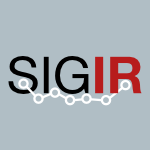 SIGIR-2015-AllegrettiMHPJP
SIGIR-2015-AllegrettiMHPJP- When Relevance Judgement is Happening?: An EEG-based Study (MA, YM, MH, FEP, JMJ, GP), pp. 719–722.
 SIGIR-2015-BadacheB #quality #social
SIGIR-2015-BadacheB #quality #social- A Priori Relevance Based On Quality and Diversity Of Social Signals (IB, MB), pp. 731–734.
 SIGIR-2015-BastBH
SIGIR-2015-BastBH- Relevance Scores for Triples from Type-Like Relations (HB, BB, EH), pp. 243–252.
 SIGIR-2015-Chang #web
SIGIR-2015-Chang #web- From Web Search Relevance to Vertical Search Relevance (YC), p. 1073.
 SIGIR-2015-GwizdkaZ #difference #metric #web
SIGIR-2015-GwizdkaZ #difference #metric #web- Differences in Eye-Tracking Measures Between Visits and Revisits to Relevant and Irrelevant Web Pages (JG, YZ), pp. 811–814.
 SIGIR-2015-MegorskayaKS #assessment #on the
SIGIR-2015-MegorskayaKS #assessment #on the- On the Relation Between Assessor’s Agreement and Accuracy in Gamified Relevance Assessment (OM, VK, PS), pp. 605–614.
 SIGIR-2015-ParkKZG #retrieval
SIGIR-2015-ParkKZG #retrieval- Retrieval of Relevant Opinion Sentences for New Products (DHP, HDK, CZ, LG), pp. 393–402.
 SIGIR-2015-ShokouhiWY #estimation
SIGIR-2015-ShokouhiWY #estimation- Anchoring and Adjustment in Relevance Estimation (MS, RW, EY), pp. 963–966.
 SIGIR-2015-SpirinKKSI #metric #optimisation #quality #tuple
SIGIR-2015-SpirinKKSI #metric #optimisation #quality #tuple- Relevance-aware Filtering of Tuples Sorted by an Attribute Value via Direct Optimization of Search Quality Metrics (NVS, MK, JK, YVS, PAI), pp. 979–982.
 SIGIR-2015-TurpinSMM #estimation #evaluation #information retrieval
SIGIR-2015-TurpinSMM #estimation #evaluation #information retrieval- The Benefits of Magnitude Estimation Relevance Assessments for Information Retrieval Evaluation (AT, FS, SM, EM), pp. 565–574.
 SIGIR-2015-XiaXLGC #evaluation #learning #metric #optimisation
SIGIR-2015-XiaXLGC #evaluation #learning #metric #optimisation- Learning Maximal Marginal Relevance Model via Directly Optimizing Diversity Evaluation Measures (LX, JX, YL, JG, XC), pp. 113–122.
 SAC-2015-BurkhardtK #classification #multi #on the
SAC-2015-BurkhardtK #classification #multi #on the- On the spectrum between binary relevance and classifier chains in multi-label classification (SB, SK), pp. 885–892.
 ESEC-FSE-2015-LoNZ #how #re-engineering #research
ESEC-FSE-2015-LoNZ #how #re-engineering #research- How practitioners perceive the relevance of software engineering research (DL, NN, TZ), pp. 415–425.
 SAT-2015-AnsoteguiGLS #community #detection #using
SAT-2015-AnsoteguiGLS #community #detection #using- Using Community Structure to Detect Relevant Learnt Clauses (CA, JGC, JL, LS), pp. 238–254.
 ASE-2014-PadhyeMS #modelling #named
ASE-2014-PadhyeMS #modelling #named- NeedFeed: taming change notifications by modeling code relevance (RP, SM, VSS), pp. 665–676.
 ASE-2014-WangLJ #code search #feedback
ASE-2014-WangLJ #code search #feedback- Active code search: incorporating user feedback to improve code search relevance (SW, DL, LJ), pp. 677–682.
 ICSME-2014-KevicFS #approach #named #navigation
ICSME-2014-KevicFS #approach #named #navigation- CoMoGen: An Approach to Locate Relevant Task Context by Combining Search and Navigation (KK, TF, DCS), pp. 61–70.
 ICEIS-v3-2014-GoncalvesSC #case study #diagrams #metric #process #using
ICEIS-v3-2014-GoncalvesSC #case study #diagrams #metric #process #using- Using Activity Diagrams and DEMO to Capture Relevant Measures in an Organizational Control — A Case Study on Remote Assistance Service (AG, PS, AC), pp. 303–310.
 CIKM-2014-EickhoffV #modelling
CIKM-2014-EickhoffV #modelling- Modelling Complex Relevance Spaces with Copulas (CE, APdV), pp. 1831–1834.
 CIKM-2014-LimsopathamMO #modelling #multi #ranking #towards
CIKM-2014-LimsopathamMO #modelling #multi #ranking #towards- Modelling Relevance towards Multiple Inclusion Criteria when Ranking Patients (NL, CM, IO), pp. 1639–1648.
 CIKM-2014-LiuYGS #feedback #graph #pseudo #ranking #recommendation
CIKM-2014-LiuYGS #feedback #graph #pseudo #ranking #recommendation- Meta-Path-Based Ranking with Pseudo Relevance Feedback on Heterogeneous Graph for Citation Recommendation (XL, YY, CG, YS), pp. 121–130.
 CIKM-2014-YeLQPM #generative
CIKM-2014-YeLQPM #generative- A Generative Model for Generating Relevance Labels from Human Judgments and Click-Logs (XY, JL, ZQ, BP, DM), pp. 1907–1910.
 CIKM-2014-YilmazVCRB #analysis #documentation
CIKM-2014-YilmazVCRB #analysis #documentation- Relevance and Effort: An Analysis of Document Utility (EY, MV, NC, FR, PB), pp. 91–100.
 CIKM-2014-ZhouDNHT
CIKM-2014-ZhouDNHT- Aligning Vertical Collection Relevance with User Intent (KZ, TD, DN, DH, DT), pp. 1915–1918.
 ECIR-2014-GaoWO #comparison #using
ECIR-2014-GaoWO #comparison #using- Reducing Reliance on Relevance Judgments for System Comparison by Using Expectation-Maximization (NG, WW, DWO), pp. 1–12.
 ECIR-2014-LeeC #feedback #pseudo
ECIR-2014-LeeC #feedback #pseudo- Cross-Language Pseudo-Relevance Feedback Techniques for Informal Text (CJL, WBC), pp. 260–272.
 ECIR-2014-LiS #effectiveness #fault #metric
ECIR-2014-LiS #effectiveness #fault #metric- Tolerance of Effectiveness Measures to Relevance Judging Errors (LL, MDS), pp. 148–159.
 ECIR-2014-YatesGF
ECIR-2014-YatesGF- Relevance-Ranked Domain-Specific Synonym Discovery (AY, NG, OF), pp. 124–135.
 ICML-c2-2014-TaylorGP #analysis #approximate #linear #programming
ICML-c2-2014-TaylorGP #analysis #approximate #linear #programming- An Analysis of State-Relevance Weights and Sampling Distributions on L1-Regularized Approximate Linear Programming Approximation Accuracy (GT, CG, DP), pp. 451–459.
 ICPR-2014-ChenZW #identification #learning #metric
ICPR-2014-ChenZW #identification #learning #metric- Relevance Metric Learning for Person Re-identification by Exploiting Global Similarities (JC, ZZ, YW), pp. 1657–1662.
 ICPR-2014-MercanASWBE #image #locality
ICPR-2014-MercanASWBE #image #locality- Localization of Diagnostically Relevant Regions of Interest in Whole Slide Images (EM, SA, LGS, DLW, TTB, JGE), pp. 1179–1184.
 ICPR-2014-OuyedA #classification #kernel
ICPR-2014-OuyedA #classification #kernel- Feature Relevance for Kernel Logistic Regression and Application to Action Classification (OO, MSA), pp. 1325–1329.
 KDD-2014-HeFKMP #category theory #clustering
KDD-2014-HeFKMP #category theory #clustering- Relevant overlapping subspace clusters on categorical data (XH, JF, BK, STM, CP), pp. 213–222.
 KR-2014-Schuller #formal method #graph
KR-2014-Schuller #formal method #graph- Tackling Winograd Schemas by Formalizing Relevance Theory in Knowledge Graphs (PS).
 SIGIR-2014-BaruahRS
SIGIR-2014-BaruahRS- The effect of expanding relevance judgements with duplicates (GB, AR, MDS), pp. 1159–1162.
 SIGIR-2014-EugsterRSKBRJK #predict
SIGIR-2014-EugsterRSKBRJK #predict- Predicting term-relevance from brain signals (MJAE, TR, MMAS, IK, OB, NR, GJ, SK), pp. 425–434.
 SIGIR-2014-HalveyV #image
SIGIR-2014-HalveyV #image- Evaluating the effort involved in relevance assessments for images (MH, RV), pp. 887–890.
 SIGIR-2014-KabaryS #retrieval #sketching #video
SIGIR-2014-KabaryS #retrieval #sketching #video- Enhancing sketch-based sport video retrieval by suggesting relevant motion paths (IAK, HS), pp. 1227–1230.
 SIGIR-2014-KoopmanZ14a #assessment #exclamation #information retrieval #open source
SIGIR-2014-KoopmanZ14a #assessment #exclamation #information retrieval #open source- Relevation!: an open source system for information retrieval relevance assessment} (BK, GZ), pp. 1243–1244.
 SIGIR-2014-RabinovichRK #feedback #retrieval
SIGIR-2014-RabinovichRK #feedback #retrieval- Utilizing relevance feedback in fusion-based retrieval (ER, OR, OK), pp. 313–322.
 SIGIR-2014-ReichenbachAZ #assessment
SIGIR-2014-ReichenbachAZ #assessment- Rendering expressions to improve accuracy of relevance assessment for math search (MSR, AA, RZ), pp. 851–854.
 SIGIR-2014-SmuckerGT
SIGIR-2014-SmuckerGT- Mouse movement during relevance judging: implications for determining user attention (MDS, XSG, AT), pp. 979–982.
 SIGIR-2014-YeH #effectiveness #feedback #pseudo
SIGIR-2014-YeH #effectiveness #feedback #pseudo- A simple term frequency transformation model for effective pseudo relevance feedback (ZY, JXH), pp. 323–332.
 SIGIR-2014-ZhangZLG14a #crowdsourcing #modelling #multi
SIGIR-2014-ZhangZLG14a #crowdsourcing #modelling #multi- Multidimensional relevance modeling via psychometrics and crowdsourcing (YZ, JZ, ML, JG), pp. 435–444.
 SIGIR-2014-ZhuNG #adaptation #learning #random #social
SIGIR-2014-ZhuNG #adaptation #learning #random #social- An adaptive teleportation random walk model for learning social tag relevance (XZ, WN, MG), pp. 223–232.
 MoDELS-2014-MussbacherABBCCCFHHKSSSW #modelling
MoDELS-2014-MussbacherABBCCCFHHKSSSW #modelling- The Relevance of Model-Driven Engineering Thirty Years from Now (GM, DA, RB, JMB, BHCC, PC, BC, RBF, RH, JHH, JK, MS, FS, DRS, JW), pp. 183–200.
 MoDELS-2014-MussbacherABBCCCFHHKSSSW #modelling
MoDELS-2014-MussbacherABBCCCFHHKSSSW #modelling- The Relevance of Model-Driven Engineering Thirty Years from Now (GM, DA, RB, JMB, BHCC, PC, BC, RBF, RH, JHH, JK, MS, FS, DRS, JW), pp. 183–200.
 POPL-2014-Benton0N #logic
POPL-2014-Benton0N #logic- Abstract effects and proof-relevant logical relations (NB, MH, VN), pp. 619–632.
 SAC-2014-FerreiraBBAG #architecture #case study #detection #effectiveness
SAC-2014-FerreiraBBAG #architecture #case study #detection #effectiveness- Detecting architecturally-relevant code anomalies: a case study of effectiveness and effort (MF, EAB, IMB, RA, AG), pp. 1158–1163.
 SAC-2014-OliveiraNV #framework #towards
SAC-2014-OliveiraNV #framework #towards- Towards a framework for relevant guidance (EHTO, EHN, RMV), pp. 241–242.
 FSE-2014-YeBL #debugging #learning #rank #using
FSE-2014-YeBL #debugging #learning #rank #using- Learning to rank relevant files for bug reports using domain knowledge (XY, RCB, CL), pp. 689–699.
 ICSE-2014-RempelMKC #consistency #guidelines #traceability
ICSE-2014-RempelMKC #consistency #guidelines #traceability- Mind the gap: assessing the conformance of software traceability to relevant guidelines (PR, PM, TK, JCH), pp. 943–954.
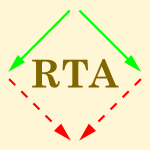 RTA-TLCA-2014-Schmitz #logic
RTA-TLCA-2014-Schmitz #logic- Implicational Relevance Logic is 2-ExpTime-Complete (SS), pp. 395–409.
 DATE-2013-SeiterWSD #ocl #specification #uml #verification
DATE-2013-SeiterWSD #ocl #specification #uml #verification- Determining relevant model elements for the verification of UML/OCL specifications (JS, RW, MS, RD), pp. 1189–1192.
 HT-2013-GuerreiroG #exclamation #quote #what
HT-2013-GuerreiroG #exclamation #quote #what- “Tell me what I want to know!”: the effect of relationship closeness on the relevance of profile attributes (JG, DG), pp. 230–235.
 HT-2013-KumarMZL #identification
HT-2013-KumarMZL #identification- Whom should I follow?: identifying relevant users during crises (SK, FM, RZ, HL), pp. 139–147.
 ICDAR-2013-SantoshB #documentation #evaluation #information management
ICDAR-2013-SantoshB #documentation #evaluation #information management- Document Information Extraction and Its Evaluation Based on Client’s Relevance (KCS, AB), pp. 35–39.
 VLDB-2013-NambiarP #exclamation
VLDB-2013-NambiarP #exclamation- Keeping the TPC Relevant! (RON, MP), pp. 1186–1187.
 VLDB-2014-EravciF13 #feedback
VLDB-2014-EravciF13 #feedback- Diversity based Relevance Feedback for Time Series Search (BE, HF), pp. 109–120.
 ICSM-2013-DasguptaGMDP #automation #corpus #documentation #traceability
ICSM-2013-DasguptaGMDP #automation #corpus #documentation #traceability- Enhancing Software Traceability by Automatically Expanding Corpora with Relevant Documentation (TD, MG, EM, BD, DP), pp. 320–329.
 CHI-2013-SaNC #animation #mobile
CHI-2013-SaNC #animation #mobile- Mobile advertising: evaluating the effects of animation, user and content relevance (MdS, VN, EFC), pp. 2487–2496.
 DUXU-CXC-2013-BlanklBH #development #human-computer #lessons learnt
DUXU-CXC-2013-BlanklBH #development #human-computer #lessons learnt- Lessons Learned from Projects in Japan and Korea Relevant for Intercultural HCI Development (MB, PB, RH), pp. 20–27.
 CIKM-2013-MiyanishiSU #feedback #pseudo #twitter
CIKM-2013-MiyanishiSU #feedback #pseudo #twitter- Improving pseudo-relevance feedback via tweet selection (TM, KS, KU), pp. 439–448.
 CIKM-2013-SpeicherBG #exclamation #interactive #predict #web
CIKM-2013-SpeicherBG #exclamation #interactive #predict #web- TellMyRelevance!: predicting the relevance of web search results from cursor interactions (MS, AB, MG), pp. 1281–1290.
 ECIR-2013-DemeesterNTDH #predict #web
ECIR-2013-DemeesterNTDH #predict #web- Snippet-Based Relevance Predictions for Federated Web Search (TD, DN, DT, CD, DH), pp. 697–700.
 ECIR-2013-MoshfeghiPPJ #comprehension
ECIR-2013-MoshfeghiPPJ #comprehension- Understanding Relevance: An fMRI Study (YM, LRP, FEP, JMJ), pp. 14–25.
 ECIR-2013-PaltoglouB #ad hoc #microblog #realtime
ECIR-2013-PaltoglouB #ad hoc #microblog #realtime- Subjectivity Annotation of the Microblog 2011 Realtime Adhoc Relevance Judgments (GP, KB), pp. 344–355.
 ECIR-2013-PatilDV #concept
ECIR-2013-PatilDV #concept- Leveraging Latent Concepts for Retrieving Relevant Ads for Short Text (AP, KSD, VV), pp. 780–783.
 ECIR-2013-VulicM #framework #modelling #probability #topic
ECIR-2013-VulicM #framework #modelling #probability #topic- A Unified Framework for Monolingual and Cross-Lingual Relevance Modeling Based on Probabilistic Topic Models (IV, MFM), pp. 98–109.
 ICML-c3-2013-ChuangGMH #topic
ICML-c3-2013-ChuangGMH #topic- Topic Model Diagnostics: Assessing Domain Relevance via Topical Alignment (JC, SG, CDM, JH), pp. 612–620.
 KDIR-KMIS-2013-CherichiF #microblog
KDIR-KMIS-2013-CherichiF #microblog- Relevant Information Discovery in Microblogs — Combining Post’s Features and Author’s Features to Improve Search Results (SC, RF), pp. 128–135.
 KEOD-2013-Surynek #bibliography #collaboration #web
KEOD-2013-Surynek #bibliography #collaboration #web- A Survey of Collaborative Web Search — Through Collaboration among Search Engine Users to More Relevant Results (PS), pp. 331–336.
 MLDM-2013-GopalakrishnaOLL #algorithm #machine learning #metric
MLDM-2013-GopalakrishnaOLL #algorithm #machine learning #metric- Relevance as a Metric for Evaluating Machine Learning Algorithms (AKG, TO, AL, JJL), pp. 195–208.
 RecSys-2013-ShiKBLH #multi #named #optimisation #rank
RecSys-2013-ShiKBLH #multi #named #optimisation #rank- xCLiMF: optimizing expected reciprocal rank for data with multiple levels of relevance (YS, AK, LB, ML, AH), pp. 431–434.
 SIGIR-2013-Belem #recommendation
SIGIR-2013-Belem #recommendation- Beyond relevance: on novelty and diversity in tag recommendation (FB), p. 1140.
 SIGIR-2013-BonzaniniMR #summary
SIGIR-2013-BonzaniniMR #summary- Extractive summarisation via sentence removal: condensing relevant sentences into a short summary (MB, MMA, TR), pp. 893–896.
 SIGIR-2013-Crane #feedback
SIGIR-2013-Crane #feedback- Diversified relevance feedback (MC), p. 1142.
 SIGIR-2013-GangulyLJ #case study #documentation #retrieval
SIGIR-2013-GangulyLJ #case study #documentation #retrieval- An LDA-smoothed relevance model for document expansion: a case study for spoken document retrieval (DG, JL, GJFJ), pp. 1057–1060.
 SIGIR-2013-GuoJLYA #interactive #mining #mobile #predict #web
SIGIR-2013-GuoJLYA #interactive #mining #mobile #predict #web- Mining touch interaction data on mobile devices to predict web search result relevance (QG, HJ, DL, SY, EA), pp. 153–162.
 SIGIR-2013-KimKZ #evaluation #information retrieval
SIGIR-2013-KimKZ #evaluation #information retrieval- Relevance dimensions in preference-based IR evaluation (JK, GK, IZ), pp. 913–916.
 SIGIR-2013-LiSCM #towards
SIGIR-2013-LiSCM #towards- Towards retrieving relevant information graphics (ZL, MS, SC, KFM), pp. 789–792.
 SIGIR-2013-MoshfeghiJ #behaviour #effectiveness #feedback #using
SIGIR-2013-MoshfeghiJ #behaviour #effectiveness #feedback #using- An effective implicit relevance feedback technique using affective, physiological and behavioural features (YM, JMJ), pp. 133–142.
 SIGIR-2013-RamanBC #towards #web
SIGIR-2013-RamanBC #towards #web- Toward whole-session relevance: exploring intrinsic diversity in web search (KR, PNB, KCT), pp. 463–472.
 SIGIR-2013-ScholerKWLW #assessment
SIGIR-2013-ScholerKWLW #assessment- The effect of threshold priming and need for cognition on relevance calibration and assessment (FS, DK, WCW, HSL, WW), pp. 623–632.
 SIGIR-2013-ShaniT #game studies
SIGIR-2013-ShaniT #game studies- Displaying relevance scores for search results (GS, NT), pp. 901–904.
 SIGIR-2013-VillaH
SIGIR-2013-VillaH- Is relevance hard work?: evaluating the effort of making relevant assessments (RV, MH), pp. 765–768.
 SIGIR-2013-WuF #approach #feedback #incremental #performance #pseudo
SIGIR-2013-WuF #approach #feedback #incremental #performance #pseudo- An incremental approach to efficient pseudo-relevance feedback (HW, HF), pp. 553–562.
 SIGIR-2013-ZhangGY #feedback #query
SIGIR-2013-ZhangGY #feedback #query- Query change as relevance feedback in session search (SZ, DG, HY), pp. 821–824.
 QAPL-2013-Schuppan #ltl #satisfiability
QAPL-2013-Schuppan #ltl #satisfiability- Enhancing Unsatisfiable Cores for LTL with Information on Temporal Relevance (VS), pp. 49–65.
 ICSE-2013-SantelicesZJCZ #slicing
ICSE-2013-SantelicesZJCZ #slicing- Quantitative program slicing: separating statements by relevance (RAS, YZ, SJ, HC, YJZ), pp. 1269–1272.
 CGO-2013-ChouhanRB #interactive #profiling
CGO-2013-ChouhanRB #interactive #profiling- Pertinent path profiling: Tracking interactions among relevant statements (RC, SR, SB), p. 12.
 TLCA-2013-BentonHN #generative #logic
TLCA-2013-BentonHN #generative #logic- Proof-Relevant Logical Relations for Name Generation (NB, MH, VN), pp. 48–60.
 DATE-2012-EllenEO #automation #development #embedded #process #safety
DATE-2012-EllenEO #automation #development #embedded #process #safety- Automatic transition between structural system views in a safety relevant embedded systems development process (CE, CE, MO), pp. 820–823.
 VLDB-2012-CandanRSW #constraints #named #using
VLDB-2012-CandanRSW #constraints #named #using- sDTW: Computing DTW Distances using Locally Relevant Constraints based on Salient Feature Alignments (KSC, RR, MLS, XW), pp. 1519–1530.
 VLDB-2012-CaoCJNOPW #named #performance #retrieval #web
VLDB-2012-CaoCJNOPW #named #performance #retrieval #web- SWORS: A System for the Efficient Retrieval of Relevant Spatial Web Objects (XC, GC, CSJ, JJN, BCO, NTP, DW), pp. 1914–1917.
 CSMR-2012-BertranAGCS #architecture #identification #on the
CSMR-2012-BertranAGCS #architecture #identification #on the- On the Relevance of Code Anomalies for Identifying Architecture Degradation Symptoms (IMB, RA, AG, CC, AvS), pp. 277–286.
 ICSM-2012-BertranACGS #architecture #identification
ICSM-2012-BertranACGS #architecture #identification- Supporting the identification of architecturally-relevant code anomalies (IMB, RA, EC, AG, AvS), pp. 662–665.
 CIKM-2012-CamposDJN #approach #higher-order #identification #named #web
CIKM-2012-CamposDJN #approach #higher-order #identification #named #web- GTE: a distributional second-order co-occurrence approach to improve the identification of top relevant dates in web snippets (RC, GD, AJ, CN), pp. 2035–2039.
 CIKM-2012-KazaiKM #crowdsourcing #quality
CIKM-2012-KazaiKM #crowdsourcing #quality- The face of quality in crowdsourcing relevance labels: demographics, personality and labeling accuracy (GK, JK, NMF), pp. 2583–2586.
 CIKM-2012-KoolenKK #evaluation #social #topic
CIKM-2012-KoolenKK #evaluation #social #topic- Social book search: comparing topical relevance judgements and book suggestions for evaluation (MK, JK, GK), pp. 185–194.
 CIKM-2012-RaiberKT #estimation #using #web
CIKM-2012-RaiberKT #estimation #using #web- Content-based relevance estimation on the web using inter-document similarities (FR, OK, MT), pp. 1769–1773.
 CIKM-2012-RajputEPA #documentation
CIKM-2012-RajputEPA #documentation- Constructing test collections by inferring document relevance via extracted relevant information (SR, MEA, VP, JAA), pp. 145–154.
 CIKM-2012-RamachandranG #graph #identification #representation
CIKM-2012-RamachandranG #graph #identification #representation- A word-order based graph representation for relevance identification (LR, EFG), pp. 2327–2330.
 CIKM-2012-RenCJ #learning #topic
CIKM-2012-RenCJ #learning #topic- Topic based pose relevance learning in dance archives (RR, JPC, JMJ), pp. 2571–2574.
 CIKM-2012-SudituF #adaptation #feedback #trade-off
CIKM-2012-SudituF #adaptation #feedback #trade-off- Iterative relevance feedback with adaptive exploration/exploitation trade-off (NS, FF), pp. 1323–1331.
 CIKM-2012-Vitter #data type
CIKM-2012-Vitter #data type- Compressed data structures with relevance (JSV), pp. 4–5.
 CIKM-2012-YaoS #learning #relational #ubiquitous
CIKM-2012-YaoS #learning #relational #ubiquitous- Exploiting latent relevance for relational learning of ubiquitous things (LY, QZS), pp. 1547–1551.
 CIKM-2012-ZhouLZ #community #learning #quality
CIKM-2012-ZhouLZ #community #learning #quality- Joint relevance and answer quality learning for question routing in community QA (GZ, KL, JZ), pp. 1492–1496.
 CIKM-2012-ZhouLZ12a #collaboration #query #ranking
CIKM-2012-ZhouLZ12a #collaboration #query #ranking- Collaborative ranking: improving the relevance for tail queries (KZ, XL, HZ), pp. 1900–1904.
 CIKM-2012-ZhuGCL #behaviour #mining #query #recommendation
CIKM-2012-ZhuGCL #behaviour #mining #query #recommendation- More than relevance: high utility query recommendation by mining users’ search behaviors (XZ, JG, XC, YL), pp. 1814–1818.
 ECIR-2012-GeraniZC #linear #multi #ranking
ECIR-2012-GeraniZC #linear #multi #ranking- Score Transformation in Linear Combination for Multi-criteria Relevance Ranking (SG, CZ, FC), pp. 256–267.
 ECIR-2012-HosseiniCMKV #documentation #multi #on the
ECIR-2012-HosseiniCMKV #documentation #multi #on the- On Aggregating Labels from Multiple Crowd Workers to Infer Relevance of Documents (MH, IJC, NMF, GK, VV), pp. 182–194.
 ECIR-2012-KimC #documentation #retrieval
ECIR-2012-KimC #documentation #retrieval- A Field Relevance Model for Structured Document Retrieval (JK, WBC), pp. 97–108.
 ECIR-2012-Lubell-DoughtieH #feedback #learning #rank
ECIR-2012-Lubell-DoughtieH #feedback #learning #rank- Learning to Rank from Relevance Feedback for e-Discovery (PLD, KH), pp. 535–539.
 ECIR-2012-WhitingKJ #feedback #microblog #pseudo #retrieval
ECIR-2012-WhitingKJ #feedback #microblog #pseudo #retrieval- Temporal Pseudo-relevance Feedback in Microblog Retrieval (SW, IAK, JMJ), pp. 522–526.
 ICML-2012-DamianouETL
ICML-2012-DamianouETL- Manifold Relevance Determination (ACD, CHE, MKT, NDL), p. 72.
 ICPR-2012-GauzereBVB #graph #kernel
ICPR-2012-GauzereBVB #graph #kernel- Graph kernels based on relevant patterns and cycle information for chemoinformatics (BG, LB, DV, MB), pp. 1775–1778.
 ICPR-2012-SeredinMTRW #multimodal #pattern matching #pattern recognition #recognition
ICPR-2012-SeredinMTRW #multimodal #pattern matching #pattern recognition #recognition- Convex support and Relevance Vector Machines for selective multimodal pattern recognition (OS, VM, AT, NR, DW), pp. 1647–1650.
 ICPR-2012-TabernikKBL #learning #low level #statistics #visual notation
ICPR-2012-TabernikKBL #learning #low level #statistics #visual notation- Learning statistically relevant edge structure improves low-level visual descriptors (DT, MK, MB, AL), pp. 1471–1474.
 ICPR-2012-TuiaMVFR #classification #image
ICPR-2012-TuiaMVFR #classification #image- Discovering relevant spatial filterbanks for VHR image classification (DT, MDM, MV, RF, AR), pp. 3212–3215.
 ICPR-2012-WuW #classification #dependence
ICPR-2012-WuW #classification #dependence- Term relevance dependency model for text classification (MSW, HMW), pp. 1064–1067.
 KDD-2012-GrosskreutzPR
KDD-2012-GrosskreutzPR- An enhanced relevance criterion for more concise supervised pattern discovery (HG, DP, SR), pp. 1442–1450.
 SIGIR-2012-CaballeroA #feedback #statistics #topic
SIGIR-2012-CaballeroA #feedback #statistics #topic- Incorporating statistical topic information in relevance feedback (KLCE, RA), pp. 1093–1094.
 SIGIR-2012-Eickhoff #concept #multi
SIGIR-2012-Eickhoff #concept #multi- Relevance as a subjective and situational multidimensional concept (CE), p. 998.
 SIGIR-2012-EickhoffHVS #crowdsourcing #quality
SIGIR-2012-EickhoffHVS #crowdsourcing #quality- Quality through flow and immersion: gamifying crowdsourced relevance assessments (CE, CGH, APdV, PS), pp. 871–880.
 SIGIR-2012-JungL #matrix #probability
SIGIR-2012-JungL #matrix #probability- Inferring missing relevance judgments from crowd workers via probabilistic matrix factorization (HJJ, ML), pp. 1095–1096.
 SIGIR-2012-LimSG #on the #trade-off
SIGIR-2012-LimSG #on the #trade-off- On the mathematical relationship between expected n-call@k and the relevance vs. diversity trade-off (KWL, SS, SG), pp. 1117–1118.
 SIGIR-2012-McCreadieMO #automation #crowdsourcing #named
SIGIR-2012-McCreadieMO #automation #crowdsourcing #named- CrowdTerrier: automatic crowdsourced relevance assessments with terrier (RM, CM, IO), p. 1005.
 SIGIR-2012-MiaoHY #pseudo
SIGIR-2012-MiaoHY #pseudo- Proximity-based rocchio’s model for pseudo relevance (JM, JXH, ZY), pp. 535–544.
 SIGIR-2012-SmuckerJ #fault
SIGIR-2012-SmuckerJ #fault- Time to judge relevance as an indicator of assessor error (MDS, CPJ), pp. 1153–1154.
 SIGIR-2012-VargasCV #information retrieval #modelling
SIGIR-2012-VargasCV #information retrieval #modelling- Explicit relevance models in intent-oriented information retrieval diversification (SV, PC, DV), pp. 75–84.
 SIGIR-2012-WhiteB #feedback
SIGIR-2012-WhiteB #feedback- Text selections as implicit relevance feedback (RWW, GB), pp. 1151–1152.
 SIGIR-2012-Whiting #problem #ranking
SIGIR-2012-Whiting #problem #ranking- The essence of time: considering temporal relevance as an intent-aware ranking problem (SW), p. 1000.
 SIGIR-2012-XiaoZT #image #ranking
SIGIR-2012-XiaoZT #image #ranking- Exploring tag relevance for image tag re-ranking (JX, WZ, QT), pp. 1069–1070.
 SAC-2012-LangohrT #mining
SAC-2012-LangohrT #mining- A model for mining relevant and non-redundant information (LL, HT), pp. 132–137.
 FSE-2012-GanaiLG #analysis #concurrent #multi #named #source code #thread
FSE-2012-GanaiLG #analysis #concurrent #multi #named #source code #thread- DTAM: dynamic taint analysis of multi-threaded programs for relevancy (MKG, DL, AG), p. 46.
 QoSA-ISARCS-2011-HauckKHR #framework #named
QoSA-ISARCS-2011-HauckKHR #framework #named- Ginpex: deriving performance-relevant infrastructure properties through goal-oriented experiments (MH, MK, NH, RHR), pp. 53–62.
 ASE-2011-GottipatiLJ
ASE-2011-GottipatiLJ- Finding relevant answers in software forums (SG, DL, JJ), pp. 323–332.
 DRR-2011-SiddiqiKV #analysis #identification
DRR-2011-SiddiqiKV #analysis #identification- Feature relevance analysis for writer identification (IS, KK, NV), pp. 1–10.
 HT-2011-ChoudhuryCC #identification #social #social media
HT-2011-ChoudhuryCC #identification #social #social media- Identifying relevant social media content: leveraging information diversity and user cognition (MDC, SC, MC), pp. 161–170.
 ICDAR-2011-AugereauJD #documentation #feedback #image #industrial
ICDAR-2011-AugereauJD #documentation #feedback #image #industrial- Document Images Indexing with Relevance Feedback: An Application to Industrial Context (OA, NJ, JPD), pp. 1190–1194.
 PODS-2011-BenediktGS #runtime
PODS-2011-BenediktGS #runtime- Determining relevance of accesses at runtime (MB, GG, PS), pp. 211–222.
 CSEET-2011-HuangP
CSEET-2011-HuangP- Relevance and alignment of Real-Client Real-Project courses via technology transfer (LH, DP), pp. 189–198.
 ICPC-2011-RothlisbergerND #ide #named
ICPC-2011-RothlisbergerND #ide #named- SmartGroups: Focusing on Task-Relevant Source Artifacts in IDEs (DR, ON, SD), pp. 61–70.
 ICSM-2011-LeeK #clustering #recommendation
ICSM-2011-LeeK #clustering #recommendation- Clustering and recommending collections of code relevant to tasks (SL, SK), pp. 536–539.
 CHI-2011-FritzM #developer #how
CHI-2011-FritzM #developer #how- Determining relevancy: how software developers determine relevant information in feeds (TF, GCM), pp. 1827–1830.
 DHM-2011-EilersM #composition #learning #modelling #using
DHM-2011-EilersM #composition #learning #modelling #using- Learning the Relevant Percepts of Modular Hierarchical Bayesian Driver Models Using a Bayesian Information Criterion (ME, CM), pp. 463–472.
 DUXU-v2-2011-TsaoCY #case study #design #image
DUXU-v2-2011-TsaoCY #case study #design #image- A Study on the Expected Image and Relevant Design Techniques in Different Product-Use Stages (YCT, BC, YPY), pp. 655–663.
 HCI-DDA-2011-BirinciGG #feedback #image #query #retrieval
HCI-DDA-2011-BirinciGG #feedback #image #query #retrieval- Dynamic Queries with Relevance Feedback for Content Based Image Retrieval (MB, EG, MG), pp. 547–554.
 CIKM-2011-AmodeoAG #on the #query
CIKM-2011-AmodeoAG #on the #query- On relevance, time and query expansion (GA, GA, GG), pp. 1973–1976.
 CIKM-2011-BicerTN #keyword #modelling #ranking #using
CIKM-2011-BicerTN #keyword #modelling #ranking #using- Ranking support for keyword search on structured data using relevance models (VB, TT, RN), pp. 1669–1678.
 CIKM-2011-GangulyLMJ #feedback #pseudo #query #reduction #using
CIKM-2011-GangulyLMJ #feedback #pseudo #query #reduction #using- Patent query reduction using pseudo relevance feedback (DG, JL, WM, GJFJ), pp. 1953–1956.
 CIKM-2011-HassanSH #estimation #metric #web
CIKM-2011-HassanSH #estimation #metric #web- A task level metric for measuring web search satisfaction and its application on improving relevance estimation (AHA, YS, LwH), pp. 125–134.
 CIKM-2011-HosseiniCMSV #information retrieval
CIKM-2011-HosseiniCMSV #information retrieval- Prioritizing relevance judgments to improve the construction of IR test collections (MH, IJC, NMF, TS, VV), pp. 641–646.
 CIKM-2011-HuiHLW #statistics #using
CIKM-2011-HuiHLW #statistics #using- Relevance weighting using within-document term statistics (KH, BH, TL, BW), pp. 99–104.
 CIKM-2011-KazaiKM #crowdsourcing
CIKM-2011-KazaiKM #crowdsourcing- Worker types and personality traits in crowdsourcing relevance labels (GK, JK, NMF), pp. 1941–1944.
 CIKM-2011-KeikhaSCC #documentation #effectiveness #feedback #predict #pseudo
CIKM-2011-KeikhaSCC #documentation #effectiveness #feedback #predict #pseudo- Predicting document effectiveness in pseudo relevance feedback (MK, JS, WBC, FC), pp. 2061–2064.
 CIKM-2011-LiSZ #feedback
CIKM-2011-LiSZ #feedback- Learning-based relevance feedback for web-based relation completion (ZL, LS, XZ), pp. 1535–1540.
 CIKM-2011-LiuFYW #enterprise
CIKM-2011-LiuFYW #enterprise- Finding relevant information of certain types from enterprise data (XL, HF, CY, MW), pp. 47–56.
 CIKM-2011-ParikhS
CIKM-2011-ParikhS- Beyond relevance in marketplace search (NP, NS), pp. 2109–2112.
 CIKM-2011-SannerGGKK #optimisation #retrieval #topic
CIKM-2011-SannerGGKK #optimisation #retrieval #topic- Diverse retrieval via greedy optimization of expected 1-call@k in a latent subtopic relevance model (SS, SG, TG, SK, SK), pp. 1977–1980.
 CIKM-2011-WangYS #documentation #feedback
CIKM-2011-WangYS #documentation #feedback- Relevance feedback exploiting query-specific document manifolds (CW, EY, MS), pp. 1957–1960.
 CIKM-2011-WangYZ #approach
CIKM-2011-WangYZ #approach- A language model approach to capture commercial intent and information relevance for sponsored search (LW, MY, YZ), pp. 599–604.
 CIKM-2011-XingZZ #bias #feedback #on the #problem
CIKM-2011-XingZZ #bias #feedback #on the #problem- On bias problem in relevance feedback (QX, YZ, LZ), pp. 1965–1968.
 CIKM-2011-ZhuCXCT #category theory #ranking #towards
CIKM-2011-ZhuCXCT #category theory #ranking #towards- Towards expert finding by leveraging relevant categories in authority ranking (HZ, HC, HX, EC, JT), pp. 2221–2224.
 ECIR-2011-AlonsoB #crowdsourcing #design #implementation #using
ECIR-2011-AlonsoB #crowdsourcing #design #implementation #using- Design and Implementation of Relevance Assessments Using Crowdsourcing (OA, RABY), pp. 153–164.
 ECIR-2011-BaskayaKJ #feedback #simulation
ECIR-2011-BaskayaKJ #feedback #simulation- Simulating Simple and Fallible Relevance Feedback (FB, HK, KJ), pp. 593–604.
 ECIR-2011-BuccioMS #framework #predict #towards #using
ECIR-2011-BuccioMS #framework #predict #towards #using- Towards Predicting Relevance Using a Quantum-Like Framework (EDB, MM, DS), pp. 755–758.
 ECIR-2011-CaiGWZ #adaptation #ranking
ECIR-2011-CaiGWZ #adaptation #ranking- Weight-Based Boosting Model for Cross-Domain Relevance Ranking Adaptation (PC, WG, KFW, AZ), pp. 562–567.
 ECIR-2011-IofciuDCV #effectiveness #feedback #named #ranking
ECIR-2011-IofciuDCV #effectiveness #feedback #named #ranking- ReFER: Effective Relevance Feedback for Entity Ranking (TI, GD, NC, APdV), pp. 264–276.
 ECIR-2011-KeikhaGC #feedback #named
ECIR-2011-KeikhaGC #feedback #named- TEMPER: A Temporal Relevance Feedback Method (MK, SG, FC), pp. 436–447.
 ECIR-2011-ZucconAR #analysis
ECIR-2011-ZucconAR #analysis- Back to the Roots: Mean-Variance Analysis of Relevance Estimations (GZ, LA, KvR), pp. 716–720.
 KDD-2011-El-AriniG #keyword
KDD-2011-El-AriniG #keyword- Beyond keyword search: discovering relevant scientific literature (KEA, CG), pp. 439–447.
 KMIS-2011-RamosSB #process
KMIS-2011-RamosSB #process- A Method for Discovering the Relevance of External Context Variables to Business Processes (ECR, FMS, FAB), pp. 399–408.
 RecSys-2011-BarbieriCMO #approach #modelling #recommendation
RecSys-2011-BarbieriCMO #approach #modelling #recommendation- Modeling item selection and relevance for accurate recommendations: a bayesian approach (NB, GC, GM, RO), pp. 21–28.
 RecSys-2011-VargasC #metric #rank #recommendation
RecSys-2011-VargasC #metric #rank #recommendation- Rank and relevance in novelty and diversity metrics for recommender systems (SV, PC), pp. 109–116.
 SIGIR-2011-AsadiML
SIGIR-2011-AsadiML- Cross-corpus relevance projection (NA, DM, JJL), pp. 1163–1164.
 SIGIR-2011-CaiGZW #adaptation #education #query #ranking
SIGIR-2011-CaiGZW #adaptation #education #query #ranking- Relevant knowledge helps in choosing right teacher: active query selection for ranking adaptation (PC, WG, AZ, KFW), pp. 115–124.
 SIGIR-2011-DaiSD #learning #rank
SIGIR-2011-DaiSD #learning #rank- Learning to rank for freshness and relevance (ND, MS, BDD), pp. 95–104.
 SIGIR-2011-DuGC #network
SIGIR-2011-DuGC #network- Decayed DivRank: capturing relevance, diversity and prestige in information networks (PD, JG, XC), pp. 1239–1240.
 SIGIR-2011-HeZSLY #evaluation #retrieval #web
SIGIR-2011-HeZSLY #evaluation #retrieval #web- Efficiently collecting relevance information from clickthroughs for web retrieval system evaluation (JH, WXZ, BS, XL, HY), pp. 275–284.
 SIGIR-2011-KeikhaGC #modelling
SIGIR-2011-KeikhaGC #modelling- Time-based relevance models (MK, SG, FC), pp. 1087–1088.
 SIGIR-2011-KrikonK #ad hoc #feedback #retrieval
SIGIR-2011-KrikonK #ad hoc #feedback #retrieval- Utilizing minimal relevance feedback for ad hoc retrieval (EK, OK), pp. 1099–1100.
 SIGIR-2011-LawBH
SIGIR-2011-LawBH- The effects of choice in routing relevance judgments (EL, PNB, EH), pp. 1127–1128.
 SIGIR-2011-LvZC #approach #feedback #pseudo
SIGIR-2011-LvZC #approach #feedback #pseudo- A boosting approach to improving pseudo-relevance feedback (YL, CZ, WC), pp. 165–174.
 SIGIR-2011-SakaiS #using
SIGIR-2011-SakaiS #using- Evaluating diversified search results using per-intent graded relevance (TS, RS), pp. 1043–1052.
 SIGIR-2011-ScholerTS #consistency #quality
SIGIR-2011-ScholerTS #consistency #quality- Quantifying test collection quality based on the consistency of relevance judgements (FS, AT, MS), pp. 1063–1072.
 SIGIR-2011-WangRFZHB #learning #network #online #social
SIGIR-2011-WangRFZHB #learning #network #online #social- Learning relevance from heterogeneous social network and its application in online targeting (CW, RR, DF, DZ, JH, GJB), pp. 655–664.
 SIGIR-2011-WhitingMJ #feedback #pseudo
SIGIR-2011-WhitingMJ #feedback #pseudo- Exploring term temporality for pseudo-relevance feedback (SW, YM, JMJ), pp. 1245–1246.
 SIGIR-2011-ZhouHH #ad hoc #estimation #probability #using
SIGIR-2011-ZhouHH #ad hoc #estimation #probability #using- Enhancing ad-hoc relevance weighting using probability density estimation (XZ, JXH, BH), pp. 175–184.
 SAC-2011-KeikhaGC #retrieval
SAC-2011-KeikhaGC #retrieval- Relevance stability in blog retrieval (MK, SG, FC), pp. 1119–1123.
 ICSE-2011-Bertran #architecture #detection #evolution #smell
ICSE-2011-Bertran #architecture #detection #evolution #smell- Detecting architecturally-relevant code smells in evolving software systems (IMB), pp. 1090–1093.
 ICSE-2011-McMillan11a
ICSE-2011-McMillan11a- Finding relevant functions in millions of lines of code (CM), pp. 1170–1172.
 ICSE-2011-McMillanGPXF #named
ICSE-2011-McMillanGPXF #named- Portfolio: finding relevant functions and their usage (CM, MG, DP, QX, CF), pp. 111–120.
 CASE-2010-BraunS #approach #constraints #logic #predict
CASE-2010-BraunS #approach #constraints #logic #predict- A Mixed Logical Dynamic Model Predictive Control approach for handling industrially relevant transportation constraints (MWB, JS), pp. 966–971.
 HT-2010-DarvishC #video
HT-2010-DarvishC #video- Dealing with the video tidal wave: the relevance of expertise for video tagging (SD, AC), pp. 289–290.
 VLDB-2010-CaoCJ #web
VLDB-2010-CaoCJ #web- Retrieving Top-k Prestige-Based Relevant Spatial Web Objects (XC, GC, CSJ), pp. 373–384.
 PEPM-2010-HoldermansH #strict
PEPM-2010-HoldermansH #strict- Making “stricterness” more relevant (SH, JH), pp. 121–130.
 ICEIS-ISAS-2010-ClariziaGN #identification #query #web
ICEIS-ISAS-2010-ClariziaGN #identification #query #web- A New Technique for Identification of Relevant Web Pages in Informational Queries Results (FC, LG, PN), pp. 70–79.
 CIKM-2010-BenderskyCS #feedback #pseudo #query #using
CIKM-2010-BenderskyCS #feedback #pseudo #query #using- Structural annotation of search queries using pseudo-relevance feedback (MB, WBC, DAS), pp. 1537–1540.
 CIKM-2010-CartrightALM #approximate #modelling #performance #query #using
CIKM-2010-CartrightALM #approximate #modelling #performance #query #using- Fast query expansion using approximations of relevance models (MAC, JA, VL, AM), pp. 1573–1576.
 CIKM-2010-DemartiniMBZ #named
CIKM-2010-DemartiniMBZ #named- TAER: time-aware entity retrieval-exploiting the past to find relevant entities in news articles (GD, MMSM, RB, HZ), pp. 1517–1520.
 CIKM-2010-DillonC #algorithm #feedback #framework #optimisation #pseudo #robust
CIKM-2010-DillonC #algorithm #feedback #framework #optimisation #pseudo #robust- A unified optimization framework for robust pseudo-relevance feedback algorithms (JVD, KCT), pp. 1069–1078.
 CIKM-2010-GMLPG #trade-off
CIKM-2010-GMLPG #trade-off- Relevance-index size tradeoff in contextual advertising (PKG, KPL, MP, SG), pp. 1721–1724.
 CIKM-2010-GurumurthySKV #web
CIKM-2010-GurumurthySKV #web- Improving web search relevance and freshness with content previews (SG, HS, VK, VV), pp. 1159–1168.
 CIKM-2010-KarimzadehganZ #feedback #interactive #trade-off
CIKM-2010-KarimzadehganZ #feedback #interactive #trade-off- Exploration-exploitation tradeoff in interactive relevance feedback (MK, CZ), pp. 1397–1400.
 CIKM-2010-LadY #documentation #feedback #learning #novel #rank
CIKM-2010-LadY #documentation #feedback #learning #novel #rank- Learning to rank relevant and novel documents through user feedback (AL, YY), pp. 469–478.
 CIKM-2010-LinC #classification #multi
CIKM-2010-LinC #classification #multi- Mr.KNN: soft relevance for multi-label classification (XL, XwC), pp. 349–358.
 CIKM-2010-RaiberK #documentation #identification #on the
CIKM-2010-RaiberK #documentation #identification #on the- On identifying representative relevant documents (FR, OK), pp. 99–108.
 ECIR-2010-BeresiKBRS
ECIR-2010-BeresiKBRS- Colouring the Dimensions of Relevance (UCB, YK, MB, IR, DS), pp. 569–572.
 ECIR-2010-RamanUBB #documentation #feedback #on the #pseudo #using
ECIR-2010-RamanUBB #documentation #feedback #on the #pseudo #using- On Improving Pseudo-Relevance Feedback Using Pseudo-Irrelevant Documents (KR, RU, PB, AB), pp. 573–576.
 KDD-2010-LiAZ #mining
KDD-2010-LiAZ #mining- Mining positive and negative patterns for relevance feature discovery (YL, AA, NZ), pp. 753–762.
 KDD-2010-SrikantBWP #modelling
KDD-2010-SrikantBWP #modelling- User browsing models: relevance versus examination (RS, SB, NW, DP), pp. 223–232.
 KDIR-2010-CamposFHM #approach #feedback #query
KDIR-2010-CamposFHM #approach #feedback #query- A Content-Bsed Approach to Relevance Feedback in XML-IR for Content and Structure Queries (LMdC, JMFL, JFH, CJMD), pp. 418–427.
 KDIR-2010-KleizaKT #approach #documentation #identification #query #semantics #similarity #visualisation #word
KDIR-2010-KleizaKT #approach #documentation #identification #query #semantics #similarity #visualisation #word- Semantic Identification and Visualization of Significant Words within Documents — Approach to Visualize Relevant Words within Documents to a Search Query by Word Similarity Computation (KK, PK, KDT), pp. 481–486.
 RecSys-2010-ZhengWZLY #case study #empirical #recommendation
RecSys-2010-ZhengWZLY #case study #empirical #recommendation- Do clicks measure recommendation relevancy?: an empirical user study (HZ, DW, QZ, HL, TY), pp. 249–252.
 SEKE-2010-SpinolaT #ubiquitous
SEKE-2010-SpinolaT #ubiquitous- Characteristics of Ubiquitous Software Projects: Pertinence, Relevance, and Use (ROS, GHT), pp. 732–737.
 SIGIR-2010-ArapakisAJ #comparison #modelling #personalisation #predict #topic
SIGIR-2010-ArapakisAJ #comparison #modelling #personalisation #predict #topic- A comparison of general vs personalised affective models for the prediction of topical relevance (IA, KA, JMJ), pp. 371–378.
 SIGIR-2010-ArvolaKJ #documentation
SIGIR-2010-ArvolaKJ #documentation- Focused access to sparsely and densely relevant documents (PA, JK, MJ), pp. 781–782.
 SIGIR-2010-BaileyCWCST
SIGIR-2010-BaileyCWCST- Evaluating whole-page relevance (PB, NC, RWW, LC, AS, SMMT), pp. 767–768.
 SIGIR-2010-DiazMA #online #ranking
SIGIR-2010-DiazMA #online #ranking- Relevance and ranking in online dating systems (FD, DM, SAY), pp. 66–73.
 SIGIR-2010-GuoS #probability
SIGIR-2010-GuoS #probability- Probabilistic latent maximal marginal relevance (SG, SS), pp. 833–834.
 SIGIR-2010-KoolenK10a
SIGIR-2010-KoolenK10a- The impact of collection size on relevance and diversity (MK, JK), pp. 727–728.
 SIGIR-2010-LeeLSR #precise #retrieval #sentiment #using
SIGIR-2010-LeeLSR #precise #retrieval #sentiment #using- High precision opinion retrieval using sentiment-relevance flows (SWL, JTL, YIS, HCR), pp. 817–818.
 SIGIR-2010-LvZ #feedback #pseudo
SIGIR-2010-LvZ #feedback #pseudo- Positional relevance model for pseudo-relevance feedback (YL, CZ), pp. 579–586.
 SIGIR-2010-RobertsonKY #precise
SIGIR-2010-RobertsonKY #precise- Extending average precision to graded relevance judgments (SER, EK, EY), pp. 603–610.
 SIGIR-2010-ShtokKC #modelling #predict #statistics #using
SIGIR-2010-ShtokKC #modelling #predict #statistics #using- Using statistical decision theory and relevance models for query-performance prediction (AS, OK, DC), pp. 259–266.
 SIGIR-2010-SluisDB #experience #information retrieval #towards #user interface
SIGIR-2010-SluisDB #experience #information retrieval #towards #user interface- Aiming for user experience in information retrieval: towards user-centered relevance (UCR) (FvdS, BvD, ELvdB), p. 924.
 SIGIR-2010-UdupaB #feedback #pseudo
SIGIR-2010-UdupaB #feedback #pseudo- Investigating the suboptimality and instability of pseudo-relevance feedback (RU, AB), pp. 813–814.
 ICSE-2010-Fritz
ICSE-2010-Fritz- Staying aware of relevant feeds in context (TF), pp. 523–524.
 ICSE-2010-GrechanikFXMPC
ICSE-2010-GrechanikFXMPC- A search engine for finding highly relevant applications (MG, CF, QX, CM, DP, CMC), pp. 475–484.
 ICSE-2010-HolmesW #recommendation
ICSE-2010-HolmesW #recommendation- Customized awareness: recommending relevant external change events (RH, RJW), pp. 465–474.
 DATE-2009-SchlichtmannSKPGDEH #design #how #statistics
DATE-2009-SchlichtmannSKPGDEH #design #how #statistics- Digital design at a crossroads How to make statistical design methodologies industrially relevant (US, MS, HK, MP, VG, MD, UE, JH), pp. 1542–1547.
 PODS-2009-AbiteboulBM #documentation #query #satisfiability
PODS-2009-AbiteboulBM #documentation #query #satisfiability- Satisfiability and relevance for queries over active documents (SA, PB, BM), pp. 87–96.
 VLDB-2009-CongJW #performance #retrieval #web
VLDB-2009-CongJW #performance #retrieval #web- Efficient Retrieval of the Top-k Most Relevant Spatial Web Objects (GC, CSJ, DW), pp. 337–348.
 ICSM-2009-GayHMM #concept #feedback #on the
ICSM-2009-GayHMM #concept #feedback #on the- On the use of relevance feedback in IR-based concept location (GG, SH, AM, TM), pp. 351–360.
 CHI-2009-OliveiraAR #metric #web
CHI-2009-OliveiraAR #metric #web- Discriminating the relevance of web search results with measures of pupil size (FTPO, AA, DMR), pp. 2209–2212.
 OCSC-2009-GaoDF #consistency #visualisation
OCSC-2009-GaoDF #consistency #visualisation- Improving Personal Tagging Consistency through Visualization of Tag Relevancy (QG, YD, KF), pp. 326–335.
 CIKM-2009-AgarwalGHJK
CIKM-2009-AgarwalGHJK- Translating relevance scores to probabilities for contextual advertising (DA, EG, RH, VJ, RK), pp. 1899–1902.
 CIKM-2009-AlgarniLXL #effectiveness #feedback #information management #using
CIKM-2009-AlgarniLXL #effectiveness #feedback #information management #using- An effective model of using negative relevance feedback for information filtering (AA, YL, YX, RYKL), pp. 1605–1608.
 CIKM-2009-BashirR #clustering #documentation #feedback #pseudo
CIKM-2009-BashirR #clustering #documentation #feedback #pseudo- Improving retrievability of patents with cluster-based pseudo-relevance feedback documents selection (SB, AR), pp. 1863–1866.
 CIKM-2009-CaoQCS #feedback #query
CIKM-2009-CaoQCS #feedback #query- Exploring path query results through relevance feedback (HC, YQ, KSC, MLS), pp. 1959–1962.
 CIKM-2009-CenLZZRM
CIKM-2009-CenLZZRM- Exploring relevance for clicks (RC, YL, MZ, BZ, LR, SM), pp. 1847–1850.
 CIKM-2009-ChapelleMZG #rank
CIKM-2009-ChapelleMZG #rank- Expected reciprocal rank for graded relevance (OC, DM, YZ, PG), pp. 621–630.
 CIKM-2009-HuangC #retrieval
CIKM-2009-HuangC #retrieval- A unified relevance model for opinion retrieval (XH, WBC), pp. 947–956.
 CIKM-2009-Jarvelin #feedback #interactive
CIKM-2009-Jarvelin #feedback #interactive- Interactive relevance feedback with graded relevance and sentence extraction: simulated user experiments (KJ), pp. 2053–2056.
 CIKM-2009-LaberSJACRTV #performance
CIKM-2009-LaberSJACRTV #performance- A fast and simple method for extracting relevant content from news webpages (ESL, CPdS, IVJ, ECFdA, ETC, RPR, LCT, CDV), pp. 1685–1688.
 CIKM-2009-LeeNL #approach #feedback #retrieval #using
CIKM-2009-LeeNL #approach #feedback #retrieval #using- An improved feedback approach using relevant local posts for blog feed retrieval (YL, SHN, JHL), pp. 1971–1974.
 CIKM-2009-LiuWC #effectiveness #ranking #retrieval #xml
CIKM-2009-LiuWC #effectiveness #ranking #retrieval #xml- Effective XML content and structure retrieval with relevance ranking (XL, CW, LC), pp. 147–156.
 CIKM-2009-LvZ #adaptation #feedback #information retrieval
CIKM-2009-LvZ #adaptation #feedback #information retrieval- Adaptive relevance feedback in information retrieval (YL, CZ), pp. 255–264.
 CIKM-2009-PuH #clustering #feedback #pseudo #semantics #using
CIKM-2009-PuH #clustering #feedback #pseudo #semantics #using- Pseudo relevance feedback using semantic clustering in relevance language model (QP, DH), pp. 1931–1934.
 CIKM-2009-WichterichBSS #database #distance #feedback #multi
CIKM-2009-WichterichBSS #database #distance #feedback #multi- Exploring multimedia databases via optimization-based relevance feedback and the earth mover’s distance (MW, CB, MS, TS), pp. 1621–1624.
 CIKM-2009-YuKOKK #feedback #named #retrieval
CIKM-2009-YuKOKK #feedback #named #retrieval- RefMed: relevance feedback retrieval system fo PubMed (HY, TK, JO, IK, SK), pp. 2099–2100.
 ECIR-2009-Efron #aspect-oriented #multi #query #using
ECIR-2009-Efron #aspect-oriented #multi #query #using- Using Multiple Query Aspects to Build Test Collections without Human Relevance Judgments (ME), pp. 276–287.
 ECIR-2009-MoshfeghiAPJ #collaboration #predict #rating #recommendation #semantics
ECIR-2009-MoshfeghiAPJ #collaboration #predict #rating #recommendation #semantics- Movie Recommender: Semantically Enriched Unified Relevance Model for Rating Prediction in Collaborative Filtering (YM, DA, BP, JMJ), pp. 54–65.
 ECIR-2009-NamNLL #difference #named
ECIR-2009-NamNLL #difference #named- DiffPost: Filtering Non-relevant Content Based on Content Difference between Two Consecutive Blog Posts (SHN, SHN, YL, JHL), pp. 791–795.
 ECIR-2009-PereiraDP #multi
ECIR-2009-PereiraDP #multi- Multidimensional Relevance: A New Aggregation Criterion (CdCP, MD, GP), pp. 264–275.
 ECIR-2009-TorjmenPB #multi #retrieval #xml
ECIR-2009-TorjmenPB #multi #retrieval #xml- XML Multimedia Retrieval: From Relevant Textual Information to Relevant Multimedia Fragments (MT, KPS, MB), pp. 150–161.
 ICML-2009-KuzelkaZ #relational
ICML-2009-KuzelkaZ #relational- Block-wise construction of acyclic relational features with monotone irreducibility and relevancy properties (OK, FZ), pp. 569–576.
 KDD-2009-WangWZ #named #quality #ranking #web
KDD-2009-WangWZ #named #quality #ranking #web- PSkip: estimating relevance ranking quality from web search clickthrough data (KW, TW, ZZ), pp. 1355–1364.
 KDIR-2009-SaneifarBLPR #mining
KDIR-2009-SaneifarBLPR #mining- Mining for Relevant Terms from Log Files (HS, SB, AL, PP, MR), pp. 77–84.
 MLDM-2009-DuangsoithongW #analysis #classification
MLDM-2009-DuangsoithongW #analysis #classification- Relevance and Redundancy Analysis for Ensemble Classifiers (RD, TW), pp. 206–220.
 RecSys-2009-Nnadi #clustering #correlation #multi #recommendation #set
RecSys-2009-Nnadi #clustering #correlation #multi #recommendation #set- Applying relevant set correlation clustering to multi-criteria recommender systems (NN), pp. 401–404.
 SEKE-2009-KongLLYW #feedback #refinement #traceability
SEKE-2009-KongLLYW #feedback #refinement #traceability- A Requirement Traceability Refinement Method Based on Relevance Feedback (LK, JL, YL, YY, QW), pp. 37–42.
 SIGIR-2009-AlonsoM #analysis #e-commerce
SIGIR-2009-AlonsoM #analysis #e-commerce- Relevance criteria for e-commerce: a crowdsourcing-based experimental analysis (OA, SM), pp. 760–761.
 SIGIR-2009-ArapakisKJK #modelling #predict #topic
SIGIR-2009-ArapakisKJK #modelling #predict #topic- Modeling facial expressions and peripheral physiological signals to predict topical relevance (IA, IK, JMJ, IK), pp. 728–729.
 SIGIR-2009-Ha-ThucMHS #topic
SIGIR-2009-Ha-ThucMHS #topic- A relevance-based topic model for news event tracking (VHT, YM, CGH, PS), pp. 764–765.
 SIGIR-2009-KazaiMC #quality #towards
SIGIR-2009-KazaiMC #quality #towards- Towards methods for the collective gathering and quality control of relevance assessments (GK, NMF, JC), pp. 452–459.
 SIGIR-2009-LiLJZ #ranking #robust #web
SIGIR-2009-LiLJZ #ranking #robust #web- Comparing both relevance and robustness in selection of web ranking functions (FL, XL, SJ, ZZ), pp. 648–649.
 SIGIR-2009-MetzlerJPZ #query
SIGIR-2009-MetzlerJPZ #query- Improving search relevance for implicitly temporal queries (DM, RJ, FP, RZ), pp. 700–701.
 SIGIR-2009-RaghavanH #modelling #quality
SIGIR-2009-RaghavanH #modelling #quality- A relevance model based filter for improving ad quality (HR, DH), pp. 762–763.
 SIGIR-2009-SeoJ #graph #precise #retrieval #using
SIGIR-2009-SeoJ #graph #precise #retrieval #using- High precision retrieval using relevance-flow graph (JS, JJ), pp. 694–695.
 SIGIR-2009-XuJW #feedback #pseudo #query #wiki
SIGIR-2009-XuJW #feedback #pseudo #query #wiki- Query dependent pseudo-relevance feedback based on wikipedia (YX, GJFJ, BW), pp. 59–66.
 SIGIR-2009-ZhangHS #approximate #modelling
SIGIR-2009-ZhangHS #approximate #modelling- Approximating true relevance distribution from a mixture model based on irrelevance data (PZ, YH, DS), pp. 107–114.
 SAC-2009-LindvallFKCJ #network #semantics #using
SAC-2009-LindvallFKCJ #network #semantics #using- Searching for relevant software change artifacts using semantic networks (ML, RLF, GK, ZC, VPJ), pp. 496–500.
 SAC-2009-MartinsBPS #feedback #information retrieval
SAC-2009-MartinsBPS #feedback #information retrieval- Implicit relevance feedback for context-aware information retrieval in UbiLearning environments (DSM, MB, AFdP, WLdS), pp. 659–663.
 CADE-2009-RoedererPS #axiom #named
CADE-2009-RoedererPS #axiom #named- Divvy: An ATP Meta-system Based on Axiom Relevance Ordering (AR, YP, GS), pp. 157–162.
 ISSTA-2009-ClauseO #automation #identification #named #using
ISSTA-2009-ClauseO #automation #identification #named #using- Penumbra: automatically identifying failure-relevant inputs using dynamic tainting (JAC, AO), pp. 249–260.
 VLDB-2008-LachmannR #sequence
VLDB-2008-LachmannR #sequence- Finding relevant patterns in bursty sequences (AL, MR), pp. 78–89.
 VLDB-2008-LiuC #identification #keyword #reasoning #xml
VLDB-2008-LiuC #identification #keyword #reasoning #xml- Reasoning and identifying relevant matches for XML keyword search (ZL, YC), pp. 921–932.
 ICSM-2008-ThakkarJHHF #repository
ICSM-2008-ThakkarJHHF #repository- Retrieving relevant reports from a customer engagement repository (DT, ZMJ, AEH, GH, PF), pp. 117–126.
 CSCW-2008-DekelH #collaboration #development
CSCW-2008-DekelH #collaboration #development- Pushing relevant artifact annotations in collaborative software development (UD, JDH), pp. 1–4.
 CIKM-2008-AliCKL #documentation #evaluation #retrieval
CIKM-2008-AliCKL #documentation #evaluation #retrieval- Structural relevance: a common basis for the evaluation of structured document retrieval (MSA, MPC, GK, ML), pp. 1153–1162.
 CIKM-2008-BroderCFGJR #feedback #using #web
CIKM-2008-BroderCFGJR #feedback #using #web- Search advertising using web relevance feedback (AZB, PC, MF, EG, VJ, LR), pp. 1013–1022.
 CIKM-2008-HeW #feedback #information retrieval
CIKM-2008-HeW #feedback #information retrieval- Translation enhancement: a new relevance feedback method for cross-language information retrieval (DH, DW), pp. 729–738.
 CIKM-2008-KinneyHZ #how
CIKM-2008-KinneyHZ #how- How evaluator domain expertise affects search result relevance judgments (KAK, SBH, JZ), pp. 591–598.
 CIKM-2008-LosadaAB #documentation
CIKM-2008-LosadaAB #documentation- Revisiting the relationship between document length and relevance (DEL, LA, MB), pp. 419–428.
 CIKM-2008-RahurkarC #using
CIKM-2008-RahurkarC #using- Using the current browsing context to improve search relevance (MR, SC), pp. 1493–1494.
 CIKM-2008-SerdyukovRH #modelling #multi
CIKM-2008-SerdyukovRH #modelling #multi- Modeling multi-step relevance propagation for expert finding (PS, HR, DH), pp. 1133–1142.
 CIKM-2008-UrbainFG #modelling
CIKM-2008-UrbainFG #modelling- Passage relevance models for genomics search (JU, OF, NG), pp. 1357–1358.
 CIKM-2008-XuA #feedback #query
CIKM-2008-XuA #feedback #query- Active relevance feedback for difficult queries (ZX, RA), pp. 459–468.
 ECIR-2008-LiZ #adaptation #modelling #retrieval
ECIR-2008-LiZ #adaptation #modelling #retrieval- Enhancing Relevance Models with Adaptive Passage Retrieval (XL, ZZ), pp. 463–471.
 ECIR-2008-NaKL08c #probability #similarity #using
ECIR-2008-NaKL08c #probability #similarity #using- Query-Based Inter-document Similarity Using Probabilistic Co-relevance Model (SHN, ISK, JHL), pp. 684–688.
 ECIR-2008-ValletHJ #evaluation #graph #recommendation
ECIR-2008-ValletHJ #evaluation #graph #recommendation- Use of Implicit Graph for Recommending Relevant Videos: A Simulated Evaluation (DV, FH, JMJ), pp. 199–210.
 ICPR-2008-GehrigS #recognition
ICPR-2008-GehrigS #recognition- Selecting relevant features for human motion recognition (DG, TS), pp. 1–4.
 ICPR-2008-NaYKC #learning
ICPR-2008-NaYKC #learning- Relevant pattern selection for subspace learning (JHN, SMY, MK, JYC), pp. 1–4.
 ICPR-2008-PorroHTNDB #evaluation #performance
ICPR-2008-PorroHTNDB #evaluation #performance- Performance evaluation of relevance vector machines as a nonlinear regression method in real-world chemical spectroscopic data (DP, NHG, ITB, ON, AD, RJB), pp. 1–4.
 KDD-2008-ZhaoWLYC #data flow #identification #multi #semistructured data
KDD-2008-ZhaoWLYC #data flow #identification #multi #semistructured data- Identifying biologically relevant genes via multiple heterogeneous data sources (ZZ, JW, HL, JY, YC), pp. 839–847.
 RecSys-2008-AgrahriMR #people #question
RecSys-2008-AgrahriMR #people #question- Can people collaborate to improve the relevance of search results? (AKA, DATM, JR), pp. 283–286.
 RecSys-2008-ZanardiC #ranking #recommendation #social #using
RecSys-2008-ZanardiC #ranking #recommendation #social #using- Social ranking: uncovering relevant content using tag-based recommender systems (VZ, LC), pp. 51–58.
 SIGIR-2008-Al-MaskariSC
SIGIR-2008-Al-MaskariSC- Relevance judgments between TREC and Non-TREC assessors (AAM, MS, PDC), pp. 683–684.
 SIGIR-2008-BaileyCSTVY #assessment #matter
SIGIR-2008-BaileyCSTVY #assessment #matter- Relevance assessment: are judges exchangeable and does it matter (PB, NC, IS, PT, APdV, EY), pp. 667–674.
 SIGIR-2008-CaoNGR #feedback #pseudo
SIGIR-2008-CaoNGR #feedback #pseudo- Selecting good expansion terms for pseudo-relevance feedback (GC, JYN, JG, SR), pp. 243–250.
 SIGIR-2008-Diaz08a #feedback #modelling
SIGIR-2008-Diaz08a #feedback #modelling- Improving relevance feedback in language modeling with score regularization (FDD), pp. 807–808.
 SIGIR-2008-KampsKL #documentation #xml
SIGIR-2008-KampsKL #documentation #xml- Locating relevant text within XML documents (JK, MK, ML), pp. 847–848.
 SIGIR-2008-KeskustaloJPK #higher-order #performance #visualisation
SIGIR-2008-KeskustaloJPK #higher-order #performance #visualisation- Intuition-supporting visualization of user’s performance based on explicit negative higher-order relevance (HK, KJ, AP, JK), pp. 675–682.
 SIGIR-2008-LeeCA #clustering #feedback #pseudo
SIGIR-2008-LeeCA #clustering #feedback #pseudo- A cluster-based resampling method for pseudo-relevance feedback (KSL, WBC, JA), pp. 235–242.
 SIGIR-2008-MeijWBR #modelling
SIGIR-2008-MeijWBR #modelling- Parsimonious relevance models (EM, WW, KB, MdR), pp. 817–818.
 SIGIR-2008-PanSW #feedback #fine-grained #retrieval #xml
SIGIR-2008-PanSW #feedback #fine-grained #retrieval #xml- Fine-grained relevance feedback for XML retrieval (HP, RS, GW), p. 887.
 SIGIR-2008-RadlinskiBCGJR #approach #optimisation #query
SIGIR-2008-RadlinskiBCGJR #approach #optimisation #query- Optimizing relevance and revenue in ad search: a query substitution approach (FR, AZB, PC, EG, VJ, LR), pp. 403–410.
 SIGIR-2008-RahurkarC #predict
SIGIR-2008-RahurkarC #predict- Predicting when browsing context is relevant to search (MR, SC), pp. 841–842.
 SIGIR-2008-ScholerT
SIGIR-2008-ScholerT- Relevance thresholds in system evaluations (FS, AT), pp. 693–694.
 SIGIR-2008-WangFZ #case study #feedback
SIGIR-2008-WangFZ #case study #feedback- A study of methods for negative relevance feedback (XW, HF, CZ), pp. 219–226.
 SIGIR-2008-XuA #feedback
SIGIR-2008-XuA #feedback- A bayesian logistic regression model for active relevance feedback (ZX, RA), pp. 227–234.
 SIGIR-2008-ZhangY #generative #retrieval #sentiment #topic
SIGIR-2008-ZhangY #generative #retrieval #sentiment #topic- A generation model to unify topic relevance and lexicon-based sentiment for opinion retrieval (MZ, XY), pp. 411–418.
 POPL-2008-McMillan #heuristic #program analysis
POPL-2008-McMillan #heuristic #program analysis- Relevance heuristics for program analysis (KLM), pp. 145–146.
 SAC-2008-RazenteBTT #feedback #image #query #retrieval #similarity
SAC-2008-RazenteBTT #feedback #image #query #retrieval #similarity- Aggregate similarity queries in relevance feedback methods for content-based image retrieval (HLR, MCNB, AJMT, CTJ), pp. 869–874.
 CASE-2007-SchwartzR #modelling #multi
CASE-2007-SchwartzR #modelling #multi- Multi-Objective Control-Relevant Demand Modeling for Production and Inventory Control (JDS, DER), pp. 710–715.
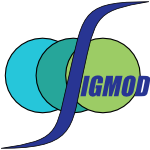 SIGMOD-2007-AgrawalEKV #ranking
SIGMOD-2007-AgrawalEKV #ranking- Auditing disclosure by relevance ranking (RA, AVE, JK, RV), pp. 79–90.
 SIGMOD-2007-HuangN #data flow #named #query
SIGMOD-2007-HuangN #data flow #named #query- K-relevance: a spectrum of relevance for data sources impacting a query (JH, JFN), pp. 163–174.
 VLDB-2007-BitonBD #query #workflow
VLDB-2007-BitonBD #query #workflow- Zoom*UserViews: Querying Relevant Provenance in Workflow Systems (OB, SCB, SBD), pp. 1366–1369.
 MSR-2007-GrechanikCP #prototype
MSR-2007-GrechanikCP #prototype- Finding Relevant Applications for Prototyping (MG, KMC, KP), p. 12.
 HCI-AS-2007-CarusiM #education #interactive #learning #process
HCI-AS-2007-CarusiM #education #interactive #learning #process- An Essay About the Relevance of Educational Interactive Systems in the Learning Process (AC, CRM), pp. 183–189.
 HCI-AS-2007-QinR #metric
HCI-AS-2007-QinR #metric- Relevance Measurement on Chinese Search Results (HQ, PLPR), pp. 981–988.
 ICEIS-DISI-2007-BergamaschiOGS #metadata
ICEIS-DISI-2007-BergamaschiOGS #metadata- Relevant values: New metadata to provide insight on attribute values at schema level (SB, MO, FG, CS), pp. 274–279.
 ICEIS-EIS-2007-HubertM #evaluation #feedback
ICEIS-EIS-2007-HubertM #evaluation #feedback- Relevance Feedback as an Indicator to Select the Best Search Engine — Evaluation on TREC Data (GH, JM), pp. 184–189.
 ICEIS-HCI-2007-MelguizoBDBB #memory management #recommendation #what
ICEIS-HCI-2007-MelguizoBDBB #memory management #recommendation #what- What a Proactive Recommendation System Needs — Relevance, Non-Intrusiveness, and a New Long-Term Memory (MCPM, TB, AD, LB, AvdB), pp. 86–91.
 CIKM-2007-AslamY #documentation
CIKM-2007-AslamY #documentation- Inferring document relevance from incomplete information (JAA, EY), pp. 633–642.
 CIKM-2007-BacheBC #modelling #probability
CIKM-2007-BacheBC #modelling #probability- Language models, probability of relevance and relevance likelihood (RB, MB, FC), pp. 853–856.
 CIKM-2007-CarteretteS #testing
CIKM-2007-CarteretteS #testing- Hypothesis testing with incomplete relevance judgments (BC, MDS), pp. 643–652.
 CIKM-2007-HlaouaBP #feedback #retrieval #xml
CIKM-2007-HlaouaBP #feedback #retrieval #xml- Combination of evidences in relevance feedback for xml retrieval (LH, MB, KPS), pp. 893–896.
 CIKM-2007-LadY #feedback #using
CIKM-2007-LadY #feedback #using- Generalizing from relevance feedback using named entity wildcards (AL, YY), pp. 721–730.
 ECIR-2007-BaillieAR #evaluation #retrieval
ECIR-2007-BaillieAR #evaluation #retrieval- A Retrieval Evaluation Methodology for Incomplete Relevance Assessments (MB, LA, IR), pp. 271–282.
 ECIR-2007-MacdonaldO #feedback #using
ECIR-2007-MacdonaldO #feedback #using- Using Relevance Feedback in Expert Search (CM, IO), pp. 431–443.
 ECIR-2007-MasegosaJJ #independence #predict
ECIR-2007-MasegosaJJ #independence #predict- Evaluating Query-Independent Object Features for Relevancy Prediction (ARM, HJ, JMJ), pp. 283–294.
 ECIR-2007-Robertson07a #on the
ECIR-2007-Robertson07a #on the- On Score Distributions and Relevance (SR), pp. 40–51.
 ECIR-2007-TsikrikaL #framework #retrieval #web
ECIR-2007-TsikrikaL #framework #retrieval #web- Combining Evidence for Relevance Criteria: A Framework and Experiments in Web Retrieval (TT, ML), pp. 481–493.
 ECIR-2007-XuAZ #feedback #learning
ECIR-2007-XuAZ #feedback #learning- Incorporating Diversity and Density in Active Learning for Relevance Feedback (ZX, RA, YZ), pp. 246–257.
 ECIR-2007-XuCLCH #documentation
ECIR-2007-XuCLCH #documentation- Searching Documents Based on Relevance and Type (JX, YC, HL, NC, YH), pp. 629–636.
 ECIR-2007-YamoutOT #feedback #query #using
ECIR-2007-YamoutOT #feedback #query #using- Relevance Feedback Using Weight Propagation Compared with Information-Theoretic Query Expansion (FY, MPO, JT), pp. 258–270.
 ECIR-2007-YeungBCK #approach #documentation #learning
ECIR-2007-YeungBCK #approach #documentation #learning- A Bayesian Approach for Learning Document Type Relevance (PCKY, SB, CLAC, MK), pp. 753–756.
 ICML-2007-LeeCVK #learning #multi
ICML-2007-LeeCVK #learning #multi- Learning a meta-level prior for feature relevance from multiple related tasks (SIL, VC, DV, DK), pp. 489–496.
 ICML-2007-WipfN #using
ICML-2007-WipfN #using- Beamforming using the relevance vector machine (DPW, SSN), pp. 1023–1030.
 KDD-2007-ZhuBK #automation
KDD-2007-ZhuBK #automation- Extracting relevant named entities for automated expense reimbursement (GZ, TJB, VK), pp. 1004–1012.
 MLDM-2007-ChengCJY #feature model
MLDM-2007-ChengCJY #feature model- Nonlinear Feature Selection by Relevance Feature Vector Machine (HC, HC, GJ, KY), pp. 144–159.
 SIGIR-2007-BompadaCCKS #metric #on the #robust
SIGIR-2007-BompadaCCKS #metric #on the #robust- On the robustness of relevance measures with incomplete judgments (TB, CCC, JC, RK, RS), pp. 359–366.
 SIGIR-2007-Collins-ThompsonC #estimation #feedback #nondeterminism #pseudo
SIGIR-2007-Collins-ThompsonC #estimation #feedback #nondeterminism #pseudo- Estimation and use of uncertainty in pseudo-relevance feedback (KCT, JC), pp. 303–310.
 SIGIR-2007-HuffmanH #how #predict #question
SIGIR-2007-HuffmanH #how #predict #question- How well does result relevance predict session satisfaction? (SBH, MH), pp. 567–574.
 SIGIR-2007-Jansen #query #web
SIGIR-2007-Jansen #query #web- Investigating the relevance of sponsored results for web ecommerce queries (BJJ), pp. 857–858.
 SIGIR-2007-KampsLP #documentation #retrieval
SIGIR-2007-KampsLP #documentation #retrieval- Evaluating relevant in context: document retrieval with a twist (JK, ML, JP), pp. 749–750.
 SIGIR-2007-KoAS #effectiveness #feedback #generative #pseudo #using
SIGIR-2007-KoAS #effectiveness #feedback #generative #pseudo #using- An effective snippet generation method using the pseudo relevance feedback technique (YK, HA, JS), pp. 711–712.
 SIGIR-2007-MasegosaJJ #documentation #predict
SIGIR-2007-MasegosaJJ #documentation #predict- Effects of highly agreed documents in relevancy prediction (ARM, HJ, JMJ), pp. 883–884.
 SIGIR-2007-MoffatWZ
SIGIR-2007-MoffatWZ- Strategic system comparisons via targeted relevance judgments (AM, WW, JZ), pp. 375–382.
 SIGIR-2007-NieDW #community #ranking
SIGIR-2007-NieDW #community #ranking- Ranking by community relevance (LN, BDD, BW), pp. 873–874.
 SIGIR-2007-ShahKF #algorithm #case study #feedback
SIGIR-2007-ShahKF #algorithm #case study #feedback- Making mind and machine meet: a study of combining cognitive and algorithmic relevance feedback (CS, DK, XF), pp. 877–878.
 SIGIR-2007-ShahM #information management #named
SIGIR-2007-ShahM #information management #named- DiscoverInfo: a tool for discovering information with relevance and novelty (CS, GM), p. 902.
 SIGIR-2007-SmuckerA #similarity #using #web
SIGIR-2007-SmuckerA #similarity #using #web- Using similarity links as shortcuts to relevant web pages (MDS, JA), pp. 863–864.
 SIGIR-2007-Soboroff #comparison
SIGIR-2007-Soboroff #comparison- A comparison of pooled and sampled relevance judgments (IS), pp. 785–786.
 SIGIR-2007-TroyZ #rank
SIGIR-2007-TroyZ #rank- Enhancing relevance scoring with chronological term rank (ADT, GQZ), pp. 599–606.
 SIGIR-2007-WhiteCC #pseudo #query #refinement
SIGIR-2007-WhiteCC #pseudo #query #refinement- Comparing query logs and pseudo-relevance feedbackfor web-search query refinement (RWW, CLAC, SC), pp. 831–832.
 SIGIR-2007-YiAC #modelling
SIGIR-2007-YiAC #modelling- Matching resumes and jobs based on relevance models (XY, JA, WBC), pp. 809–810.
 SIGIR-2007-ZhengCSZ #framework #learning #ranking #using
SIGIR-2007-ZhengCSZ #framework #learning #ranking #using- A regression framework for learning ranking functions using relative relevance judgments (ZZ, KC, GS, HZ), pp. 287–294.
 SAC-2007-NangP #feedback #multi #performance #retrieval
SAC-2007-NangP #feedback #multi #performance #retrieval- An efficient indexing structure for content based multimedia retrieval with relevance feedback (JN, JP), pp. 517–524.
 CADE-2007-SutcliffeP #axiom #named #semantics
CADE-2007-SutcliffeP #axiom #named #semantics- SRASS — A Semantic Relevance Axiom Selection System (GS, YP), pp. 295–310.
 DAC-2006-MajumdarCG #analysis #validation
DAC-2006-MajumdarCG #analysis #validation- Hold time validation on silicon and the relevance of hazards in timing analysis (AM, WYC, JG), pp. 326–331.
 VLDB-2006-ChakaravarthyGRM #documentation
VLDB-2006-ChakaravarthyGRM #documentation- Efficiently Linking Text Documents with Relevant Structured Information (VTC, HG, PR, MKM), pp. 667–678.
 VLDB-2006-ZhangZWSP #feedback #image #interactive #using
VLDB-2006-ZhangZWSP #feedback #image #interactive #using- Using High Dimensional Indexes to Support Relevance Feedback Based Interactive Images Retrival (JZ, XZ, WW, BS, JP), pp. 1211–1214.
 CIKM-2006-AhlgrenG #case study #comparative #evaluation #metric #retrieval
CIKM-2006-AhlgrenG #case study #comparative #evaluation #metric #retrieval- Retrieval evaluation with incomplete relevance data: a comparative study of three measures (PA, LG), pp. 872–873.
 CIKM-2006-EguchiC #dependence #performance #query
CIKM-2006-EguchiC #dependence #performance #query- Boosting relevance model performance with query term dependence (KE, WBC), pp. 792–793.
 CIKM-2006-HlaouaSB #feedback #retrieval #xml
CIKM-2006-HlaouaSB #feedback #retrieval #xml- A structure-oriented relevance feedback method for XML retrieval (LH, KS, MB), pp. 780–781.
 CIKM-2006-ShakeryZ #hypermedia #probability #retrieval
CIKM-2006-ShakeryZ #hypermedia #probability #retrieval- A probabilistic relevance propagation model for hypertext retrieval (AS, CZ), pp. 550–558.
 CIKM-2006-WuLWK #feedback #probability
CIKM-2006-WuLWK #feedback #probability- Probabilistic document-context based relevance feedback with limited relevance judgments (HCW, RWPL, KFW, KLK), pp. 854–855.
 ECIR-2006-CloughJP #documentation
ECIR-2006-CloughJP #documentation- Judging the Spatial Relevance of Documents for GIR (PDC, HJ, RP), pp. 548–552.
 ECIR-2006-GurrinJS #feedback #video
ECIR-2006-GurrinJS #feedback #video- Supporting Relevance Feedback in Video Search (CG, DJ, AFS), pp. 561–564.
 ECIR-2006-KeskustaloJP #feedback #interactive #modelling #quality #simulation
ECIR-2006-KeskustaloJP #feedback #interactive #modelling #quality #simulation- The Effects of Relevance Feedback Quality and Quantity in Interactive Relevance Feedback: A Simulation Based on User Modeling (HK, KJ, AP), pp. 191–204.
 ECIR-2006-WangVR #collaboration
ECIR-2006-WangVR #collaboration- A User-Item Relevance Model for Log-Based Collaborative Filtering (JW, APdV, MJTR), pp. 37–48.
 ECIR-2006-WenRB #behaviour #online #topic
ECIR-2006-WenRB #behaviour #online #topic- The Effects on Topic Familiarity on Online Search Behaviour and Use of Relevance Criteria (LW, IR, PB), pp. 456–459.
 ECIR-2006-YamoutOT #feedback #using
ECIR-2006-YamoutOT #feedback #using- Relevance Feedback Using Weight Propagation (FY, MPO, JT), pp. 575–578.
 ICPR-v2-2006-ChengW #feedback #image #multi #retrieval
ICPR-v2-2006-ChengW #feedback #image #multi #retrieval- Multi-View Sampling for Relevance Feedback in Image Retrieval (JC, KW), pp. 881–884.
 ICPR-v3-2006-QiuXT #clustering #feedback #kernel #performance #using
ICPR-v3-2006-QiuXT #clustering #feedback #kernel #performance #using- Efficient Relevance Feedback Using Semi-supervised Kernel-specified K-means Clustering (BQ, CX, QT), pp. 316–319.
 ICPR-v4-2006-KropotovPVV #kernel #on the #principle #using
ICPR-v4-2006-KropotovPVV #kernel #on the #principle #using- On Kernel Selection in Relevance Vector Machines Using Stability Principle (DK, NP, OV, DV), pp. 233–236.
 KR-2006-Bennett #formal method
KR-2006-Bennett #formal method- A Theory of Vague Adjectives Grounded in Relevant Observables (BB), pp. 36–45.
 SIGIR-2006-AslamY #documentation #precise
SIGIR-2006-AslamY #documentation #precise- Inferring document relevance via average precision (JAA, EY), pp. 601–602.
 SIGIR-2006-BeerM #named #towards
SIGIR-2006-BeerM #named #towards- Rpref: a generalization of Bpref towards graded relevance judgments (JDB, MFM), pp. 637–638.
 SIGIR-2006-ChenK #documentation #less is more #modelling #probability
SIGIR-2006-ChenK #documentation #less is more #modelling #probability- Less is more: probabilistic models for retrieving fewer relevant documents (HC, DRK), pp. 429–436.
 SIGIR-2006-DiazM #corpus #estimation #modelling #scalability #using
SIGIR-2006-DiazM #corpus #estimation #modelling #scalability #using- Improving the estimation of relevance models using large external corpora (FD, DM), pp. 154–161.
 SIGIR-2006-HeP #feedback
SIGIR-2006-HeP #feedback- Comparing two blind relevance feedback techniques (DH, YP), pp. 649–650.
 SIGIR-2006-JinFM #analysis #consistency #feedback #nondeterminism #performance
SIGIR-2006-JinFM #analysis #consistency #feedback #nondeterminism #performance- Quantative analysis of the impact of judging inconsistency on the performance of relevance feedback (XJ, JCF, JM), pp. 655–656.
 SIGIR-2006-KellyF #elicitation #feedback
SIGIR-2006-KellyF #elicitation #feedback- Elicitation of term relevance feedback: an investigation of term source and context (DK, XF), pp. 453–460.
 SIGIR-2006-KumaranA #feedback #pseudo
SIGIR-2006-KumaranA #feedback #pseudo- Simple questions to improve pseudo-relevance feedback results (GK, JA), pp. 661–662.
 SIGIR-2006-ParikhK #feedback #named #query #using
SIGIR-2006-ParikhK #feedback #named #query #using- Unity: relevance feedback using user query logs (JP, SK), pp. 689–690.
 SIGIR-2006-RamirezWV #using #xml
SIGIR-2006-RamirezWV #using #xml- Using small XML elements to support relevance (GR, TW, APdV), pp. 693–694.
 SIGIR-2006-Sakai06a #documentation
SIGIR-2006-Sakai06a #documentation- Give me just one highly relevant document: P-measure (TS), pp. 695–696.
 SIGIR-2006-TaoZ #estimation #feedback #modelling #pseudo #robust
SIGIR-2006-TaoZ #estimation #feedback #modelling #pseudo #robust- Regularized estimation of mixture models for robust pseudo-relevance feedback (TT, CZ), pp. 162–169.
 SIGIR-2006-VassilvitskiiB #distance #feedback #using #web
SIGIR-2006-VassilvitskiiB #distance #feedback #using #web- Using web-graph distance for relevance feedback in web search (SV, EB), pp. 147–153.
 SAC-2006-Cheng #information management #logic
SAC-2006-Cheng #information management #logic- Deontic relevant logic as the logical basis for legal information systems (JC), pp. 319–320.
 SAC-2006-LiuHVY #feedback #performance #scalability
SAC-2006-LiuHVY #feedback #performance #scalability- Efficient target search with relevance feedback for large CBIR systems (DL, KAH, KV, NY), pp. 1393–1397.
 SAC-2006-PetrakisKVM #feedback #image #retrieval #web
SAC-2006-PetrakisKVM #feedback #image #retrieval #web- Relevance feedback methods for logo and trademark image retrieval on the web (EGMP, KK, EV, EEM), pp. 1084–1088.
 SAC-2006-SauvagnatHB #question #retrieval #using #what #xml
SAC-2006-SauvagnatHB #question #retrieval #using #what #xml- XML retrieval: what about using contextual relevance? (KS, LH, MB), pp. 1114–1115.
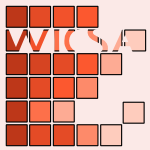 WICSA-2005-SagarduiAE #architecture #experience
WICSA-2005-SagarduiAE #architecture #experience- The ADOV Method: an Experience in Selecting the Relevant Views of an Architecture in a SME (GSM, GA, LE), pp. 259–260.
 ICDAR-2005-HuangDDGH #documentation #layout #ranking
ICDAR-2005-HuangDDGH #documentation #layout #ranking- Document Ranking by Layout Relevance (MH, DD, DSD, LG, BAH), pp. 362–366.
 VLDB-2005-ZadorozhnyGRY #adaptation #distributed #framework #named #network
VLDB-2005-ZadorozhnyGRY #adaptation #distributed #framework #named #network- AReNA: Adaptive Distributed Catalog Infrastructure Based On Relevance Networks (VZ, AG, LR, QY), pp. 1287–1290.
 ITiCSE-2005-Demaille #compilation
ITiCSE-2005-Demaille #compilation- Making compiler construction projects relevant to core curriculums (AD), pp. 266–270.
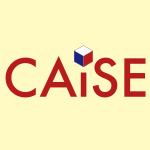 CAiSE-2005-CabotT #constraints #ocl
CAiSE-2005-CabotT #constraints #ocl- Computing the Relevant Instances That May Violate an OCL Constraint (JC, ET), pp. 48–62.
 CIKM-2005-JiangZ #markov #modelling #using
CIKM-2005-JiangZ #markov #modelling #using- Accurately extracting coherent relevant passages using hidden Markov models (JJ, CZ), pp. 289–290.
 CIKM-2005-RoyMBR #automation #query #towards
CIKM-2005-RoyMBR #automation #query #towards- Towards automatic association of relevant unstructured content with structured query results (PR, MKM, BB, SR), pp. 405–412.
 CIKM-2005-TangHCG #crawling #quality #topic
CIKM-2005-TangHCG #crawling #quality #topic- Focused crawling for both topical relevance and quality of medical information (TTT, DH, NC, KG), pp. 147–154.
 CIKM-2005-TerraW #documentation #feedback
CIKM-2005-TerraW #documentation #feedback- Poison pills: harmful relevant documents in feedback (ELT, RW), pp. 319–320.
 ECIR-2005-AliCJ #effectiveness #evaluation
ECIR-2005-AliCJ #effectiveness #evaluation- Exploring Cost-Effective Approaches to Human Evaluation of Search Engine Relevance (KA, CCC, YFJ), pp. 360–374.
 ECIR-2005-Boldareva #image #representation
ECIR-2005-Boldareva #image #representation- Improving Image Representation with Relevance Judgements from the Searchers (LVB), pp. 555–557.
 ECIR-2005-BoydellGSS #modelling
ECIR-2005-BoydellGSS #modelling- Manipulating the Relevance Models of Existing Search Engines (OB, CG, AFS, BS), pp. 540–542.
 ECIR-2005-LehtokangasKJ #documentation
ECIR-2005-LehtokangasKJ #documentation- Dictionary-Based CLIR Loses Highly Relevant Documents (RL, HK, KJ), pp. 421–432.
 ECIR-2005-VinayCMW #algorithm #feedback
ECIR-2005-VinayCMW #algorithm #feedback- Evaluating Relevance Feedback Algorithms for Searching on Small Displays (VV, IJC, NMF, KRW), pp. 185–199.
 ICML-2005-RasmussenQ
ICML-2005-RasmussenQ- Healing the relevance vector machine through augmentation (CER, JQC), pp. 689–696.
 SIGIR-2005-CraswellRZT #independence #query
SIGIR-2005-CraswellRZT #independence #query- Relevance weighting for query independent evidence (NC, SER, HZ, MJT), pp. 416–423.
 SIGIR-2005-HoenkampD05a #feedback #query #visual notation
SIGIR-2005-HoenkampD05a #feedback #query #visual notation- Live visual relevance feedback for query formulation (EH, GvD), pp. 611–612.
 SIGIR-2005-LinM #feedback #independence
SIGIR-2005-LinM #feedback #independence- Assessing the term independence assumption in blind relevance feedback (JJL, GCM), pp. 635–636.
 SIGIR-2005-PerkioBT #adaptation #algorithm #ranking
SIGIR-2005-PerkioBT #adaptation #algorithm #ranking- A temporally adaptive content-based relevance ranking algorithm (JP, WLB, HT), pp. 647–648.
 SIGIR-2005-QinLZCM #case study #web
SIGIR-2005-QinLZCM #case study #web- A study of relevance propagation for web search (TQ, TYL, XDZ, ZC, WYM), pp. 408–415.
 SIGIR-2005-VriesR #question
SIGIR-2005-VriesR #question- Relevance information: a loss of entropy but a gain for IDF? (APdV, TR), pp. 282–289.
 SIGIR-2005-WhiteRJ #case study #feedback
SIGIR-2005-WhiteRJ #case study #feedback- A study of factors affecting the utility of implicit relevance feedback (RWW, IR, JMJ), pp. 35–42.
 SAC-2005-CuiK #analysis #documentation #topic
SAC-2005-CuiK #analysis #documentation #topic- Topic activation analysis for document streams based on document arrival rate and relevance (CC, HK), pp. 1089–1095.
 DocEng-2004-GancarskiH #documentation #xml
DocEng-2004-GancarskiH #documentation #xml- Presenting the results of relevance-oriented search over XML documents (ALG, PRH), pp. 31–33.
 VLDB-2004-EsterKS #crawling #performance
VLDB-2004-EsterKS #crawling #performance- Accurate and Efficient Crawling for Relevant Websites (ME, HPK, MS), pp. 396–407.
 ICEIS-v1-2004-LaiCC #feedback #incremental #topic
ICEIS-v1-2004-LaiCC #feedback #incremental #topic- Applying Cross-Topic Relationships to Incremental Relevance Feedback (TCHL, SCfC, KFLC), pp. 356–363.
 CIKM-2004-BotW #algorithm #documentation #feedback #using
CIKM-2004-BotW #algorithm #documentation #feedback #using- Improving document representations using relevance feedback: the RFA algorithm (RSB, YfBW), pp. 270–278.
 CIKM-2004-MaG #detection #feedback #information retrieval #using
CIKM-2004-MaG #detection #feedback #information retrieval #using- Using relevance feedback to detect misuse for information retrieval systems (LM, NG), pp. 164–165.
 CIKM-2004-PiwowarskiL #consistency #evaluation #retrieval #xml
CIKM-2004-PiwowarskiL #consistency #evaluation #retrieval #xml- Providing consistent and exhaustive relevance assessments for XML retrieval evaluation (BP, ML), pp. 361–370.
 ECIR-2004-ChenTH #corpus #identification #novel #using
ECIR-2004-ChenTH #corpus #identification #novel #using- Identification of Relevant and Novel Sentences Using Reference Corpus (HHC, MFT, MHH), pp. 85–98.
 ECIR-2004-CloughS #feedback #image #retrieval
ECIR-2004-CloughS #feedback #image #retrieval- Relevance Feedback for Cross Language Image Retrieval (PDC, MS), pp. 238–252.
 ECIR-2004-KazaiML #assessment #case study
ECIR-2004-KazaiML #assessment #case study- A Study of the Assessment of Relevance for the INEX’02 Test Collection (GK, SM, ML), pp. 296–310.
 ICML-2004-DSouzaVS
ICML-2004-DSouzaVS- The Bayesian backfitting relevance vector machine (AD, SV, SS).
 ICML-2004-QiMPG #automation #predict
ICML-2004-QiMPG #automation #predict- Predictive automatic relevance determination by expectation propagation (Y(Q, TPM, RWP, ZG).
 ICPR-v2-2004-GiacintoR #feedback #image #prototype #retrieval
ICPR-v2-2004-GiacintoR #feedback #image #prototype #retrieval- Nearest-Prototype Relevance Feedback for Content Based Image Retrieval (GG, FR), pp. 989–992.
 ICPR-v2-2004-TaoT #analysis #feedback #image #parametricity #retrieval
ICPR-v2-2004-TaoT #analysis #feedback #image #parametricity #retrieval- Nonparametric Discriminant Analysis in Relevance Feedback for Content-Based Image Retrieval (DT, XT), pp. 1013–1016.
 ICPR-v2-2004-WuLM #image #interactive #metric #multi #named #retrieval
ICPR-v2-2004-WuLM #image #interactive #metric #multi #named #retrieval- WillHunter: Interactive Image Retrieval with Multilevel Relevance Measurement (HW, HL, SM), pp. 1009–1012.
 ICPR-v3-2004-HoiL #feedback
ICPR-v3-2004-HoiL #feedback- Group-based Relevance Feedback with Support Vector Machine Ensembles (SCHH, MRL), pp. 874–877.
 ICPR-v3-2004-LiSH #estimation #feedback #graph #image #retrieval
ICPR-v3-2004-LiSH #estimation #feedback #graph #image #retrieval- Image Retrieval with Relevance Feedback Based on Graph-Theoretic Region Correspondence Estimation (CYL, MCS, CTH), pp. 842–845.
 ICPR-v3-2004-PalenichkaMZ #image #locality #multi #performance #using
ICPR-v3-2004-PalenichkaMZ #image #locality #multi #performance #using- Fast Object Localization using Multi-Scale Image Relevance Function (RMP, RM, MBZ), pp. 227–230.
 ICPR-v3-2004-SotocaSP #multi #naive bayes #set #using
ICPR-v3-2004-SotocaSP #multi #naive bayes #set #using- Attribute Relevance in Multiclass Data Sets Using the Naive Bayes Rule (JMS, JSS, FP), pp. 426–429.
 ICPR-v3-2004-WuZZ #feature model #linear #using
ICPR-v3-2004-WuZZ #feature model #linear #using- Relevant Linear Feature Extraction Using Side-information and Unlabeled Data (FW, YZ, CZ), pp. 582–585.
 ICPR-v4-2004-FrancoLM #approach #feedback
ICPR-v4-2004-FrancoLM #approach #feedback- A New Approach for Relevance Feedback Through Positive and Negative Samples (AF, AL, DM), pp. 905–908.
 KR-2004-PeppasCF #distance #semantics
KR-2004-PeppasCF #distance #semantics- Distance Semantics for Relevance-Sensitive Belief Revision (PP, SC, NYF), pp. 319–328.
 SIGIR-2004-AmitayCLS #evaluation #scalability #set #using
SIGIR-2004-AmitayCLS #evaluation #scalability #set #using- Scaling IR-system evaluation using term relevance sets (EA, DC, RL, AS), pp. 10–17.
 SIGIR-2004-Bot #algorithm #documentation #feedback #representation
SIGIR-2004-Bot #algorithm #documentation #feedback #representation- Improving document representation by accumulating relevance feedback (abstract only): the relevance feedback accumulation algorithm (RSB), p. 602.
 SIGIR-2004-CloughS #feedback #pseudo
SIGIR-2004-CloughS #feedback #pseudo- Measuring pseudo relevance feedback & CLIR (PDC, MS), pp. 484–485.
 SIGIR-2004-GuL #comparison #documentation #feedback #information retrieval #using
SIGIR-2004-GuL #comparison #documentation #feedback #information retrieval #using- Comparison of using passages and documents for blind relevance feedback in information retrieval (ZG, ML), pp. 482–483.
 SIGIR-2004-Soboroff #documentation #on the #web
SIGIR-2004-Soboroff #documentation #on the #web- On evaluating web search with very few relevant documents (IS), pp. 530–531.
 SIGIR-2004-WarrenL #bibliography #feedback #information management #reliability
SIGIR-2004-WarrenL #bibliography #feedback #information management #reliability- A review of relevance feedback experiments at the 2003 reliable information access (RIA) workshop (RHW, TL), pp. 570–571.
 SAC-2004-BrowneS #feedback #information retrieval #using #video
SAC-2004-BrowneS #feedback #information retrieval #using #video- Video information retrieval using objects and ostensive relevance feedback (PB, AFS), pp. 1084–1090.
 FSE-2004-PanWZXY #repository #reuse #semantics
FSE-2004-PanWZXY #repository #reuse #semantics- Relevancy based semantic interoperation of reuse repositories (YP, LW, LZ, BX, FY), pp. 211–220.
 ICDAR-2003-KiseYM #2d #documentation #feedback #image #pseudo #retrieval
ICDAR-2003-KiseYM #2d #documentation #feedback #image #pseudo #retrieval- Document Image Retrieval Based on 2D Density Distributions of Terms with Pseudo Relevance Feedback (KK, WY, KM), pp. 488–492.
 SIGMOD-2003-KimC #adaptation #clustering #feedback #image #named #retrieval #using
SIGMOD-2003-KimC #adaptation #clustering #feedback #image #named #retrieval #using- Qcluster: Relevance Feedback Using Adaptive Clustering for Content-Based Image Retrieval (DHK, CWC), pp. 599–610.
 WCRE-2003-WalensteinJLYL #clone detection #detection #problem
WCRE-2003-WalensteinJLYL #clone detection #detection #problem- Problems Creating Task-relevant Clone Detection Reference Data (AW, NJ, JL, YY, AL), pp. 285–295.
 ICEIS-v3-2003-BokovecD #enterprise #implementation #multi
ICEIS-v3-2003-BokovecD #enterprise #implementation #multi- The Relevance of a Global Accounting Model in Multi-Site Erp Implementations (KB, TD), pp. 23–31.
 CIKM-2003-NallapatiCA #feedback #modelling #query #statistics
CIKM-2003-NallapatiCA #feedback #modelling #query #statistics- Relevant query feedback in statistical language modeling (RN, WBC, JA), pp. 560–563.
 CIKM-2003-WidyantoroIY
CIKM-2003-WidyantoroIY- Tracking changes in user interests with a few relevance judgments (DHW, TRI, JY), pp. 548–551.
 ECIR-2003-HarperKY #documentation #evaluation #profiling
ECIR-2003-HarperKY #documentation #evaluation #profiling- Query-Based Document Skimming: A User-Centred Evaluation of Relevance Profiling (DJH, IK, SY), pp. 377–392.
 ECIR-2003-HeeschR #feedback #image #question #retrieval #what
ECIR-2003-HeeschR #feedback #image #question #retrieval #what- Relevance Feedback for Content-Based Image Retrieval: What Can Three Mouse Clicks Achieve? (DH, SMR), pp. 363–376.
 ECIR-2003-NottelmannF #information retrieval #nondeterminism #probability
ECIR-2003-NottelmannF #information retrieval #nondeterminism #probability- From Uncertain Inference to Probability of Relevance for Advanced IR Applications (HN, NF), pp. 235–250.
 ECIR-2003-XuXYT #approach #hybrid #retrieval
ECIR-2003-XuXYT #approach #hybrid #retrieval- A Hybrid Relevance-Feedback Approach to Text Retrieval (ZX, XX, KY, VT), pp. 281–293.
 MLDM-2003-GiacintoR #difference #feedback #image #representation #retrieval
MLDM-2003-GiacintoR #difference #feedback #image #representation #retrieval- Dissimilarity Representation of Images for Relevance Feedback in Content-Based Image Retrieval (GG, FR), pp. 202–214.
 SIGIR-2003-AslamS #effectiveness #on the #retrieval
SIGIR-2003-AslamS #effectiveness #on the #retrieval- On the effectiveness of evaluating retrieval systems in the absence of relevance judgments (JAA, RS), pp. 361–362.
 SIGIR-2003-JeonLM #automation #image #modelling #retrieval #using
SIGIR-2003-JeonLM #automation #image #modelling #retrieval #using- Automatic image annotation and retrieval using cross-media relevance models (JJ, VL, RM), pp. 119–126.
 SIGIR-2003-Sakai #evaluation #multi #performance #retrieval
SIGIR-2003-Sakai #evaluation #multi #performance #retrieval- Average gain ratio: a simple retrieval performance measure for evaluation with multiple relevance levels (TS), pp. 417–418.
 SIGIR-2003-SiC #documentation #estimation
SIGIR-2003-SiC #documentation #estimation- Relevant document distribution estimation method for resource selection (LS, JPC), pp. 298–305.
 SIGIR-2003-ZhaiCL #evaluation #independence #metric #retrieval #topic
SIGIR-2003-ZhaiCL #evaluation #independence #metric #retrieval #topic- Beyond independent relevance: methods and evaluation metrics for subtopic retrieval (CZ, WWC, JDL), pp. 10–17.
 SAC-2003-Ortega-BinderbergeCM #evaluation #feedback #multi #performance #retrieval
SAC-2003-Ortega-BinderbergeCM #evaluation #feedback #multi #performance #retrieval- Efficient Evaluation of Relevance Feedback for Multidimensional All-pairs Retrieval (MOB, KC, SM), pp. 847–852.
 SAC-2003-ScerriMST #algorithm #case study #constraints #distributed #hardware #multi
SAC-2003-ScerriMST #algorithm #case study #constraints #distributed #hardware #multi- Are Multiagent Algorithms Relevant for Real Hardware? A Case Study of Distributed Constraint Algorithms (PS, PJM, WMS, MT), pp. 38–44.
 SAC-2003-WuC #information retrieval #ranking
SAC-2003-WuC #information retrieval #ranking- Methods for Ranking Information Retrieval Systems Without Relevance Judgments (SW, FC), pp. 811–816.
 ASE-2002-LoerH #analysis #interactive #model checking #towards
ASE-2002-LoerH #analysis #interactive #model checking #towards- Towards Usable and Relevant Model Checking Techniques for the Analysis of Dependable Interactive Systems (KL, MDH), pp. 223–226.
 DocEng-2002-ForwardL #bibliography #documentation #tool support
DocEng-2002-ForwardL #bibliography #documentation #tool support- The relevance of software documentation, tools and technologies: a survey (AF, TCL), pp. 26–33.
 VLDB-2002-AshwinGG #adaptation #similarity #using
VLDB-2002-AshwinGG #adaptation #similarity #using- Adaptable Similarity Search using Non-Relevant Information (TVA, RG, SG), pp. 47–58.
 CAiSE-2002-PapadopoulosP #community #recommendation #semantics
CAiSE-2002-PapadopoulosP #community #recommendation #semantics- The Role of Semantic Relevance in Dynamic User Community Management and the Formulation of Recommendations (NP, DP), pp. 200–215.
 CIKM-2002-KellyYBMC #documentation
CIKM-2002-KellyYBMC #documentation- Features of documents relevant to task- and fact-oriented questions (DK, XJY, NJB, VM, WBC), pp. 645–647.
 ECIR-2002-WhiteRJ #feedback #retrieval #web
ECIR-2002-WhiteRJ #feedback #retrieval #web- The Use of Implicit Evidence for Relevance Feedback in Web Retrieval (RW, IR, JMJ), pp. 93–109.
 ICPR-v1-2002-ErdemS #automation #communication #detection #gesture
ICPR-v1-2002-ErdemS #automation #communication #detection #gesture- Automatic Detection of Relevant Head Gestures in American Sign Language Communication (UME, SS), p. 460–?.
 ICPR-v2-2002-KherfiZB #feedback #image #learning #retrieval
ICPR-v2-2002-KherfiZB #feedback #image #learning #retrieval- Learning from Negative Example in Relevance Feedback for Content-Based Image Retrieval (MLK, DZ, AB), pp. 933–936.
 ICPR-v2-2002-Lashkia #learning
ICPR-v2-2002-Lashkia #learning- Learning with Relevant Features and Examples (GVL), pp. 68–71.
 ICPR-v3-2002-YinBCD #performance #retrieval
ICPR-v3-2002-YinBCD #performance #retrieval- Improving Retrieval Performance by Long-term Relevance Information (PYY, BB, KCC, AD), p. 533–?.
 ICPR-v4-2002-Heisterkamp #database #feedback #image #semantics
ICPR-v4-2002-Heisterkamp #database #feedback #image #semantics- Building a Latent Semantic Index of an Image Database from Patterns of Relevance Feedback (DRH), pp. 134–137.
 ICPR-v4-2002-KoB02a #feedback #image #multi #network #probability #retrieval
ICPR-v4-2002-KoB02a #feedback #image #multi #network #probability #retrieval- Probabilistic Neural Networks Supporting Multi-Class Relevance Feedback in Region-Based Image Retrieval (BK, HB), pp. 138–141.
 SIGIR-2002-DziadoszC #question #web
SIGIR-2002-DziadoszC #question #web- Do thumbnail previews help users make better relevance decisions about web search results? (SD, RC), pp. 365–366.
 SIGIR-2002-HoashiZI #feedback #implementation #music #retrieval
SIGIR-2002-HoashiZI #feedback #implementation #music #retrieval- Implementation of relevance feedback for content-based music retrieval based on user prefences (KH, EZ, NI), pp. 385–386.
 SIGIR-2002-LavrenkoCC #modelling
SIGIR-2002-LavrenkoCC #modelling- Cross-lingual relevance models (VL, MC, WBC), pp. 175–182.
 SIGIR-2002-Sormunen #documentation #question
SIGIR-2002-Sormunen #documentation #question- Liberal relevance criteria of TREC -: counting on negligible documents? (ES), pp. 324–330.
 SIGIR-2002-WhiteJR #documentation #feedback #ranking #using #web
SIGIR-2002-WhiteJR #documentation #feedback #ranking #using #web- A system using implicit feedback and top ranking sentences to help users find relevant web documents (RW, JMJ, IR), p. 446.
 SIGIR-2002-WhiteRJ #documentation #evaluation #ranking #using
SIGIR-2002-WhiteRJ #documentation #evaluation #ranking #using- Finding relevant documents using top ranking sentences: an evaluation of two alternative schemes (RW, IR, JMJ), pp. 57–64.
 SIGIR-2002-YuanBK
SIGIR-2002-YuanBK- The relationship between ASK and relevance criteria (XJY, NJB, JYK), pp. 359–360.
 ICSE-2002-YeF #personalisation #reuse
ICSE-2002-YeF #personalisation #reuse- Supporting reuse by delivering task-relevant and personalized information (YY, GF), pp. 513–523.
 ISSTA-2002-Hartman #industrial #question #research
ISSTA-2002-Hartman #industrial #question #research- Is ISSTA research relevant to industry? (AH), pp. 205–206.
 ISSTA-2002-Peciola #industrial #question #research
ISSTA-2002-Peciola #industrial #question #research- Ericsson lab Italy: is ISSTA research relevant to industrial users? (EP), p. 207.
 CIKM-2001-MontagueA #normalisation
CIKM-2001-MontagueA #normalisation- Relevance Score Normalization for Metasearch (MHM, JAA), pp. 427–433.
 CIKM-2001-YuXEK #collaboration #performance
CIKM-2001-YuXEK #collaboration #performance- Selecting Relevant Instances for Efficient and Accurate Collaborative Filtering (KY, XX, ME, HPK), pp. 239–246.
 ICML-2001-DruckerSG #feedback #using
ICML-2001-DruckerSG #feedback #using- Relevance Feedback using Support Vector Machines (HD, BS, DCG), pp. 122–129.
 ICML-2001-RozsypalK #algorithm #classification #nearest neighbour #search-based #using
ICML-2001-RozsypalK #algorithm #classification #nearest neighbour #search-based #using- Using the Genetic Algorithm to Reduce the Size of a Nearest-Neighbor Classifier and to Select Relevant Attributes (AR, MK), pp. 449–456.
 MLDM-2001-BhanuD #clustering #concept #feedback #fuzzy #learning
MLDM-2001-BhanuD #clustering #concept #feedback #fuzzy #learning- Concepts Learning with Fuzzy Clustering and Relevance Feedback (BB, AD), pp. 102–116.
 MLDM-2001-SackK #data mining #evaluation #mining
MLDM-2001-SackK #data mining #evaluation #mining- Evaluation of Clinical Relevance of Clinical Laboratory Investigations by Data Mining (US, MK), pp. 12–22.
 SEKE-2001-Vegas #question #testing #what
SEKE-2001-Vegas #question #testing #what- What Information is Relevant when Selecting Testing Techniques? (SV), pp. 45–52.
 SIGIR-2001-GongL #analysis #semantics #summary #using
SIGIR-2001-GongL #analysis #semantics #summary #using- Generic Text Summarization Using Relevance Measure and Latent Semantic Analysis (YG, XL), pp. 19–25.
 SIGIR-2001-KellyB #feedback #interactive
SIGIR-2001-KellyB #feedback #interactive- Reading Time, Scrolling and Interaction: Exploring Implicit Sources of User Preferences for Relevant Feedback (DK, NJB), pp. 408–409.
 SIGIR-2001-Lam-AdesinaJ #feedback #summary
SIGIR-2001-Lam-AdesinaJ #feedback #summary- Applying Summarization Techniques for Term Selection in Relevance Feedback (AMLA, GJFJ), pp. 1–9.
 SIGIR-2001-LavrenkoC #modelling
SIGIR-2001-LavrenkoC #modelling- Relevance-Based Language Models (VL, WBC), pp. 120–127.
 SIGIR-2001-LosadaB #feedback #framework
SIGIR-2001-LosadaB #feedback #framework- An Homogeneous Framework to Model Relevance Feedback (DEL, AB), pp. 422–423.
 SIGIR-2001-SakaiR #feedback #flexibility #optimisation #pseudo #using
SIGIR-2001-SakaiR #feedback #flexibility #optimisation #pseudo #using- Flexible Pseudo-Relevance Feedback Using Optimization Tables (TS, SER), pp. 396–397.
 SIGIR-2001-SoboroffNC #ranking #retrieval
SIGIR-2001-SoboroffNC #ranking #retrieval- Ranking Retrieval Systems without Relevance Judgments (IS, CKN, PC), pp. 66–73.
 SIGIR-2001-Voorhees #documentation #evaluation
SIGIR-2001-Voorhees #documentation #evaluation- Evaluation by Highly Relevant Documents (EMV), pp. 74–82.
 CIKM-2000-Leuski #interactive
CIKM-2000-Leuski #interactive- Relevance and Reinforcement in Interactive Browsing (AL), pp. 119–126.
 CIKM-2000-Thomsen #industrial #research
CIKM-2000-Thomsen #industrial #research- A relevant research agenda for the decision support industry (ET), p. 1.
 ICPR-v1-2000-MullerMMPS #feedback #image #retrieval
ICPR-v1-2000-MullerMMPS #feedback #image #retrieval- Strategies for Positive and Negative Relevance Feedback in Image Retrieval (HM, WM, SMM, TP, DS), pp. 5043–5042.
 ICPR-v1-2000-WuTH #feedback #image #retrieval
ICPR-v1-2000-WuTH #feedback #image #retrieval- Integrating Unlabeled Images for Image Retrieval Based on Relevance Feedback (YW, QT, TSH), pp. 1021–1024.
 ICPR-v4-2000-AksoyHCG #approach #distance #feedback
ICPR-v4-2000-AksoyHCG #approach #distance #feedback- A Weighted Distance Approach to Relevance Feedback (SA, RMH, FAC, MG), pp. 4812–4815.
 ICPR-v4-2000-HeisterkampPD #image #learning #query #retrieval
ICPR-v4-2000-HeisterkampPD #image #learning #query #retrieval- Feature Relevance Learning with Query Shifting for Content-Based Image Retrieval (DRH, JP, HKD), pp. 4250–4253.
 ICPR-v4-2000-MaderlechnerSS #documentation #image #metric #using #visual notation
ICPR-v4-2000-MaderlechnerSS #documentation #image #metric #using #visual notation- Extraction of Relevant Information from Document Images Using Measures of Visual Attention (GM, AS, PS), pp. 4385–4388.
 ICPR-v4-2000-PatriceK #feedback #image #query #retrieval #similarity
ICPR-v4-2000-PatriceK #feedback #image #query #retrieval #similarity- Texture Similarity Queries and Relevance Feedback for Image Retrieval (BP, HK), pp. 4055–4058.
 SIGIR-2000-FranzM #documentation #word
SIGIR-2000-FranzM #documentation #word- Word document density and relevance scoring (MF, JSM), pp. 345–347.
 SIGIR-2000-HoashiMIH #documentation #using
SIGIR-2000-HoashiMIH #documentation #using- Document filtering method using non-relevant information profile (KH, KM, NI, KH), pp. 176–183.
 SIGIR-2000-HoenkamG #proximity #using
SIGIR-2000-HoenkamG #proximity #using- Finding relevant passages using noun-noun compounds: coherence vs. proximity (EH, RdG), pp. 385–387.
 SIGIR-2000-Iwayama #clustering #documentation #feedback #incremental
SIGIR-2000-Iwayama #clustering #documentation #feedback #incremental- Relevance reedback with a small number of relevance judgements: incremental relevance feedback vs. document clustering (MI), pp. 10–16.
 SIGIR-2000-JarvelinK #documentation #evaluation #information retrieval
SIGIR-2000-JarvelinK #documentation #evaluation #information retrieval- IR evaluation methods for retrieving highly relevant documents (KJ, JK), pp. 41–48.
 SIGIR-2000-Vakkari #documentation #performance
SIGIR-2000-Vakkari #documentation #performance- Relevance and contributing information types of searched documents in task performance (PV), pp. 2–9.
 ICSE-2000-ErnstCGN #detection #invariant
ICSE-2000-ErnstCGN #detection #invariant- Quickly detecting relevant program invariants (MDE, AC, WGG, DN), pp. 449–458.
 ICSE-2000-Faulk #industrial #lessons learnt #re-engineering
ICSE-2000-Faulk #industrial #lessons learnt #re-engineering- Achieving industrial relevance with academic excellence: lessons from the Oregon Master of Software engineering (SRF), pp. 293–302.
 CSEET-1999-WohlinR #education #industrial #re-engineering
CSEET-1999-WohlinR #education #industrial #re-engineering- Achieving Industrial Relevance in Software Engineering Education (CW, BR), pp. 16–25.
 MLDM-1999-PalenichkaV #image #multi #using
MLDM-1999-PalenichkaV #image #multi #using- Extraction of Local Structural Features in Images by Using a Multi-scale Relevance Function (RMP, MAV), pp. 87–102.
 SIGIR-1999-KeoghP #feedback #retrieval
SIGIR-1999-KeoghP #feedback #retrieval- Relevance Feedback Retrieval of Time Series Data (EJK, MJP), pp. 183–190.
 SIGIR-1999-LuM #information retrieval
SIGIR-1999-LuM #information retrieval- Partial Replica Selection Based on Relevance for Information Retrieval (ZL, KSM), pp. 97–104.
 POPL-1999-ChatterjeeRL
POPL-1999-ChatterjeeRL- Relevant Context Inference (RC, BGR, WL), pp. 133–146.
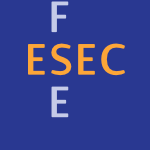 ESEC-FSE-1999-GyimothyBF #debugging #performance #slicing
ESEC-FSE-1999-GyimothyBF #debugging #performance #slicing- An Efficient Relevant Slicing Method for Debugging (TG, ÁB, IF), pp. 303–321.
 CADE-1999-FuchsF #testing
CADE-1999-FuchsF #testing- Abstraction-Based Relevancy Testing for Model Elimination (MF, DF), pp. 344–358.
 CSEET-1998-Lethbridge #bibliography #education #re-engineering
CSEET-1998-Lethbridge #bibliography #education #re-engineering- A Survey of the Relevance of Computer Science and Software Engineering Education (TCL), pp. 56–66.
 ICALP-1998-Barthe
ICALP-1998-Barthe- The Relevance of Proof-Irrelevance (GB), pp. 755–768.
 KDD-1998-KeoghP #classification #clustering #feedback #performance #representation
KDD-1998-KeoghP #classification #clustering #feedback #performance #representation- An Enhanced Representation of Time Series Which Allows Fast and Accurate Classification, Clustering and Relevance Feedback (EJK, MJP), pp. 239–243.
 SIGIR-1998-BorlundI #information retrieval #interactive #metric #performance
SIGIR-1998-BorlundI #information retrieval #interactive #metric #performance- Measures of Relative Relevance and Ranked Half-Life: Performance Indicators for Interactive IR (PB, PI), pp. 324–331.
 SIGIR-1998-Voorhees #effectiveness #metric #retrieval
SIGIR-1998-Voorhees #effectiveness #metric #retrieval- Variations in Relevance Judgments and the Measurement of Retrieval Effectiveness (EMV), pp. 315–323.
 CADE-1998-OhtaIH #on the #testing
CADE-1998-OhtaIH #on the #testing- On the Relationship Between Non-Horn Magic Sets and Relevancy Testing (YO, KI, RH), pp. 333–348.
 CSL-1998-RicheM #complexity #decidability
CSL-1998-RicheM #complexity #decidability- Belnap, Urquhart and Relevant Decidability & Complexity. “Das ist nicht Mathematik, das ist Theologie.” (JR, RKM), pp. 224–240.
 CIKM-1997-LundquistGF #feedback
CIKM-1997-LundquistGF #feedback- Improving Relevance Feedback in the Vector Space Model (CL, DAG, OF), pp. 16–23.
 SIGIR-1997-Dunlop #information retrieval #interactive #modelling
SIGIR-1997-Dunlop #information retrieval #interactive #modelling- Time, Relevance and Interaction Modelling for Information Retrieval (MDD), pp. 206–213.
 SIGIR-1997-RobertsonW #on the
SIGIR-1997-RobertsonW #on the- On Relevance Weights with Little Relevance Information (SER, SW), pp. 16–24.
 RTA-1997-Schulz #algorithm
RTA-1997-Schulz #algorithm- A Criterion for Intractability of E-unification with Free Function Symbols and Its Relevance for Combination Algorithms (KUS), pp. 284–298.
 ICPR-1996-CoxMOY #feedback #image #named #retrieval
ICPR-1996-CoxMOY #feedback #image #named #retrieval- PicHunter: Bayesian relevance feedback for image retrieval (IJC, MLM, SMO, PNY), pp. 361–369.
 ICPR-1996-Fainzilberg #recognition #statistics #why
ICPR-1996-Fainzilberg #recognition #statistics #why- Why relevant features may be unuseful in statistical recognition of two classes (LF), pp. 730–734.
 ICPR-1996-HamkerG #network
ICPR-1996-HamkerG #network- Task-relevant relaxation network for visuo-motory systems (FHH, HMG), pp. 406–410.
 KDD-1996-IttnerS #generative
KDD-1996-IttnerS #generative- Discovery of Relevant New Features by Generating Non-Linear Decision Trees (AI, MS), pp. 108–113.
 KR-1996-BasinMV #framework #implementation #logic
KR-1996-BasinMV #framework #implementation #logic- Implementing Modal and Relevance Logics in a Logical Framework (DAB, SM, LV), pp. 386–397.
 SIGIR-1996-Allan #feedback #incremental #information management
SIGIR-1996-Allan #feedback #incremental #information management- Incremental Relevance Feedback for Information Filtering (JA), pp. 270–278.
 SIGIR-1996-MeghiniS #information retrieval #logic
SIGIR-1996-MeghiniS #information retrieval #logic- A Relevance Terminological Logic for Information Retrieval (CM, US), pp. 197–205.
 SAC-1996-Fritzke #automation #fuzzy #logic #network
SAC-1996-Fritzke #automation #fuzzy #logic #network- Automatic construction of radial basis function networks with the growing neural gas model and its relevance for fuzzy logic (BF), pp. 624–627.
 CIKM-1995-ChenM #information management #learning
CIKM-1995-ChenM #information management #learning- Learning Subjective Relevance to Facilitate Information Access (JRC, NM), pp. 218–225.
 SIGIR-1995-Allan #feedback
SIGIR-1995-Allan #feedback- Relevance Feedback With Too Much Data (JA), pp. 337–343.
 SIGIR-1995-BuckleyS #feedback #optimisation
SIGIR-1995-BuckleyS #feedback #optimisation- Optimization of Relevance Feedback Weights (CB, GS), pp. 351–357.
 SAC-1995-BironK #feedback #information retrieval #performance
SAC-1995-BironK #feedback #information retrieval #performance- New methods for relevance feedback: improving information retrieval performance (PVB, DHK), pp. 482–487.
 TAGT-1994-Assmann #on the #program analysis #term rewriting
TAGT-1994-Assmann #on the #program analysis #term rewriting- On Edge Addition Rewrite Systems and their Relevance to Program Analysis (UA), pp. 321–335.
 SIGIR-1994-BuckleySA #feedback
SIGIR-1994-BuckleySA #feedback- The Effect of Adding Relevance Information in a Relevance Feedback Environment (CB, GS, JA), pp. 292–300.
 SIGIR-1994-Gey #probability #using
SIGIR-1994-Gey #probability #using- Inferring Probability of Relevance Using the Method of Logistic Regression (FCG), pp. 222–231.
 SIGIR-1994-Spink #design #feedback #query
SIGIR-1994-Spink #design #feedback #query- Term Relevance Feedback and Query Expansion: Relation to Design (AS), pp. 81–90.
 ISSTA-1994-BochmannP #bibliography #protocol #testing
ISSTA-1994-BochmannP #bibliography #protocol #testing- Protocol Testing: Review of Methods and Relevance for Software Testing (GvB, AP), pp. 109–124.
 CIKM-1993-MehtaGPN #generative #using
CIKM-1993-MehtaGPN #generative #using- The OODB Path-Method Generator (PMG) Using Precomputed Access Relevance (AM, JG, YP, EJN), pp. 596–605.
 SIGIR-1993-HainesC #feedback #network
SIGIR-1993-HainesC #feedback #network- Relevance Feedback and Inference Networks (DH, WBC), pp. 2–11.
 RE-1993-LuffJHG #analysis #interactive #requirements #social
RE-1993-LuffJHG #analysis #interactive #requirements #social- Tasks and social interaction: the relevance of naturalistic analyses of conduct for requirements engineering (PL, MJ, CH, DG), pp. 187–190.
 HT-ECHT-1992-JonesS #flexibility #hypermedia
HT-ECHT-1992-JonesS #flexibility #hypermedia- Imagined Conversations: The Relevance of Hypertext, Pragmatism, and Cognitive Flexibility Theory to the Interpretation of “Classic Texts” in Intellectual History (RAJ, RS), pp. 141–148.
 WSA-1992-Baker-Finch #analysis #logic #strict
WSA-1992-Baker-Finch #analysis #logic #strict- Relevant Logic and Strictness Analysis (CABF), pp. 221–228.
 SIGIR-1992-Aalbersberg #feedback #incremental
SIGIR-1992-Aalbersberg #feedback #incremental- Incremental Relevance Feedback (IJA), pp. 11–22.
 SIGIR-1992-Harman #feedback #revisited
SIGIR-1992-Harman #feedback #revisited- Relevance Feedback Revisited (DH), pp. 1–10.
 DAC-1991-PangrleBLS #synthesis
DAC-1991-PangrleBLS #synthesis- Relevant Issues in High-Level Connectivity Synthesis (BMP, FB, DAL, AS), pp. 607–610.
 CHI-1991-FischerHR #evaluation #query
CHI-1991-FischerHR #evaluation #query- Intertwining query construction and relevance evaluation (GF, SH, DFR), pp. 55–62.
 SIGMOD-1990-MumickFPR
SIGMOD-1990-MumickFPR- Magic is Relevant (ISM, SJF, HP, RR), pp. 247–258.
 SIGIR-1990-FuhrB #documentation #feedback #probability
SIGIR-1990-FuhrB #documentation #feedback #probability- Probabilistic Document Indexing from Relevance Feedback Data (NF, CB), pp. 45–61.
 ML-1989-PagalloH #algorithm
ML-1989-PagalloH #algorithm- Two Algorithms That Learn DNF by Discovering Relevant Features (GP, DH), pp. 119–123.
 JICSCP-1988-FooRTW88 #deduction
JICSCP-1988-FooRTW88 #deduction- Deduced Relevant Types and Constructive Negation (NYF, ASR, AT, AW), pp. 126–139.
 LICS-1988-Dam #composition #concurrent #logic
LICS-1988-Dam #composition #concurrent #logic- Relevance Logic and Concurrent Composition (MD), pp. 178–185.
 SIGIR-1986-Bookstein #documentation #performance #self
SIGIR-1986-Bookstein #documentation #performance #self- Performance of Self-Taught Documents: Exploiting Co-Relevance Structure in a Document Collection (AB), pp. 244–248.
 SIGIR-1986-Doszkocs #information retrieval #natural language #online #problem
SIGIR-1986-Doszkocs #information retrieval #natural language #online #problem- IR, NLP, AI and UFOS: Or IR-Relevance, Natural Language Problems, Artful Intelligence and User-Friendly Online Systems (TED), pp. 49–57.
 SIGIR-1984-Kwok #feedback #probability #retrieval #similarity
SIGIR-1984-Kwok #feedback #probability #retrieval #similarity- A Document-Document Similarity Measure Based on Cited Titles and Probability Theory, and Its Application to Relevance Feedback Retrieval (KLK), pp. 221–231.
 CADE-1984-OhlbachW #automation #logic #problem #proving #theorem proving
CADE-1984-OhlbachW #automation #logic #problem #proving #theorem proving- Solving a Problem in Relevance Logic with an Automated Theorem Prover (HJO, GW), pp. 496–508.
 SIGIR-1982-Morrissey #feedback #implementation #retrieval #scalability
SIGIR-1982-Morrissey #feedback #implementation #retrieval #scalability- An Intelligent Terminal for Implementing Relevance Feedback on Large Operational Retrieval Systems (JMM), pp. 38–50.
 SIGIR-1982-Radecki #feedback #retrieval
SIGIR-1982-Radecki #feedback #retrieval- Incorporation of Relevance Feedback into Boolean Retrieval System (TR), pp. 133–150.
 SIGIR-1981-WuS #comparison #documentation
SIGIR-1981-WuS #comparison #documentation- A Comparison of Search Term Weighting: Term Relevance vs. Inverse Document Frequency (HW, GS), pp. 30–39.
 SIGIR-1980-LandauerM #estimation
SIGIR-1980-LandauerM #estimation- Message Extraction Through Estimation of Relevance (CL, CM), pp. 117–138.
 SIGIR-1979-LandauerM
SIGIR-1979-LandauerM- Message Extraction Through Estimated Relevance (CL, CM), pp. 64–70.
 SIGIR-1978-Williams #documentation #feedback #performance #question #retrieval
SIGIR-1978-Williams #documentation #feedback #performance #question #retrieval- Does Relevance Feedback Improve Document Retrieval Performance? (RLW), pp. 151–170.
 CASE-2015-LiYTC #architecture #fault
CASE-2015-LiYTC #architecture #fault DAC-2015-ChaariENTK #approach #modelling #safety
DAC-2015-ChaariENTK #approach #modelling #safety DATE-2015-HernandezA #low cost #safety
DATE-2015-HernandezA #low cost #safety ICSME-2015-ValeM #architecture #dynamic analysis #mining #named #using
ICSME-2015-ValeM #architecture #dynamic analysis #mining #named #using SANER-2015-JiangPWXZ
SANER-2015-JiangPWXZ SANER-2015-SharmaTL #automation #identification #named #twitter
SANER-2015-SharmaTL #automation #identification #named #twitter CHI-2015-Cramer #quality
CHI-2015-Cramer #quality CSCW-2015-Diakopoulos #editing
CSCW-2015-Diakopoulos #editing LCT-2015-RodriguezOD #hybrid #learning #recommendation #repository #student
LCT-2015-RodriguezOD #hybrid #learning #recommendation #repository #student ECIR-2015-MaddalenaMST #estimation #using
ECIR-2015-MaddalenaMST #estimation #using ECIR-2015-TranAH #summary #timeline
ECIR-2015-TranAH #summary #timeline ECIR-2015-ValcarcePB #case study #modelling #recommendation
ECIR-2015-ValcarcePB #case study #modelling #recommendation KDD-2015-SuYSSKVY #feedback #graph
KDD-2015-SuYSSKVY #feedback #graph RecSys-2015-ValcarcePB #case study #modelling #recommendation
RecSys-2015-ValcarcePB #case study #modelling #recommendation SEKE-2015-TironiMRM #approach #identification #learning
SEKE-2015-TironiMRM #approach #identification #learning SIGIR-2015-AllegrettiMHPJP
SIGIR-2015-AllegrettiMHPJP SIGIR-2015-BadacheB #quality #social
SIGIR-2015-BadacheB #quality #social SIGIR-2015-BastBH
SIGIR-2015-BastBH SIGIR-2015-Chang #web
SIGIR-2015-Chang #web SIGIR-2015-GwizdkaZ #difference #metric #web
SIGIR-2015-GwizdkaZ #difference #metric #web SIGIR-2015-MegorskayaKS #assessment #on the
SIGIR-2015-MegorskayaKS #assessment #on the SIGIR-2015-ParkKZG #retrieval
SIGIR-2015-ParkKZG #retrieval SIGIR-2015-ShokouhiWY #estimation
SIGIR-2015-ShokouhiWY #estimation SIGIR-2015-SpirinKKSI #metric #optimisation #quality #tuple
SIGIR-2015-SpirinKKSI #metric #optimisation #quality #tuple SIGIR-2015-TurpinSMM #estimation #evaluation #information retrieval
SIGIR-2015-TurpinSMM #estimation #evaluation #information retrieval SIGIR-2015-XiaXLGC #evaluation #learning #metric #optimisation
SIGIR-2015-XiaXLGC #evaluation #learning #metric #optimisation SAC-2015-BurkhardtK #classification #multi #on the
SAC-2015-BurkhardtK #classification #multi #on the ESEC-FSE-2015-LoNZ #how #re-engineering #research
ESEC-FSE-2015-LoNZ #how #re-engineering #research SAT-2015-AnsoteguiGLS #community #detection #using
SAT-2015-AnsoteguiGLS #community #detection #using ASE-2014-PadhyeMS #modelling #named
ASE-2014-PadhyeMS #modelling #named ASE-2014-WangLJ #code search #feedback
ASE-2014-WangLJ #code search #feedback ICSME-2014-KevicFS #approach #named #navigation
ICSME-2014-KevicFS #approach #named #navigation ICEIS-v3-2014-GoncalvesSC #case study #diagrams #metric #process #using
ICEIS-v3-2014-GoncalvesSC #case study #diagrams #metric #process #using CIKM-2014-EickhoffV #modelling
CIKM-2014-EickhoffV #modelling CIKM-2014-LimsopathamMO #modelling #multi #ranking #towards
CIKM-2014-LimsopathamMO #modelling #multi #ranking #towards CIKM-2014-LiuYGS #feedback #graph #pseudo #ranking #recommendation
CIKM-2014-LiuYGS #feedback #graph #pseudo #ranking #recommendation CIKM-2014-YeLQPM #generative
CIKM-2014-YeLQPM #generative CIKM-2014-YilmazVCRB #analysis #documentation
CIKM-2014-YilmazVCRB #analysis #documentation CIKM-2014-ZhouDNHT
CIKM-2014-ZhouDNHT ECIR-2014-GaoWO #comparison #using
ECIR-2014-GaoWO #comparison #using ECIR-2014-LeeC #feedback #pseudo
ECIR-2014-LeeC #feedback #pseudo ECIR-2014-LiS #effectiveness #fault #metric
ECIR-2014-LiS #effectiveness #fault #metric ECIR-2014-YatesGF
ECIR-2014-YatesGF ICML-c2-2014-TaylorGP #analysis #approximate #linear #programming
ICML-c2-2014-TaylorGP #analysis #approximate #linear #programming ICPR-2014-ChenZW #identification #learning #metric
ICPR-2014-ChenZW #identification #learning #metric ICPR-2014-MercanASWBE #image #locality
ICPR-2014-MercanASWBE #image #locality ICPR-2014-OuyedA #classification #kernel
ICPR-2014-OuyedA #classification #kernel KDD-2014-HeFKMP #category theory #clustering
KDD-2014-HeFKMP #category theory #clustering KR-2014-Schuller #formal method #graph
KR-2014-Schuller #formal method #graph SIGIR-2014-BaruahRS
SIGIR-2014-BaruahRS SIGIR-2014-EugsterRSKBRJK #predict
SIGIR-2014-EugsterRSKBRJK #predict SIGIR-2014-HalveyV #image
SIGIR-2014-HalveyV #image SIGIR-2014-KabaryS #retrieval #sketching #video
SIGIR-2014-KabaryS #retrieval #sketching #video SIGIR-2014-KoopmanZ14a #assessment #exclamation #information retrieval #open source
SIGIR-2014-KoopmanZ14a #assessment #exclamation #information retrieval #open source SIGIR-2014-RabinovichRK #feedback #retrieval
SIGIR-2014-RabinovichRK #feedback #retrieval SIGIR-2014-ReichenbachAZ #assessment
SIGIR-2014-ReichenbachAZ #assessment SIGIR-2014-SmuckerGT
SIGIR-2014-SmuckerGT SIGIR-2014-YeH #effectiveness #feedback #pseudo
SIGIR-2014-YeH #effectiveness #feedback #pseudo SIGIR-2014-ZhangZLG14a #crowdsourcing #modelling #multi
SIGIR-2014-ZhangZLG14a #crowdsourcing #modelling #multi SIGIR-2014-ZhuNG #adaptation #learning #random #social
SIGIR-2014-ZhuNG #adaptation #learning #random #social MoDELS-2014-MussbacherABBCCCFHHKSSSW #modelling
MoDELS-2014-MussbacherABBCCCFHHKSSSW #modelling MoDELS-2014-MussbacherABBCCCFHHKSSSW #modelling
MoDELS-2014-MussbacherABBCCCFHHKSSSW #modelling POPL-2014-Benton0N #logic
POPL-2014-Benton0N #logic SAC-2014-FerreiraBBAG #architecture #case study #detection #effectiveness
SAC-2014-FerreiraBBAG #architecture #case study #detection #effectiveness SAC-2014-OliveiraNV #framework #towards
SAC-2014-OliveiraNV #framework #towards FSE-2014-YeBL #debugging #learning #rank #using
FSE-2014-YeBL #debugging #learning #rank #using ICSE-2014-RempelMKC #consistency #guidelines #traceability
ICSE-2014-RempelMKC #consistency #guidelines #traceability RTA-TLCA-2014-Schmitz #logic
RTA-TLCA-2014-Schmitz #logic DATE-2013-SeiterWSD #ocl #specification #uml #verification
DATE-2013-SeiterWSD #ocl #specification #uml #verification HT-2013-GuerreiroG #exclamation #quote #what
HT-2013-GuerreiroG #exclamation #quote #what HT-2013-KumarMZL #identification
HT-2013-KumarMZL #identification ICDAR-2013-SantoshB #documentation #evaluation #information management
ICDAR-2013-SantoshB #documentation #evaluation #information management VLDB-2013-NambiarP #exclamation
VLDB-2013-NambiarP #exclamation VLDB-2014-EravciF13 #feedback
VLDB-2014-EravciF13 #feedback ICSM-2013-DasguptaGMDP #automation #corpus #documentation #traceability
ICSM-2013-DasguptaGMDP #automation #corpus #documentation #traceability CHI-2013-SaNC #animation #mobile
CHI-2013-SaNC #animation #mobile DUXU-CXC-2013-BlanklBH #development #human-computer #lessons learnt
DUXU-CXC-2013-BlanklBH #development #human-computer #lessons learnt CIKM-2013-MiyanishiSU #feedback #pseudo #twitter
CIKM-2013-MiyanishiSU #feedback #pseudo #twitter CIKM-2013-SpeicherBG #exclamation #interactive #predict #web
CIKM-2013-SpeicherBG #exclamation #interactive #predict #web ECIR-2013-DemeesterNTDH #predict #web
ECIR-2013-DemeesterNTDH #predict #web ECIR-2013-MoshfeghiPPJ #comprehension
ECIR-2013-MoshfeghiPPJ #comprehension ECIR-2013-PaltoglouB #ad hoc #microblog #realtime
ECIR-2013-PaltoglouB #ad hoc #microblog #realtime ECIR-2013-PatilDV #concept
ECIR-2013-PatilDV #concept ECIR-2013-VulicM #framework #modelling #probability #topic
ECIR-2013-VulicM #framework #modelling #probability #topic ICML-c3-2013-ChuangGMH #topic
ICML-c3-2013-ChuangGMH #topic KDIR-KMIS-2013-CherichiF #microblog
KDIR-KMIS-2013-CherichiF #microblog KEOD-2013-Surynek #bibliography #collaboration #web
KEOD-2013-Surynek #bibliography #collaboration #web MLDM-2013-GopalakrishnaOLL #algorithm #machine learning #metric
MLDM-2013-GopalakrishnaOLL #algorithm #machine learning #metric RecSys-2013-ShiKBLH #multi #named #optimisation #rank
RecSys-2013-ShiKBLH #multi #named #optimisation #rank SIGIR-2013-Belem #recommendation
SIGIR-2013-Belem #recommendation SIGIR-2013-BonzaniniMR #summary
SIGIR-2013-BonzaniniMR #summary SIGIR-2013-Crane #feedback
SIGIR-2013-Crane #feedback SIGIR-2013-GangulyLJ #case study #documentation #retrieval
SIGIR-2013-GangulyLJ #case study #documentation #retrieval SIGIR-2013-GuoJLYA #interactive #mining #mobile #predict #web
SIGIR-2013-GuoJLYA #interactive #mining #mobile #predict #web SIGIR-2013-KimKZ #evaluation #information retrieval
SIGIR-2013-KimKZ #evaluation #information retrieval SIGIR-2013-LiSCM #towards
SIGIR-2013-LiSCM #towards SIGIR-2013-MoshfeghiJ #behaviour #effectiveness #feedback #using
SIGIR-2013-MoshfeghiJ #behaviour #effectiveness #feedback #using SIGIR-2013-RamanBC #towards #web
SIGIR-2013-RamanBC #towards #web SIGIR-2013-ScholerKWLW #assessment
SIGIR-2013-ScholerKWLW #assessment SIGIR-2013-ShaniT #game studies
SIGIR-2013-ShaniT #game studies SIGIR-2013-VillaH
SIGIR-2013-VillaH SIGIR-2013-WuF #approach #feedback #incremental #performance #pseudo
SIGIR-2013-WuF #approach #feedback #incremental #performance #pseudo SIGIR-2013-ZhangGY #feedback #query
SIGIR-2013-ZhangGY #feedback #query QAPL-2013-Schuppan #ltl #satisfiability
QAPL-2013-Schuppan #ltl #satisfiability ICSE-2013-SantelicesZJCZ #slicing
ICSE-2013-SantelicesZJCZ #slicing CGO-2013-ChouhanRB #interactive #profiling
CGO-2013-ChouhanRB #interactive #profiling TLCA-2013-BentonHN #generative #logic
TLCA-2013-BentonHN #generative #logic DATE-2012-EllenEO #automation #development #embedded #process #safety
DATE-2012-EllenEO #automation #development #embedded #process #safety VLDB-2012-CandanRSW #constraints #named #using
VLDB-2012-CandanRSW #constraints #named #using VLDB-2012-CaoCJNOPW #named #performance #retrieval #web
VLDB-2012-CaoCJNOPW #named #performance #retrieval #web CSMR-2012-BertranAGCS #architecture #identification #on the
CSMR-2012-BertranAGCS #architecture #identification #on the ICSM-2012-BertranACGS #architecture #identification
ICSM-2012-BertranACGS #architecture #identification CIKM-2012-CamposDJN #approach #higher-order #identification #named #web
CIKM-2012-CamposDJN #approach #higher-order #identification #named #web CIKM-2012-KazaiKM #crowdsourcing #quality
CIKM-2012-KazaiKM #crowdsourcing #quality CIKM-2012-KoolenKK #evaluation #social #topic
CIKM-2012-KoolenKK #evaluation #social #topic CIKM-2012-RaiberKT #estimation #using #web
CIKM-2012-RaiberKT #estimation #using #web CIKM-2012-RajputEPA #documentation
CIKM-2012-RajputEPA #documentation CIKM-2012-RamachandranG #graph #identification #representation
CIKM-2012-RamachandranG #graph #identification #representation CIKM-2012-RenCJ #learning #topic
CIKM-2012-RenCJ #learning #topic CIKM-2012-SudituF #adaptation #feedback #trade-off
CIKM-2012-SudituF #adaptation #feedback #trade-off CIKM-2012-Vitter #data type
CIKM-2012-Vitter #data type CIKM-2012-YaoS #learning #relational #ubiquitous
CIKM-2012-YaoS #learning #relational #ubiquitous CIKM-2012-ZhouLZ #community #learning #quality
CIKM-2012-ZhouLZ #community #learning #quality CIKM-2012-ZhouLZ12a #collaboration #query #ranking
CIKM-2012-ZhouLZ12a #collaboration #query #ranking CIKM-2012-ZhuGCL #behaviour #mining #query #recommendation
CIKM-2012-ZhuGCL #behaviour #mining #query #recommendation ECIR-2012-GeraniZC #linear #multi #ranking
ECIR-2012-GeraniZC #linear #multi #ranking ECIR-2012-HosseiniCMKV #documentation #multi #on the
ECIR-2012-HosseiniCMKV #documentation #multi #on the ECIR-2012-KimC #documentation #retrieval
ECIR-2012-KimC #documentation #retrieval ECIR-2012-Lubell-DoughtieH #feedback #learning #rank
ECIR-2012-Lubell-DoughtieH #feedback #learning #rank ECIR-2012-WhitingKJ #feedback #microblog #pseudo #retrieval
ECIR-2012-WhitingKJ #feedback #microblog #pseudo #retrieval ICML-2012-DamianouETL
ICML-2012-DamianouETL ICPR-2012-GauzereBVB #graph #kernel
ICPR-2012-GauzereBVB #graph #kernel ICPR-2012-SeredinMTRW #multimodal #pattern matching #pattern recognition #recognition
ICPR-2012-SeredinMTRW #multimodal #pattern matching #pattern recognition #recognition ICPR-2012-TabernikKBL #learning #low level #statistics #visual notation
ICPR-2012-TabernikKBL #learning #low level #statistics #visual notation ICPR-2012-TuiaMVFR #classification #image
ICPR-2012-TuiaMVFR #classification #image ICPR-2012-WuW #classification #dependence
ICPR-2012-WuW #classification #dependence KDD-2012-GrosskreutzPR
KDD-2012-GrosskreutzPR SIGIR-2012-CaballeroA #feedback #statistics #topic
SIGIR-2012-CaballeroA #feedback #statistics #topic SIGIR-2012-Eickhoff #concept #multi
SIGIR-2012-Eickhoff #concept #multi SIGIR-2012-EickhoffHVS #crowdsourcing #quality
SIGIR-2012-EickhoffHVS #crowdsourcing #quality SIGIR-2012-JungL #matrix #probability
SIGIR-2012-JungL #matrix #probability SIGIR-2012-LimSG #on the #trade-off
SIGIR-2012-LimSG #on the #trade-off SIGIR-2012-McCreadieMO #automation #crowdsourcing #named
SIGIR-2012-McCreadieMO #automation #crowdsourcing #named SIGIR-2012-MiaoHY #pseudo
SIGIR-2012-MiaoHY #pseudo SIGIR-2012-SmuckerJ #fault
SIGIR-2012-SmuckerJ #fault SIGIR-2012-VargasCV #information retrieval #modelling
SIGIR-2012-VargasCV #information retrieval #modelling SIGIR-2012-WhiteB #feedback
SIGIR-2012-WhiteB #feedback SIGIR-2012-Whiting #problem #ranking
SIGIR-2012-Whiting #problem #ranking SIGIR-2012-XiaoZT #image #ranking
SIGIR-2012-XiaoZT #image #ranking SAC-2012-LangohrT #mining
SAC-2012-LangohrT #mining FSE-2012-GanaiLG #analysis #concurrent #multi #named #source code #thread
FSE-2012-GanaiLG #analysis #concurrent #multi #named #source code #thread QoSA-ISARCS-2011-HauckKHR #framework #named
QoSA-ISARCS-2011-HauckKHR #framework #named ASE-2011-GottipatiLJ
ASE-2011-GottipatiLJ DRR-2011-SiddiqiKV #analysis #identification
DRR-2011-SiddiqiKV #analysis #identification HT-2011-ChoudhuryCC #identification #social #social media
HT-2011-ChoudhuryCC #identification #social #social media ICDAR-2011-AugereauJD #documentation #feedback #image #industrial
ICDAR-2011-AugereauJD #documentation #feedback #image #industrial PODS-2011-BenediktGS #runtime
PODS-2011-BenediktGS #runtime CSEET-2011-HuangP
CSEET-2011-HuangP ICPC-2011-RothlisbergerND #ide #named
ICPC-2011-RothlisbergerND #ide #named ICSM-2011-LeeK #clustering #recommendation
ICSM-2011-LeeK #clustering #recommendation CHI-2011-FritzM #developer #how
CHI-2011-FritzM #developer #how DHM-2011-EilersM #composition #learning #modelling #using
DHM-2011-EilersM #composition #learning #modelling #using DUXU-v2-2011-TsaoCY #case study #design #image
DUXU-v2-2011-TsaoCY #case study #design #image HCI-DDA-2011-BirinciGG #feedback #image #query #retrieval
HCI-DDA-2011-BirinciGG #feedback #image #query #retrieval CIKM-2011-AmodeoAG #on the #query
CIKM-2011-AmodeoAG #on the #query CIKM-2011-BicerTN #keyword #modelling #ranking #using
CIKM-2011-BicerTN #keyword #modelling #ranking #using CIKM-2011-GangulyLMJ #feedback #pseudo #query #reduction #using
CIKM-2011-GangulyLMJ #feedback #pseudo #query #reduction #using CIKM-2011-HassanSH #estimation #metric #web
CIKM-2011-HassanSH #estimation #metric #web CIKM-2011-HosseiniCMSV #information retrieval
CIKM-2011-HosseiniCMSV #information retrieval CIKM-2011-HuiHLW #statistics #using
CIKM-2011-HuiHLW #statistics #using CIKM-2011-KazaiKM #crowdsourcing
CIKM-2011-KazaiKM #crowdsourcing CIKM-2011-KeikhaSCC #documentation #effectiveness #feedback #predict #pseudo
CIKM-2011-KeikhaSCC #documentation #effectiveness #feedback #predict #pseudo CIKM-2011-LiSZ #feedback
CIKM-2011-LiSZ #feedback CIKM-2011-LiuFYW #enterprise
CIKM-2011-LiuFYW #enterprise CIKM-2011-ParikhS
CIKM-2011-ParikhS CIKM-2011-SannerGGKK #optimisation #retrieval #topic
CIKM-2011-SannerGGKK #optimisation #retrieval #topic CIKM-2011-WangYS #documentation #feedback
CIKM-2011-WangYS #documentation #feedback CIKM-2011-WangYZ #approach
CIKM-2011-WangYZ #approach CIKM-2011-XingZZ #bias #feedback #on the #problem
CIKM-2011-XingZZ #bias #feedback #on the #problem CIKM-2011-ZhuCXCT #category theory #ranking #towards
CIKM-2011-ZhuCXCT #category theory #ranking #towards ECIR-2011-AlonsoB #crowdsourcing #design #implementation #using
ECIR-2011-AlonsoB #crowdsourcing #design #implementation #using ECIR-2011-BaskayaKJ #feedback #simulation
ECIR-2011-BaskayaKJ #feedback #simulation ECIR-2011-BuccioMS #framework #predict #towards #using
ECIR-2011-BuccioMS #framework #predict #towards #using ECIR-2011-CaiGWZ #adaptation #ranking
ECIR-2011-CaiGWZ #adaptation #ranking ECIR-2011-IofciuDCV #effectiveness #feedback #named #ranking
ECIR-2011-IofciuDCV #effectiveness #feedback #named #ranking ECIR-2011-KeikhaGC #feedback #named
ECIR-2011-KeikhaGC #feedback #named ECIR-2011-ZucconAR #analysis
ECIR-2011-ZucconAR #analysis KDD-2011-El-AriniG #keyword
KDD-2011-El-AriniG #keyword KMIS-2011-RamosSB #process
KMIS-2011-RamosSB #process RecSys-2011-BarbieriCMO #approach #modelling #recommendation
RecSys-2011-BarbieriCMO #approach #modelling #recommendation RecSys-2011-VargasC #metric #rank #recommendation
RecSys-2011-VargasC #metric #rank #recommendation SIGIR-2011-AsadiML
SIGIR-2011-AsadiML SIGIR-2011-CaiGZW #adaptation #education #query #ranking
SIGIR-2011-CaiGZW #adaptation #education #query #ranking SIGIR-2011-DaiSD #learning #rank
SIGIR-2011-DaiSD #learning #rank SIGIR-2011-DuGC #network
SIGIR-2011-DuGC #network SIGIR-2011-HeZSLY #evaluation #retrieval #web
SIGIR-2011-HeZSLY #evaluation #retrieval #web SIGIR-2011-KeikhaGC #modelling
SIGIR-2011-KeikhaGC #modelling SIGIR-2011-KrikonK #ad hoc #feedback #retrieval
SIGIR-2011-KrikonK #ad hoc #feedback #retrieval SIGIR-2011-LawBH
SIGIR-2011-LawBH SIGIR-2011-LvZC #approach #feedback #pseudo
SIGIR-2011-LvZC #approach #feedback #pseudo SIGIR-2011-SakaiS #using
SIGIR-2011-SakaiS #using SIGIR-2011-ScholerTS #consistency #quality
SIGIR-2011-ScholerTS #consistency #quality SIGIR-2011-WangRFZHB #learning #network #online #social
SIGIR-2011-WangRFZHB #learning #network #online #social SIGIR-2011-WhitingMJ #feedback #pseudo
SIGIR-2011-WhitingMJ #feedback #pseudo SIGIR-2011-ZhouHH #ad hoc #estimation #probability #using
SIGIR-2011-ZhouHH #ad hoc #estimation #probability #using SAC-2011-KeikhaGC #retrieval
SAC-2011-KeikhaGC #retrieval ICSE-2011-Bertran #architecture #detection #evolution #smell
ICSE-2011-Bertran #architecture #detection #evolution #smell ICSE-2011-McMillan11a
ICSE-2011-McMillan11a ICSE-2011-McMillanGPXF #named
ICSE-2011-McMillanGPXF #named CASE-2010-BraunS #approach #constraints #logic #predict
CASE-2010-BraunS #approach #constraints #logic #predict HT-2010-DarvishC #video
HT-2010-DarvishC #video VLDB-2010-CaoCJ #web
VLDB-2010-CaoCJ #web PEPM-2010-HoldermansH #strict
PEPM-2010-HoldermansH #strict ICEIS-ISAS-2010-ClariziaGN #identification #query #web
ICEIS-ISAS-2010-ClariziaGN #identification #query #web CIKM-2010-BenderskyCS #feedback #pseudo #query #using
CIKM-2010-BenderskyCS #feedback #pseudo #query #using CIKM-2010-CartrightALM #approximate #modelling #performance #query #using
CIKM-2010-CartrightALM #approximate #modelling #performance #query #using CIKM-2010-DemartiniMBZ #named
CIKM-2010-DemartiniMBZ #named CIKM-2010-DillonC #algorithm #feedback #framework #optimisation #pseudo #robust
CIKM-2010-DillonC #algorithm #feedback #framework #optimisation #pseudo #robust CIKM-2010-GMLPG #trade-off
CIKM-2010-GMLPG #trade-off CIKM-2010-GurumurthySKV #web
CIKM-2010-GurumurthySKV #web CIKM-2010-KarimzadehganZ #feedback #interactive #trade-off
CIKM-2010-KarimzadehganZ #feedback #interactive #trade-off CIKM-2010-LadY #documentation #feedback #learning #novel #rank
CIKM-2010-LadY #documentation #feedback #learning #novel #rank CIKM-2010-LinC #classification #multi
CIKM-2010-LinC #classification #multi CIKM-2010-RaiberK #documentation #identification #on the
CIKM-2010-RaiberK #documentation #identification #on the ECIR-2010-BeresiKBRS
ECIR-2010-BeresiKBRS ECIR-2010-RamanUBB #documentation #feedback #on the #pseudo #using
ECIR-2010-RamanUBB #documentation #feedback #on the #pseudo #using KDD-2010-LiAZ #mining
KDD-2010-LiAZ #mining KDD-2010-SrikantBWP #modelling
KDD-2010-SrikantBWP #modelling KDIR-2010-CamposFHM #approach #feedback #query
KDIR-2010-CamposFHM #approach #feedback #query KDIR-2010-KleizaKT #approach #documentation #identification #query #semantics #similarity #visualisation #word
KDIR-2010-KleizaKT #approach #documentation #identification #query #semantics #similarity #visualisation #word RecSys-2010-ZhengWZLY #case study #empirical #recommendation
RecSys-2010-ZhengWZLY #case study #empirical #recommendation SEKE-2010-SpinolaT #ubiquitous
SEKE-2010-SpinolaT #ubiquitous SIGIR-2010-ArapakisAJ #comparison #modelling #personalisation #predict #topic
SIGIR-2010-ArapakisAJ #comparison #modelling #personalisation #predict #topic SIGIR-2010-ArvolaKJ #documentation
SIGIR-2010-ArvolaKJ #documentation SIGIR-2010-BaileyCWCST
SIGIR-2010-BaileyCWCST SIGIR-2010-DiazMA #online #ranking
SIGIR-2010-DiazMA #online #ranking SIGIR-2010-GuoS #probability
SIGIR-2010-GuoS #probability SIGIR-2010-KoolenK10a
SIGIR-2010-KoolenK10a SIGIR-2010-LeeLSR #precise #retrieval #sentiment #using
SIGIR-2010-LeeLSR #precise #retrieval #sentiment #using SIGIR-2010-LvZ #feedback #pseudo
SIGIR-2010-LvZ #feedback #pseudo SIGIR-2010-RobertsonKY #precise
SIGIR-2010-RobertsonKY #precise SIGIR-2010-ShtokKC #modelling #predict #statistics #using
SIGIR-2010-ShtokKC #modelling #predict #statistics #using SIGIR-2010-SluisDB #experience #information retrieval #towards #user interface
SIGIR-2010-SluisDB #experience #information retrieval #towards #user interface SIGIR-2010-UdupaB #feedback #pseudo
SIGIR-2010-UdupaB #feedback #pseudo ICSE-2010-Fritz
ICSE-2010-Fritz ICSE-2010-GrechanikFXMPC
ICSE-2010-GrechanikFXMPC ICSE-2010-HolmesW #recommendation
ICSE-2010-HolmesW #recommendation DATE-2009-SchlichtmannSKPGDEH #design #how #statistics
DATE-2009-SchlichtmannSKPGDEH #design #how #statistics PODS-2009-AbiteboulBM #documentation #query #satisfiability
PODS-2009-AbiteboulBM #documentation #query #satisfiability VLDB-2009-CongJW #performance #retrieval #web
VLDB-2009-CongJW #performance #retrieval #web ICSM-2009-GayHMM #concept #feedback #on the
ICSM-2009-GayHMM #concept #feedback #on the CHI-2009-OliveiraAR #metric #web
CHI-2009-OliveiraAR #metric #web OCSC-2009-GaoDF #consistency #visualisation
OCSC-2009-GaoDF #consistency #visualisation CIKM-2009-AgarwalGHJK
CIKM-2009-AgarwalGHJK CIKM-2009-AlgarniLXL #effectiveness #feedback #information management #using
CIKM-2009-AlgarniLXL #effectiveness #feedback #information management #using CIKM-2009-BashirR #clustering #documentation #feedback #pseudo
CIKM-2009-BashirR #clustering #documentation #feedback #pseudo CIKM-2009-CaoQCS #feedback #query
CIKM-2009-CaoQCS #feedback #query CIKM-2009-CenLZZRM
CIKM-2009-CenLZZRM CIKM-2009-ChapelleMZG #rank
CIKM-2009-ChapelleMZG #rank CIKM-2009-HuangC #retrieval
CIKM-2009-HuangC #retrieval CIKM-2009-Jarvelin #feedback #interactive
CIKM-2009-Jarvelin #feedback #interactive CIKM-2009-LaberSJACRTV #performance
CIKM-2009-LaberSJACRTV #performance CIKM-2009-LeeNL #approach #feedback #retrieval #using
CIKM-2009-LeeNL #approach #feedback #retrieval #using CIKM-2009-LiuWC #effectiveness #ranking #retrieval #xml
CIKM-2009-LiuWC #effectiveness #ranking #retrieval #xml CIKM-2009-LvZ #adaptation #feedback #information retrieval
CIKM-2009-LvZ #adaptation #feedback #information retrieval CIKM-2009-PuH #clustering #feedback #pseudo #semantics #using
CIKM-2009-PuH #clustering #feedback #pseudo #semantics #using CIKM-2009-WichterichBSS #database #distance #feedback #multi
CIKM-2009-WichterichBSS #database #distance #feedback #multi CIKM-2009-YuKOKK #feedback #named #retrieval
CIKM-2009-YuKOKK #feedback #named #retrieval ECIR-2009-Efron #aspect-oriented #multi #query #using
ECIR-2009-Efron #aspect-oriented #multi #query #using ECIR-2009-MoshfeghiAPJ #collaboration #predict #rating #recommendation #semantics
ECIR-2009-MoshfeghiAPJ #collaboration #predict #rating #recommendation #semantics ECIR-2009-NamNLL #difference #named
ECIR-2009-NamNLL #difference #named ECIR-2009-PereiraDP #multi
ECIR-2009-PereiraDP #multi ECIR-2009-TorjmenPB #multi #retrieval #xml
ECIR-2009-TorjmenPB #multi #retrieval #xml ICML-2009-KuzelkaZ #relational
ICML-2009-KuzelkaZ #relational KDD-2009-WangWZ #named #quality #ranking #web
KDD-2009-WangWZ #named #quality #ranking #web KDIR-2009-SaneifarBLPR #mining
KDIR-2009-SaneifarBLPR #mining MLDM-2009-DuangsoithongW #analysis #classification
MLDM-2009-DuangsoithongW #analysis #classification RecSys-2009-Nnadi #clustering #correlation #multi #recommendation #set
RecSys-2009-Nnadi #clustering #correlation #multi #recommendation #set SEKE-2009-KongLLYW #feedback #refinement #traceability
SEKE-2009-KongLLYW #feedback #refinement #traceability SIGIR-2009-AlonsoM #analysis #e-commerce
SIGIR-2009-AlonsoM #analysis #e-commerce SIGIR-2009-ArapakisKJK #modelling #predict #topic
SIGIR-2009-ArapakisKJK #modelling #predict #topic SIGIR-2009-Ha-ThucMHS #topic
SIGIR-2009-Ha-ThucMHS #topic SIGIR-2009-KazaiMC #quality #towards
SIGIR-2009-KazaiMC #quality #towards SIGIR-2009-LiLJZ #ranking #robust #web
SIGIR-2009-LiLJZ #ranking #robust #web SIGIR-2009-MetzlerJPZ #query
SIGIR-2009-MetzlerJPZ #query SIGIR-2009-RaghavanH #modelling #quality
SIGIR-2009-RaghavanH #modelling #quality SIGIR-2009-SeoJ #graph #precise #retrieval #using
SIGIR-2009-SeoJ #graph #precise #retrieval #using SIGIR-2009-XuJW #feedback #pseudo #query #wiki
SIGIR-2009-XuJW #feedback #pseudo #query #wiki SIGIR-2009-ZhangHS #approximate #modelling
SIGIR-2009-ZhangHS #approximate #modelling SAC-2009-LindvallFKCJ #network #semantics #using
SAC-2009-LindvallFKCJ #network #semantics #using SAC-2009-MartinsBPS #feedback #information retrieval
SAC-2009-MartinsBPS #feedback #information retrieval CADE-2009-RoedererPS #axiom #named
CADE-2009-RoedererPS #axiom #named ISSTA-2009-ClauseO #automation #identification #named #using
ISSTA-2009-ClauseO #automation #identification #named #using VLDB-2008-LachmannR #sequence
VLDB-2008-LachmannR #sequence VLDB-2008-LiuC #identification #keyword #reasoning #xml
VLDB-2008-LiuC #identification #keyword #reasoning #xml ICSM-2008-ThakkarJHHF #repository
ICSM-2008-ThakkarJHHF #repository CSCW-2008-DekelH #collaboration #development
CSCW-2008-DekelH #collaboration #development CIKM-2008-AliCKL #documentation #evaluation #retrieval
CIKM-2008-AliCKL #documentation #evaluation #retrieval CIKM-2008-BroderCFGJR #feedback #using #web
CIKM-2008-BroderCFGJR #feedback #using #web CIKM-2008-HeW #feedback #information retrieval
CIKM-2008-HeW #feedback #information retrieval CIKM-2008-KinneyHZ #how
CIKM-2008-KinneyHZ #how CIKM-2008-LosadaAB #documentation
CIKM-2008-LosadaAB #documentation CIKM-2008-RahurkarC #using
CIKM-2008-RahurkarC #using CIKM-2008-SerdyukovRH #modelling #multi
CIKM-2008-SerdyukovRH #modelling #multi CIKM-2008-UrbainFG #modelling
CIKM-2008-UrbainFG #modelling CIKM-2008-XuA #feedback #query
CIKM-2008-XuA #feedback #query ECIR-2008-LiZ #adaptation #modelling #retrieval
ECIR-2008-LiZ #adaptation #modelling #retrieval ECIR-2008-NaKL08c #probability #similarity #using
ECIR-2008-NaKL08c #probability #similarity #using ECIR-2008-ValletHJ #evaluation #graph #recommendation
ECIR-2008-ValletHJ #evaluation #graph #recommendation ICPR-2008-GehrigS #recognition
ICPR-2008-GehrigS #recognition ICPR-2008-NaYKC #learning
ICPR-2008-NaYKC #learning ICPR-2008-PorroHTNDB #evaluation #performance
ICPR-2008-PorroHTNDB #evaluation #performance KDD-2008-ZhaoWLYC #data flow #identification #multi #semistructured data
KDD-2008-ZhaoWLYC #data flow #identification #multi #semistructured data RecSys-2008-AgrahriMR #people #question
RecSys-2008-AgrahriMR #people #question RecSys-2008-ZanardiC #ranking #recommendation #social #using
RecSys-2008-ZanardiC #ranking #recommendation #social #using SIGIR-2008-Al-MaskariSC
SIGIR-2008-Al-MaskariSC SIGIR-2008-BaileyCSTVY #assessment #matter
SIGIR-2008-BaileyCSTVY #assessment #matter SIGIR-2008-CaoNGR #feedback #pseudo
SIGIR-2008-CaoNGR #feedback #pseudo SIGIR-2008-Diaz08a #feedback #modelling
SIGIR-2008-Diaz08a #feedback #modelling SIGIR-2008-KampsKL #documentation #xml
SIGIR-2008-KampsKL #documentation #xml SIGIR-2008-KeskustaloJPK #higher-order #performance #visualisation
SIGIR-2008-KeskustaloJPK #higher-order #performance #visualisation SIGIR-2008-LeeCA #clustering #feedback #pseudo
SIGIR-2008-LeeCA #clustering #feedback #pseudo SIGIR-2008-MeijWBR #modelling
SIGIR-2008-MeijWBR #modelling SIGIR-2008-PanSW #feedback #fine-grained #retrieval #xml
SIGIR-2008-PanSW #feedback #fine-grained #retrieval #xml SIGIR-2008-RadlinskiBCGJR #approach #optimisation #query
SIGIR-2008-RadlinskiBCGJR #approach #optimisation #query SIGIR-2008-RahurkarC #predict
SIGIR-2008-RahurkarC #predict SIGIR-2008-ScholerT
SIGIR-2008-ScholerT SIGIR-2008-WangFZ #case study #feedback
SIGIR-2008-WangFZ #case study #feedback SIGIR-2008-XuA #feedback
SIGIR-2008-XuA #feedback SIGIR-2008-ZhangY #generative #retrieval #sentiment #topic
SIGIR-2008-ZhangY #generative #retrieval #sentiment #topic POPL-2008-McMillan #heuristic #program analysis
POPL-2008-McMillan #heuristic #program analysis SAC-2008-RazenteBTT #feedback #image #query #retrieval #similarity
SAC-2008-RazenteBTT #feedback #image #query #retrieval #similarity CASE-2007-SchwartzR #modelling #multi
CASE-2007-SchwartzR #modelling #multi SIGMOD-2007-AgrawalEKV #ranking
SIGMOD-2007-AgrawalEKV #ranking SIGMOD-2007-HuangN #data flow #named #query
SIGMOD-2007-HuangN #data flow #named #query VLDB-2007-BitonBD #query #workflow
VLDB-2007-BitonBD #query #workflow MSR-2007-GrechanikCP #prototype
MSR-2007-GrechanikCP #prototype HCI-AS-2007-CarusiM #education #interactive #learning #process
HCI-AS-2007-CarusiM #education #interactive #learning #process HCI-AS-2007-QinR #metric
HCI-AS-2007-QinR #metric ICEIS-DISI-2007-BergamaschiOGS #metadata
ICEIS-DISI-2007-BergamaschiOGS #metadata ICEIS-EIS-2007-HubertM #evaluation #feedback
ICEIS-EIS-2007-HubertM #evaluation #feedback ICEIS-HCI-2007-MelguizoBDBB #memory management #recommendation #what
ICEIS-HCI-2007-MelguizoBDBB #memory management #recommendation #what CIKM-2007-AslamY #documentation
CIKM-2007-AslamY #documentation CIKM-2007-BacheBC #modelling #probability
CIKM-2007-BacheBC #modelling #probability CIKM-2007-CarteretteS #testing
CIKM-2007-CarteretteS #testing CIKM-2007-HlaouaBP #feedback #retrieval #xml
CIKM-2007-HlaouaBP #feedback #retrieval #xml CIKM-2007-LadY #feedback #using
CIKM-2007-LadY #feedback #using ECIR-2007-BaillieAR #evaluation #retrieval
ECIR-2007-BaillieAR #evaluation #retrieval ECIR-2007-MacdonaldO #feedback #using
ECIR-2007-MacdonaldO #feedback #using ECIR-2007-MasegosaJJ #independence #predict
ECIR-2007-MasegosaJJ #independence #predict ECIR-2007-Robertson07a #on the
ECIR-2007-Robertson07a #on the ECIR-2007-TsikrikaL #framework #retrieval #web
ECIR-2007-TsikrikaL #framework #retrieval #web ECIR-2007-XuAZ #feedback #learning
ECIR-2007-XuAZ #feedback #learning ECIR-2007-XuCLCH #documentation
ECIR-2007-XuCLCH #documentation ECIR-2007-YamoutOT #feedback #query #using
ECIR-2007-YamoutOT #feedback #query #using ECIR-2007-YeungBCK #approach #documentation #learning
ECIR-2007-YeungBCK #approach #documentation #learning ICML-2007-LeeCVK #learning #multi
ICML-2007-LeeCVK #learning #multi ICML-2007-WipfN #using
ICML-2007-WipfN #using KDD-2007-ZhuBK #automation
KDD-2007-ZhuBK #automation MLDM-2007-ChengCJY #feature model
MLDM-2007-ChengCJY #feature model SIGIR-2007-BompadaCCKS #metric #on the #robust
SIGIR-2007-BompadaCCKS #metric #on the #robust SIGIR-2007-Collins-ThompsonC #estimation #feedback #nondeterminism #pseudo
SIGIR-2007-Collins-ThompsonC #estimation #feedback #nondeterminism #pseudo SIGIR-2007-HuffmanH #how #predict #question
SIGIR-2007-HuffmanH #how #predict #question SIGIR-2007-Jansen #query #web
SIGIR-2007-Jansen #query #web SIGIR-2007-KampsLP #documentation #retrieval
SIGIR-2007-KampsLP #documentation #retrieval SIGIR-2007-KoAS #effectiveness #feedback #generative #pseudo #using
SIGIR-2007-KoAS #effectiveness #feedback #generative #pseudo #using SIGIR-2007-MasegosaJJ #documentation #predict
SIGIR-2007-MasegosaJJ #documentation #predict SIGIR-2007-MoffatWZ
SIGIR-2007-MoffatWZ SIGIR-2007-NieDW #community #ranking
SIGIR-2007-NieDW #community #ranking SIGIR-2007-ShahKF #algorithm #case study #feedback
SIGIR-2007-ShahKF #algorithm #case study #feedback SIGIR-2007-ShahM #information management #named
SIGIR-2007-ShahM #information management #named SIGIR-2007-SmuckerA #similarity #using #web
SIGIR-2007-SmuckerA #similarity #using #web SIGIR-2007-Soboroff #comparison
SIGIR-2007-Soboroff #comparison SIGIR-2007-TroyZ #rank
SIGIR-2007-TroyZ #rank SIGIR-2007-WhiteCC #pseudo #query #refinement
SIGIR-2007-WhiteCC #pseudo #query #refinement SIGIR-2007-YiAC #modelling
SIGIR-2007-YiAC #modelling SIGIR-2007-ZhengCSZ #framework #learning #ranking #using
SIGIR-2007-ZhengCSZ #framework #learning #ranking #using SAC-2007-NangP #feedback #multi #performance #retrieval
SAC-2007-NangP #feedback #multi #performance #retrieval CADE-2007-SutcliffeP #axiom #named #semantics
CADE-2007-SutcliffeP #axiom #named #semantics DAC-2006-MajumdarCG #analysis #validation
DAC-2006-MajumdarCG #analysis #validation VLDB-2006-ChakaravarthyGRM #documentation
VLDB-2006-ChakaravarthyGRM #documentation VLDB-2006-ZhangZWSP #feedback #image #interactive #using
VLDB-2006-ZhangZWSP #feedback #image #interactive #using CIKM-2006-AhlgrenG #case study #comparative #evaluation #metric #retrieval
CIKM-2006-AhlgrenG #case study #comparative #evaluation #metric #retrieval CIKM-2006-EguchiC #dependence #performance #query
CIKM-2006-EguchiC #dependence #performance #query CIKM-2006-HlaouaSB #feedback #retrieval #xml
CIKM-2006-HlaouaSB #feedback #retrieval #xml CIKM-2006-ShakeryZ #hypermedia #probability #retrieval
CIKM-2006-ShakeryZ #hypermedia #probability #retrieval CIKM-2006-WuLWK #feedback #probability
CIKM-2006-WuLWK #feedback #probability ECIR-2006-CloughJP #documentation
ECIR-2006-CloughJP #documentation ECIR-2006-GurrinJS #feedback #video
ECIR-2006-GurrinJS #feedback #video ECIR-2006-KeskustaloJP #feedback #interactive #modelling #quality #simulation
ECIR-2006-KeskustaloJP #feedback #interactive #modelling #quality #simulation ECIR-2006-WangVR #collaboration
ECIR-2006-WangVR #collaboration ECIR-2006-WenRB #behaviour #online #topic
ECIR-2006-WenRB #behaviour #online #topic ECIR-2006-YamoutOT #feedback #using
ECIR-2006-YamoutOT #feedback #using ICPR-v2-2006-ChengW #feedback #image #multi #retrieval
ICPR-v2-2006-ChengW #feedback #image #multi #retrieval ICPR-v3-2006-QiuXT #clustering #feedback #kernel #performance #using
ICPR-v3-2006-QiuXT #clustering #feedback #kernel #performance #using ICPR-v4-2006-KropotovPVV #kernel #on the #principle #using
ICPR-v4-2006-KropotovPVV #kernel #on the #principle #using KR-2006-Bennett #formal method
KR-2006-Bennett #formal method SIGIR-2006-AslamY #documentation #precise
SIGIR-2006-AslamY #documentation #precise SIGIR-2006-BeerM #named #towards
SIGIR-2006-BeerM #named #towards SIGIR-2006-ChenK #documentation #less is more #modelling #probability
SIGIR-2006-ChenK #documentation #less is more #modelling #probability SIGIR-2006-DiazM #corpus #estimation #modelling #scalability #using
SIGIR-2006-DiazM #corpus #estimation #modelling #scalability #using SIGIR-2006-HeP #feedback
SIGIR-2006-HeP #feedback SIGIR-2006-JinFM #analysis #consistency #feedback #nondeterminism #performance
SIGIR-2006-JinFM #analysis #consistency #feedback #nondeterminism #performance SIGIR-2006-KellyF #elicitation #feedback
SIGIR-2006-KellyF #elicitation #feedback SIGIR-2006-KumaranA #feedback #pseudo
SIGIR-2006-KumaranA #feedback #pseudo SIGIR-2006-ParikhK #feedback #named #query #using
SIGIR-2006-ParikhK #feedback #named #query #using SIGIR-2006-RamirezWV #using #xml
SIGIR-2006-RamirezWV #using #xml SIGIR-2006-Sakai06a #documentation
SIGIR-2006-Sakai06a #documentation SIGIR-2006-TaoZ #estimation #feedback #modelling #pseudo #robust
SIGIR-2006-TaoZ #estimation #feedback #modelling #pseudo #robust SIGIR-2006-VassilvitskiiB #distance #feedback #using #web
SIGIR-2006-VassilvitskiiB #distance #feedback #using #web SAC-2006-Cheng #information management #logic
SAC-2006-Cheng #information management #logic SAC-2006-LiuHVY #feedback #performance #scalability
SAC-2006-LiuHVY #feedback #performance #scalability SAC-2006-PetrakisKVM #feedback #image #retrieval #web
SAC-2006-PetrakisKVM #feedback #image #retrieval #web SAC-2006-SauvagnatHB #question #retrieval #using #what #xml
SAC-2006-SauvagnatHB #question #retrieval #using #what #xml WICSA-2005-SagarduiAE #architecture #experience
WICSA-2005-SagarduiAE #architecture #experience ICDAR-2005-HuangDDGH #documentation #layout #ranking
ICDAR-2005-HuangDDGH #documentation #layout #ranking VLDB-2005-ZadorozhnyGRY #adaptation #distributed #framework #named #network
VLDB-2005-ZadorozhnyGRY #adaptation #distributed #framework #named #network ITiCSE-2005-Demaille #compilation
ITiCSE-2005-Demaille #compilation CAiSE-2005-CabotT #constraints #ocl
CAiSE-2005-CabotT #constraints #ocl CIKM-2005-JiangZ #markov #modelling #using
CIKM-2005-JiangZ #markov #modelling #using CIKM-2005-RoyMBR #automation #query #towards
CIKM-2005-RoyMBR #automation #query #towards CIKM-2005-TangHCG #crawling #quality #topic
CIKM-2005-TangHCG #crawling #quality #topic CIKM-2005-TerraW #documentation #feedback
CIKM-2005-TerraW #documentation #feedback ECIR-2005-AliCJ #effectiveness #evaluation
ECIR-2005-AliCJ #effectiveness #evaluation ECIR-2005-Boldareva #image #representation
ECIR-2005-Boldareva #image #representation ECIR-2005-BoydellGSS #modelling
ECIR-2005-BoydellGSS #modelling ECIR-2005-LehtokangasKJ #documentation
ECIR-2005-LehtokangasKJ #documentation ECIR-2005-VinayCMW #algorithm #feedback
ECIR-2005-VinayCMW #algorithm #feedback ICML-2005-RasmussenQ
ICML-2005-RasmussenQ SIGIR-2005-CraswellRZT #independence #query
SIGIR-2005-CraswellRZT #independence #query SIGIR-2005-HoenkampD05a #feedback #query #visual notation
SIGIR-2005-HoenkampD05a #feedback #query #visual notation SIGIR-2005-LinM #feedback #independence
SIGIR-2005-LinM #feedback #independence SIGIR-2005-PerkioBT #adaptation #algorithm #ranking
SIGIR-2005-PerkioBT #adaptation #algorithm #ranking SIGIR-2005-QinLZCM #case study #web
SIGIR-2005-QinLZCM #case study #web SIGIR-2005-VriesR #question
SIGIR-2005-VriesR #question SIGIR-2005-WhiteRJ #case study #feedback
SIGIR-2005-WhiteRJ #case study #feedback SAC-2005-CuiK #analysis #documentation #topic
SAC-2005-CuiK #analysis #documentation #topic DocEng-2004-GancarskiH #documentation #xml
DocEng-2004-GancarskiH #documentation #xml VLDB-2004-EsterKS #crawling #performance
VLDB-2004-EsterKS #crawling #performance ICEIS-v1-2004-LaiCC #feedback #incremental #topic
ICEIS-v1-2004-LaiCC #feedback #incremental #topic CIKM-2004-BotW #algorithm #documentation #feedback #using
CIKM-2004-BotW #algorithm #documentation #feedback #using CIKM-2004-MaG #detection #feedback #information retrieval #using
CIKM-2004-MaG #detection #feedback #information retrieval #using CIKM-2004-PiwowarskiL #consistency #evaluation #retrieval #xml
CIKM-2004-PiwowarskiL #consistency #evaluation #retrieval #xml ECIR-2004-ChenTH #corpus #identification #novel #using
ECIR-2004-ChenTH #corpus #identification #novel #using ECIR-2004-CloughS #feedback #image #retrieval
ECIR-2004-CloughS #feedback #image #retrieval ECIR-2004-KazaiML #assessment #case study
ECIR-2004-KazaiML #assessment #case study ICML-2004-DSouzaVS
ICML-2004-DSouzaVS ICML-2004-QiMPG #automation #predict
ICML-2004-QiMPG #automation #predict ICPR-v2-2004-GiacintoR #feedback #image #prototype #retrieval
ICPR-v2-2004-GiacintoR #feedback #image #prototype #retrieval ICPR-v2-2004-TaoT #analysis #feedback #image #parametricity #retrieval
ICPR-v2-2004-TaoT #analysis #feedback #image #parametricity #retrieval ICPR-v2-2004-WuLM #image #interactive #metric #multi #named #retrieval
ICPR-v2-2004-WuLM #image #interactive #metric #multi #named #retrieval ICPR-v3-2004-HoiL #feedback
ICPR-v3-2004-HoiL #feedback ICPR-v3-2004-LiSH #estimation #feedback #graph #image #retrieval
ICPR-v3-2004-LiSH #estimation #feedback #graph #image #retrieval ICPR-v3-2004-PalenichkaMZ #image #locality #multi #performance #using
ICPR-v3-2004-PalenichkaMZ #image #locality #multi #performance #using ICPR-v3-2004-SotocaSP #multi #naive bayes #set #using
ICPR-v3-2004-SotocaSP #multi #naive bayes #set #using ICPR-v3-2004-WuZZ #feature model #linear #using
ICPR-v3-2004-WuZZ #feature model #linear #using ICPR-v4-2004-FrancoLM #approach #feedback
ICPR-v4-2004-FrancoLM #approach #feedback KR-2004-PeppasCF #distance #semantics
KR-2004-PeppasCF #distance #semantics SIGIR-2004-AmitayCLS #evaluation #scalability #set #using
SIGIR-2004-AmitayCLS #evaluation #scalability #set #using SIGIR-2004-Bot #algorithm #documentation #feedback #representation
SIGIR-2004-Bot #algorithm #documentation #feedback #representation SIGIR-2004-CloughS #feedback #pseudo
SIGIR-2004-CloughS #feedback #pseudo SIGIR-2004-GuL #comparison #documentation #feedback #information retrieval #using
SIGIR-2004-GuL #comparison #documentation #feedback #information retrieval #using SIGIR-2004-Soboroff #documentation #on the #web
SIGIR-2004-Soboroff #documentation #on the #web SIGIR-2004-WarrenL #bibliography #feedback #information management #reliability
SIGIR-2004-WarrenL #bibliography #feedback #information management #reliability SAC-2004-BrowneS #feedback #information retrieval #using #video
SAC-2004-BrowneS #feedback #information retrieval #using #video FSE-2004-PanWZXY #repository #reuse #semantics
FSE-2004-PanWZXY #repository #reuse #semantics ICDAR-2003-KiseYM #2d #documentation #feedback #image #pseudo #retrieval
ICDAR-2003-KiseYM #2d #documentation #feedback #image #pseudo #retrieval SIGMOD-2003-KimC #adaptation #clustering #feedback #image #named #retrieval #using
SIGMOD-2003-KimC #adaptation #clustering #feedback #image #named #retrieval #using WCRE-2003-WalensteinJLYL #clone detection #detection #problem
WCRE-2003-WalensteinJLYL #clone detection #detection #problem ICEIS-v3-2003-BokovecD #enterprise #implementation #multi
ICEIS-v3-2003-BokovecD #enterprise #implementation #multi CIKM-2003-NallapatiCA #feedback #modelling #query #statistics
CIKM-2003-NallapatiCA #feedback #modelling #query #statistics CIKM-2003-WidyantoroIY
CIKM-2003-WidyantoroIY ECIR-2003-HarperKY #documentation #evaluation #profiling
ECIR-2003-HarperKY #documentation #evaluation #profiling ECIR-2003-HeeschR #feedback #image #question #retrieval #what
ECIR-2003-HeeschR #feedback #image #question #retrieval #what ECIR-2003-NottelmannF #information retrieval #nondeterminism #probability
ECIR-2003-NottelmannF #information retrieval #nondeterminism #probability ECIR-2003-XuXYT #approach #hybrid #retrieval
ECIR-2003-XuXYT #approach #hybrid #retrieval MLDM-2003-GiacintoR #difference #feedback #image #representation #retrieval
MLDM-2003-GiacintoR #difference #feedback #image #representation #retrieval SIGIR-2003-AslamS #effectiveness #on the #retrieval
SIGIR-2003-AslamS #effectiveness #on the #retrieval SIGIR-2003-JeonLM #automation #image #modelling #retrieval #using
SIGIR-2003-JeonLM #automation #image #modelling #retrieval #using SIGIR-2003-Sakai #evaluation #multi #performance #retrieval
SIGIR-2003-Sakai #evaluation #multi #performance #retrieval SIGIR-2003-SiC #documentation #estimation
SIGIR-2003-SiC #documentation #estimation SIGIR-2003-ZhaiCL #evaluation #independence #metric #retrieval #topic
SIGIR-2003-ZhaiCL #evaluation #independence #metric #retrieval #topic SAC-2003-Ortega-BinderbergeCM #evaluation #feedback #multi #performance #retrieval
SAC-2003-Ortega-BinderbergeCM #evaluation #feedback #multi #performance #retrieval SAC-2003-ScerriMST #algorithm #case study #constraints #distributed #hardware #multi
SAC-2003-ScerriMST #algorithm #case study #constraints #distributed #hardware #multi SAC-2003-WuC #information retrieval #ranking
SAC-2003-WuC #information retrieval #ranking ASE-2002-LoerH #analysis #interactive #model checking #towards
ASE-2002-LoerH #analysis #interactive #model checking #towards DocEng-2002-ForwardL #bibliography #documentation #tool support
DocEng-2002-ForwardL #bibliography #documentation #tool support VLDB-2002-AshwinGG #adaptation #similarity #using
VLDB-2002-AshwinGG #adaptation #similarity #using CAiSE-2002-PapadopoulosP #community #recommendation #semantics
CAiSE-2002-PapadopoulosP #community #recommendation #semantics CIKM-2002-KellyYBMC #documentation
CIKM-2002-KellyYBMC #documentation ECIR-2002-WhiteRJ #feedback #retrieval #web
ECIR-2002-WhiteRJ #feedback #retrieval #web ICPR-v1-2002-ErdemS #automation #communication #detection #gesture
ICPR-v1-2002-ErdemS #automation #communication #detection #gesture ICPR-v2-2002-KherfiZB #feedback #image #learning #retrieval
ICPR-v2-2002-KherfiZB #feedback #image #learning #retrieval ICPR-v2-2002-Lashkia #learning
ICPR-v2-2002-Lashkia #learning ICPR-v3-2002-YinBCD #performance #retrieval
ICPR-v3-2002-YinBCD #performance #retrieval ICPR-v4-2002-Heisterkamp #database #feedback #image #semantics
ICPR-v4-2002-Heisterkamp #database #feedback #image #semantics ICPR-v4-2002-KoB02a #feedback #image #multi #network #probability #retrieval
ICPR-v4-2002-KoB02a #feedback #image #multi #network #probability #retrieval SIGIR-2002-DziadoszC #question #web
SIGIR-2002-DziadoszC #question #web SIGIR-2002-HoashiZI #feedback #implementation #music #retrieval
SIGIR-2002-HoashiZI #feedback #implementation #music #retrieval SIGIR-2002-LavrenkoCC #modelling
SIGIR-2002-LavrenkoCC #modelling SIGIR-2002-Sormunen #documentation #question
SIGIR-2002-Sormunen #documentation #question SIGIR-2002-WhiteJR #documentation #feedback #ranking #using #web
SIGIR-2002-WhiteJR #documentation #feedback #ranking #using #web SIGIR-2002-WhiteRJ #documentation #evaluation #ranking #using
SIGIR-2002-WhiteRJ #documentation #evaluation #ranking #using SIGIR-2002-YuanBK
SIGIR-2002-YuanBK ICSE-2002-YeF #personalisation #reuse
ICSE-2002-YeF #personalisation #reuse ISSTA-2002-Hartman #industrial #question #research
ISSTA-2002-Hartman #industrial #question #research ISSTA-2002-Peciola #industrial #question #research
ISSTA-2002-Peciola #industrial #question #research CIKM-2001-MontagueA #normalisation
CIKM-2001-MontagueA #normalisation CIKM-2001-YuXEK #collaboration #performance
CIKM-2001-YuXEK #collaboration #performance ICML-2001-DruckerSG #feedback #using
ICML-2001-DruckerSG #feedback #using ICML-2001-RozsypalK #algorithm #classification #nearest neighbour #search-based #using
ICML-2001-RozsypalK #algorithm #classification #nearest neighbour #search-based #using MLDM-2001-BhanuD #clustering #concept #feedback #fuzzy #learning
MLDM-2001-BhanuD #clustering #concept #feedback #fuzzy #learning MLDM-2001-SackK #data mining #evaluation #mining
MLDM-2001-SackK #data mining #evaluation #mining SEKE-2001-Vegas #question #testing #what
SEKE-2001-Vegas #question #testing #what SIGIR-2001-GongL #analysis #semantics #summary #using
SIGIR-2001-GongL #analysis #semantics #summary #using SIGIR-2001-KellyB #feedback #interactive
SIGIR-2001-KellyB #feedback #interactive SIGIR-2001-Lam-AdesinaJ #feedback #summary
SIGIR-2001-Lam-AdesinaJ #feedback #summary SIGIR-2001-LavrenkoC #modelling
SIGIR-2001-LavrenkoC #modelling SIGIR-2001-LosadaB #feedback #framework
SIGIR-2001-LosadaB #feedback #framework SIGIR-2001-SakaiR #feedback #flexibility #optimisation #pseudo #using
SIGIR-2001-SakaiR #feedback #flexibility #optimisation #pseudo #using SIGIR-2001-SoboroffNC #ranking #retrieval
SIGIR-2001-SoboroffNC #ranking #retrieval SIGIR-2001-Voorhees #documentation #evaluation
SIGIR-2001-Voorhees #documentation #evaluation CIKM-2000-Leuski #interactive
CIKM-2000-Leuski #interactive CIKM-2000-Thomsen #industrial #research
CIKM-2000-Thomsen #industrial #research ICPR-v1-2000-MullerMMPS #feedback #image #retrieval
ICPR-v1-2000-MullerMMPS #feedback #image #retrieval ICPR-v1-2000-WuTH #feedback #image #retrieval
ICPR-v1-2000-WuTH #feedback #image #retrieval ICPR-v4-2000-AksoyHCG #approach #distance #feedback
ICPR-v4-2000-AksoyHCG #approach #distance #feedback ICPR-v4-2000-HeisterkampPD #image #learning #query #retrieval
ICPR-v4-2000-HeisterkampPD #image #learning #query #retrieval ICPR-v4-2000-MaderlechnerSS #documentation #image #metric #using #visual notation
ICPR-v4-2000-MaderlechnerSS #documentation #image #metric #using #visual notation ICPR-v4-2000-PatriceK #feedback #image #query #retrieval #similarity
ICPR-v4-2000-PatriceK #feedback #image #query #retrieval #similarity SIGIR-2000-FranzM #documentation #word
SIGIR-2000-FranzM #documentation #word SIGIR-2000-HoashiMIH #documentation #using
SIGIR-2000-HoashiMIH #documentation #using SIGIR-2000-HoenkamG #proximity #using
SIGIR-2000-HoenkamG #proximity #using SIGIR-2000-Iwayama #clustering #documentation #feedback #incremental
SIGIR-2000-Iwayama #clustering #documentation #feedback #incremental SIGIR-2000-JarvelinK #documentation #evaluation #information retrieval
SIGIR-2000-JarvelinK #documentation #evaluation #information retrieval SIGIR-2000-Vakkari #documentation #performance
SIGIR-2000-Vakkari #documentation #performance ICSE-2000-ErnstCGN #detection #invariant
ICSE-2000-ErnstCGN #detection #invariant ICSE-2000-Faulk #industrial #lessons learnt #re-engineering
ICSE-2000-Faulk #industrial #lessons learnt #re-engineering CSEET-1999-WohlinR #education #industrial #re-engineering
CSEET-1999-WohlinR #education #industrial #re-engineering MLDM-1999-PalenichkaV #image #multi #using
MLDM-1999-PalenichkaV #image #multi #using SIGIR-1999-KeoghP #feedback #retrieval
SIGIR-1999-KeoghP #feedback #retrieval SIGIR-1999-LuM #information retrieval
SIGIR-1999-LuM #information retrieval POPL-1999-ChatterjeeRL
POPL-1999-ChatterjeeRL ESEC-FSE-1999-GyimothyBF #debugging #performance #slicing
ESEC-FSE-1999-GyimothyBF #debugging #performance #slicing CADE-1999-FuchsF #testing
CADE-1999-FuchsF #testing CSEET-1998-Lethbridge #bibliography #education #re-engineering
CSEET-1998-Lethbridge #bibliography #education #re-engineering ICALP-1998-Barthe
ICALP-1998-Barthe KDD-1998-KeoghP #classification #clustering #feedback #performance #representation
KDD-1998-KeoghP #classification #clustering #feedback #performance #representation SIGIR-1998-BorlundI #information retrieval #interactive #metric #performance
SIGIR-1998-BorlundI #information retrieval #interactive #metric #performance SIGIR-1998-Voorhees #effectiveness #metric #retrieval
SIGIR-1998-Voorhees #effectiveness #metric #retrieval CADE-1998-OhtaIH #on the #testing
CADE-1998-OhtaIH #on the #testing CSL-1998-RicheM #complexity #decidability
CSL-1998-RicheM #complexity #decidability CIKM-1997-LundquistGF #feedback
CIKM-1997-LundquistGF #feedback SIGIR-1997-Dunlop #information retrieval #interactive #modelling
SIGIR-1997-Dunlop #information retrieval #interactive #modelling SIGIR-1997-RobertsonW #on the
SIGIR-1997-RobertsonW #on the RTA-1997-Schulz #algorithm
RTA-1997-Schulz #algorithm ICPR-1996-CoxMOY #feedback #image #named #retrieval
ICPR-1996-CoxMOY #feedback #image #named #retrieval ICPR-1996-Fainzilberg #recognition #statistics #why
ICPR-1996-Fainzilberg #recognition #statistics #why ICPR-1996-HamkerG #network
ICPR-1996-HamkerG #network KDD-1996-IttnerS #generative
KDD-1996-IttnerS #generative KR-1996-BasinMV #framework #implementation #logic
KR-1996-BasinMV #framework #implementation #logic SIGIR-1996-Allan #feedback #incremental #information management
SIGIR-1996-Allan #feedback #incremental #information management SIGIR-1996-MeghiniS #information retrieval #logic
SIGIR-1996-MeghiniS #information retrieval #logic SAC-1996-Fritzke #automation #fuzzy #logic #network
SAC-1996-Fritzke #automation #fuzzy #logic #network CIKM-1995-ChenM #information management #learning
CIKM-1995-ChenM #information management #learning SIGIR-1995-Allan #feedback
SIGIR-1995-Allan #feedback SIGIR-1995-BuckleyS #feedback #optimisation
SIGIR-1995-BuckleyS #feedback #optimisation SAC-1995-BironK #feedback #information retrieval #performance
SAC-1995-BironK #feedback #information retrieval #performance TAGT-1994-Assmann #on the #program analysis #term rewriting
TAGT-1994-Assmann #on the #program analysis #term rewriting SIGIR-1994-BuckleySA #feedback
SIGIR-1994-BuckleySA #feedback SIGIR-1994-Gey #probability #using
SIGIR-1994-Gey #probability #using SIGIR-1994-Spink #design #feedback #query
SIGIR-1994-Spink #design #feedback #query ISSTA-1994-BochmannP #bibliography #protocol #testing
ISSTA-1994-BochmannP #bibliography #protocol #testing CIKM-1993-MehtaGPN #generative #using
CIKM-1993-MehtaGPN #generative #using SIGIR-1993-HainesC #feedback #network
SIGIR-1993-HainesC #feedback #network RE-1993-LuffJHG #analysis #interactive #requirements #social
RE-1993-LuffJHG #analysis #interactive #requirements #social HT-ECHT-1992-JonesS #flexibility #hypermedia
HT-ECHT-1992-JonesS #flexibility #hypermedia WSA-1992-Baker-Finch #analysis #logic #strict
WSA-1992-Baker-Finch #analysis #logic #strict SIGIR-1992-Aalbersberg #feedback #incremental
SIGIR-1992-Aalbersberg #feedback #incremental SIGIR-1992-Harman #feedback #revisited
SIGIR-1992-Harman #feedback #revisited DAC-1991-PangrleBLS #synthesis
DAC-1991-PangrleBLS #synthesis CHI-1991-FischerHR #evaluation #query
CHI-1991-FischerHR #evaluation #query SIGMOD-1990-MumickFPR
SIGMOD-1990-MumickFPR SIGIR-1990-FuhrB #documentation #feedback #probability
SIGIR-1990-FuhrB #documentation #feedback #probability ML-1989-PagalloH #algorithm
ML-1989-PagalloH #algorithm JICSCP-1988-FooRTW88 #deduction
JICSCP-1988-FooRTW88 #deduction LICS-1988-Dam #composition #concurrent #logic
LICS-1988-Dam #composition #concurrent #logic SIGIR-1986-Bookstein #documentation #performance #self
SIGIR-1986-Bookstein #documentation #performance #self SIGIR-1986-Doszkocs #information retrieval #natural language #online #problem
SIGIR-1986-Doszkocs #information retrieval #natural language #online #problem SIGIR-1984-Kwok #feedback #probability #retrieval #similarity
SIGIR-1984-Kwok #feedback #probability #retrieval #similarity CADE-1984-OhlbachW #automation #logic #problem #proving #theorem proving
CADE-1984-OhlbachW #automation #logic #problem #proving #theorem proving SIGIR-1982-Morrissey #feedback #implementation #retrieval #scalability
SIGIR-1982-Morrissey #feedback #implementation #retrieval #scalability SIGIR-1982-Radecki #feedback #retrieval
SIGIR-1982-Radecki #feedback #retrieval SIGIR-1981-WuS #comparison #documentation
SIGIR-1981-WuS #comparison #documentation SIGIR-1980-LandauerM #estimation
SIGIR-1980-LandauerM #estimation SIGIR-1979-LandauerM
SIGIR-1979-LandauerM SIGIR-1978-Williams #documentation #feedback #performance #question #retrieval
SIGIR-1978-Williams #documentation #feedback #performance #question #retrieval









